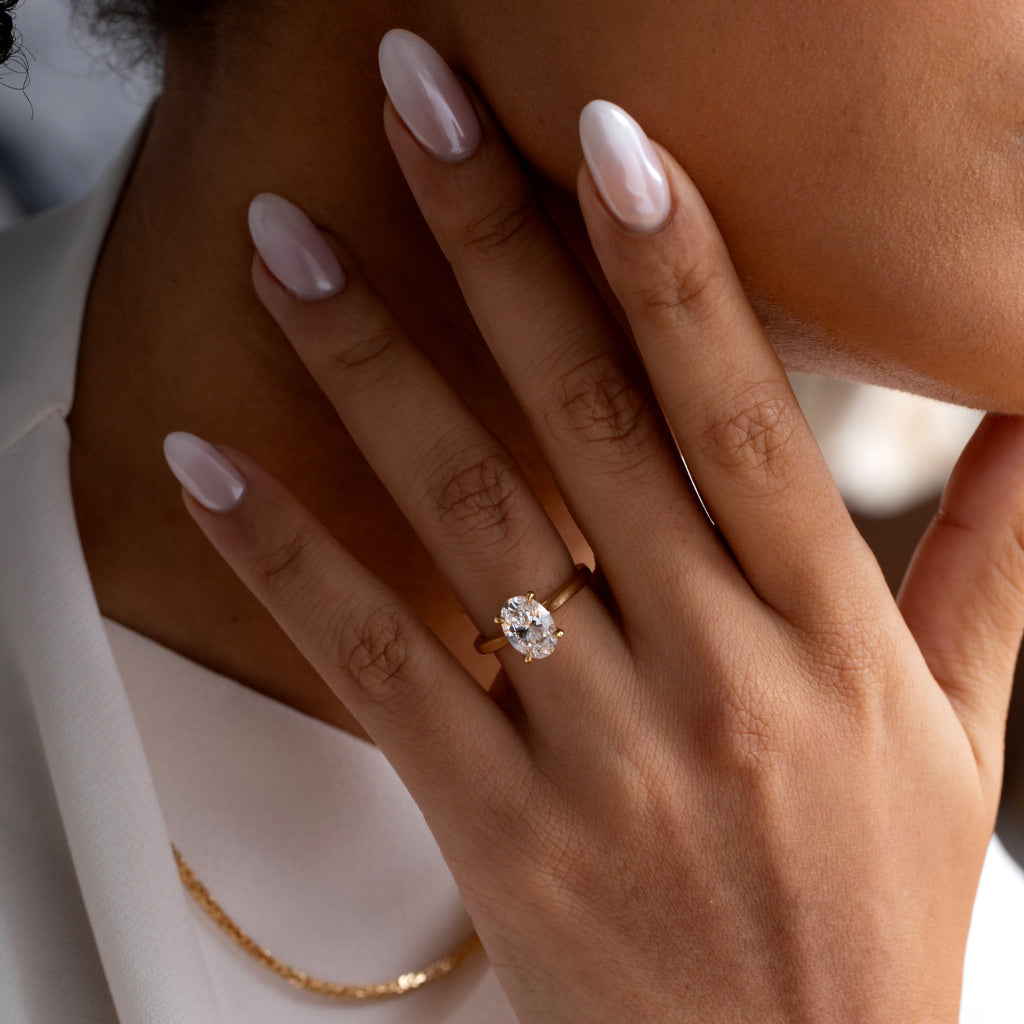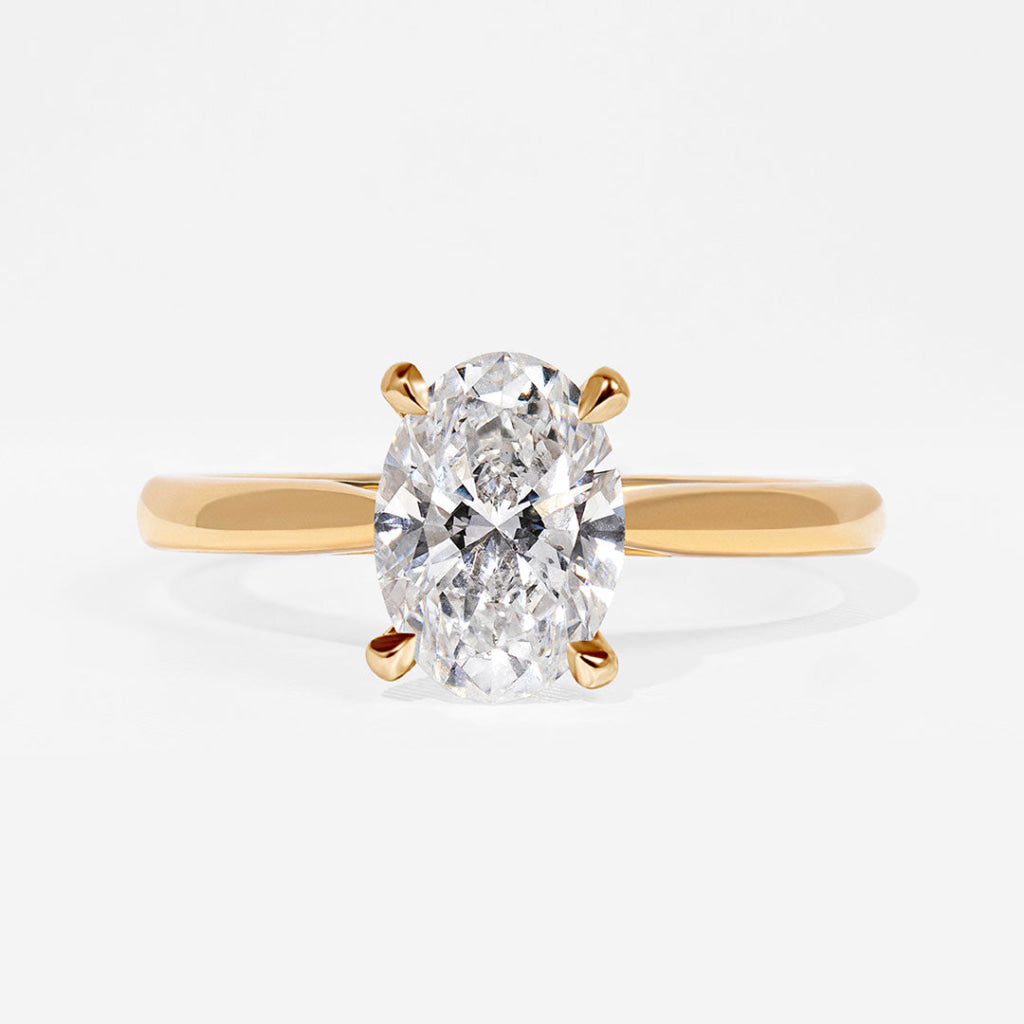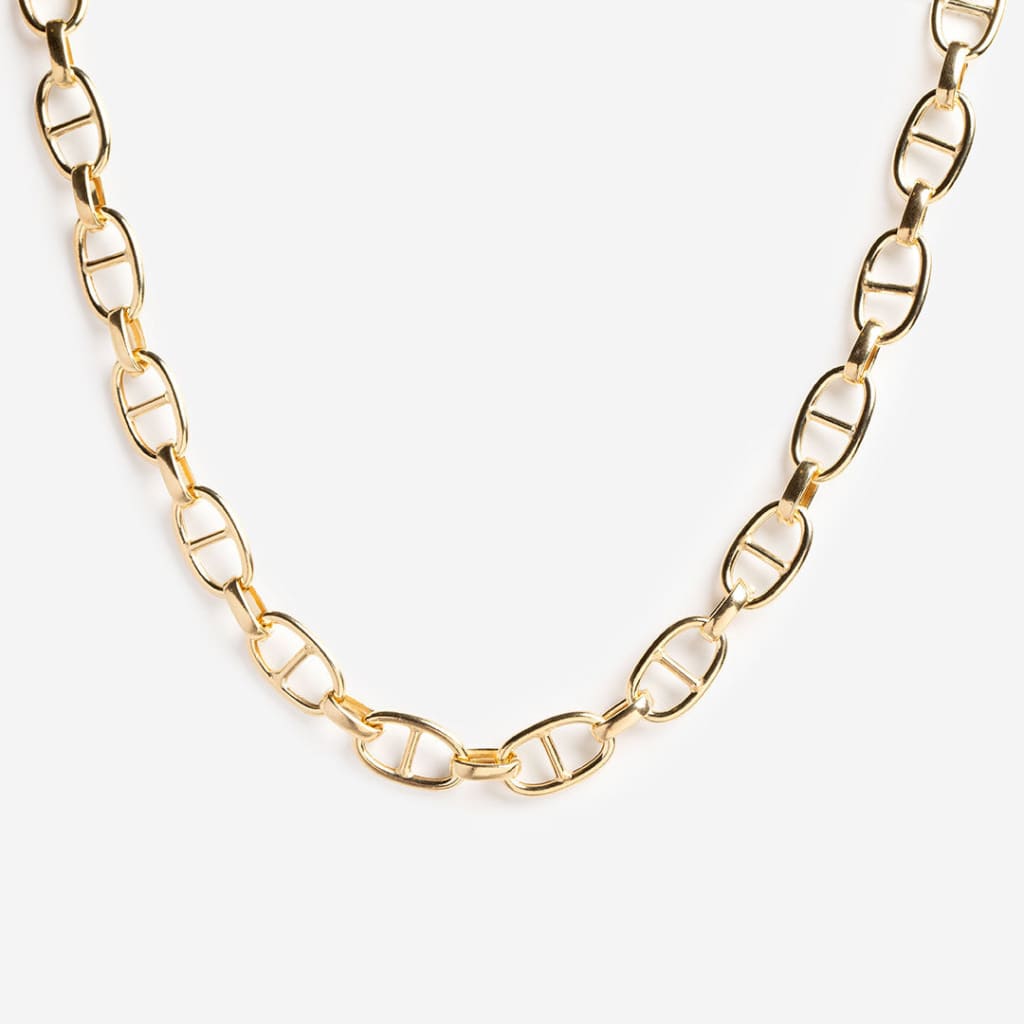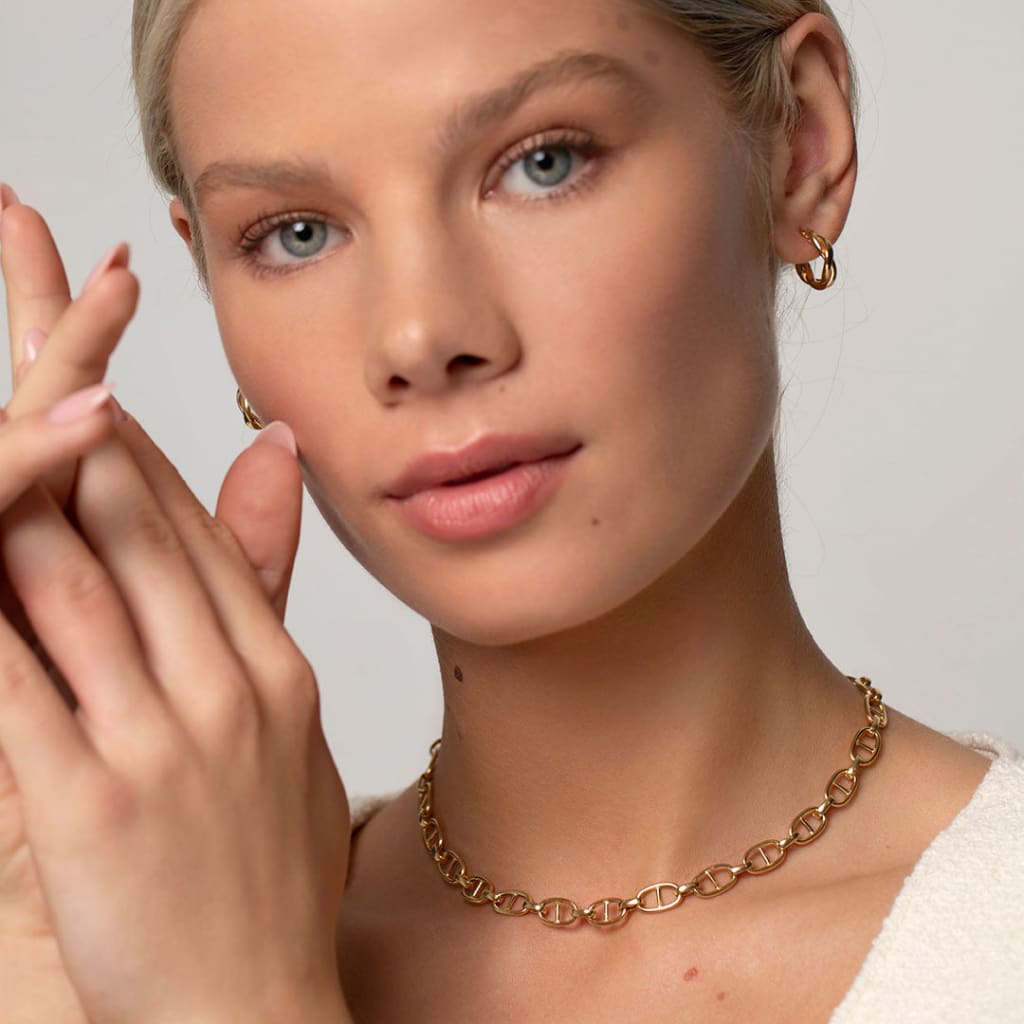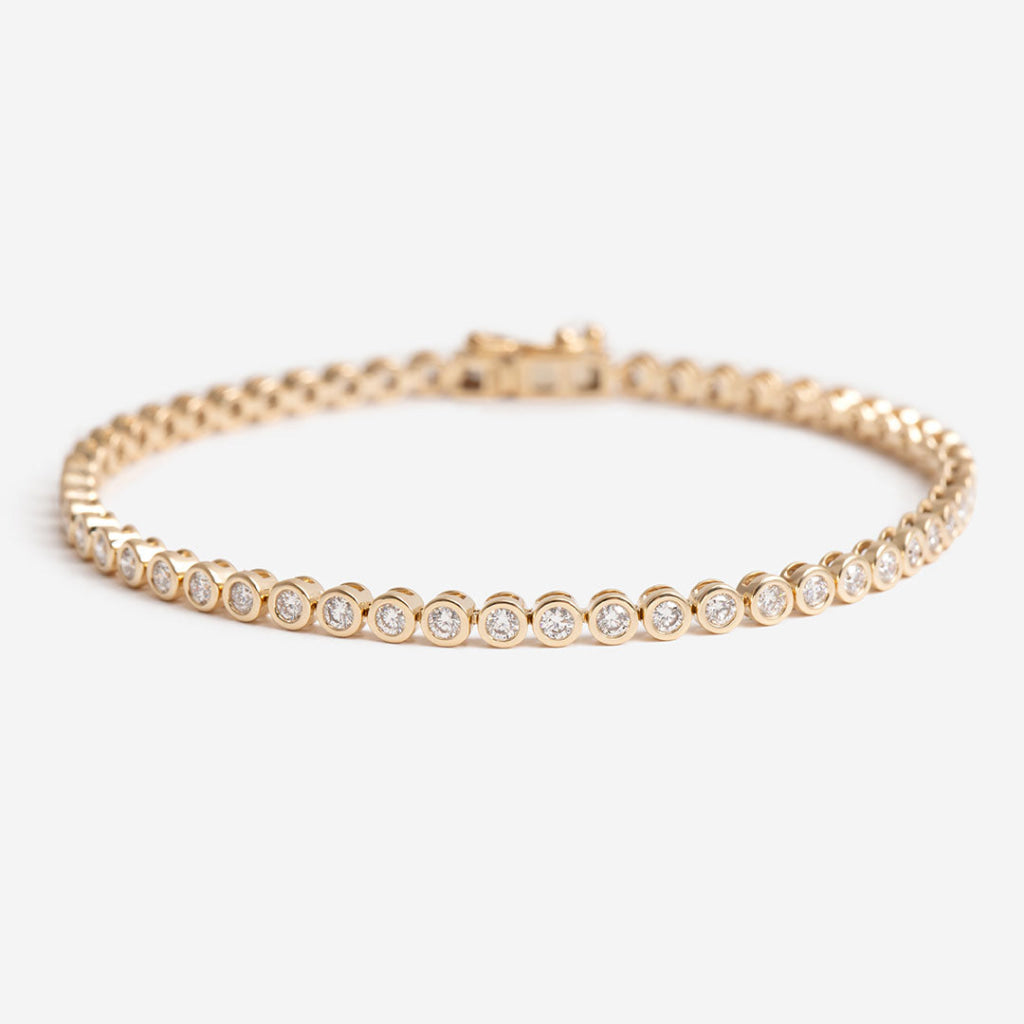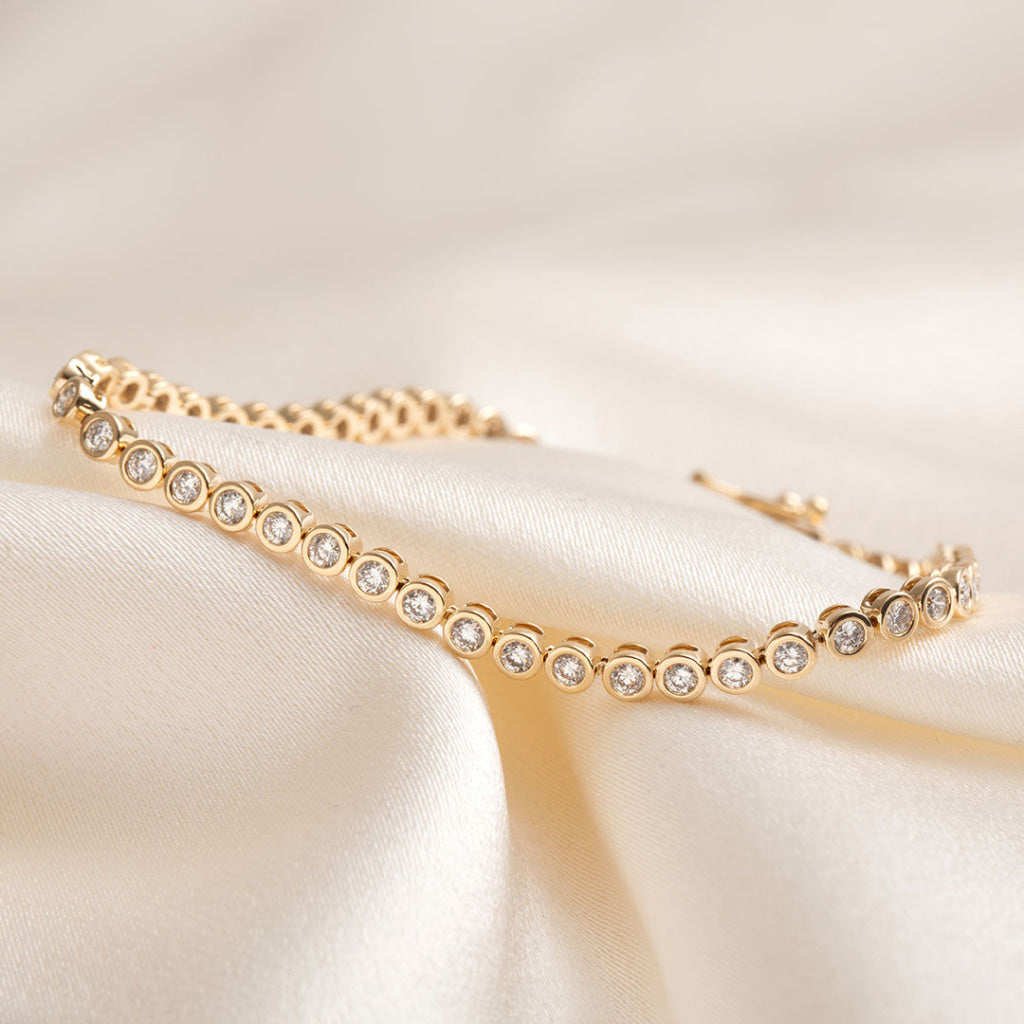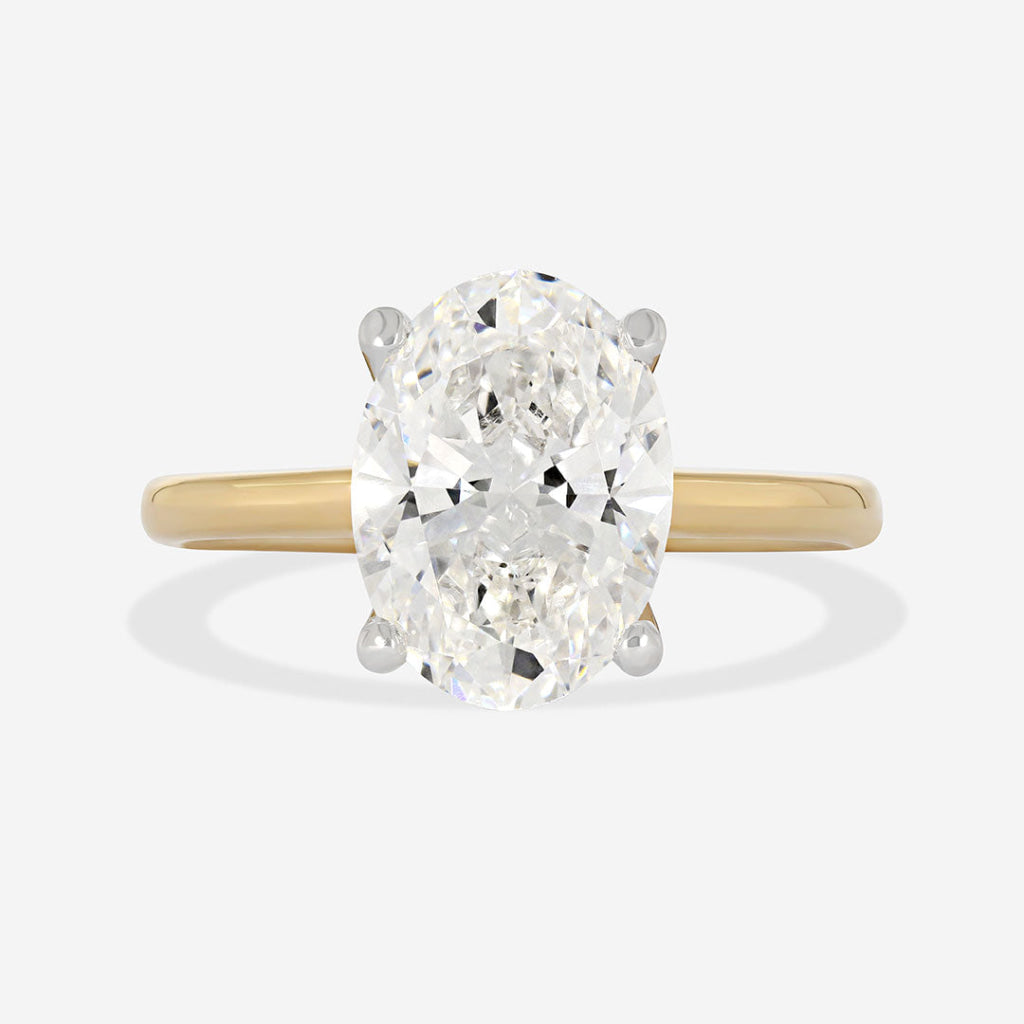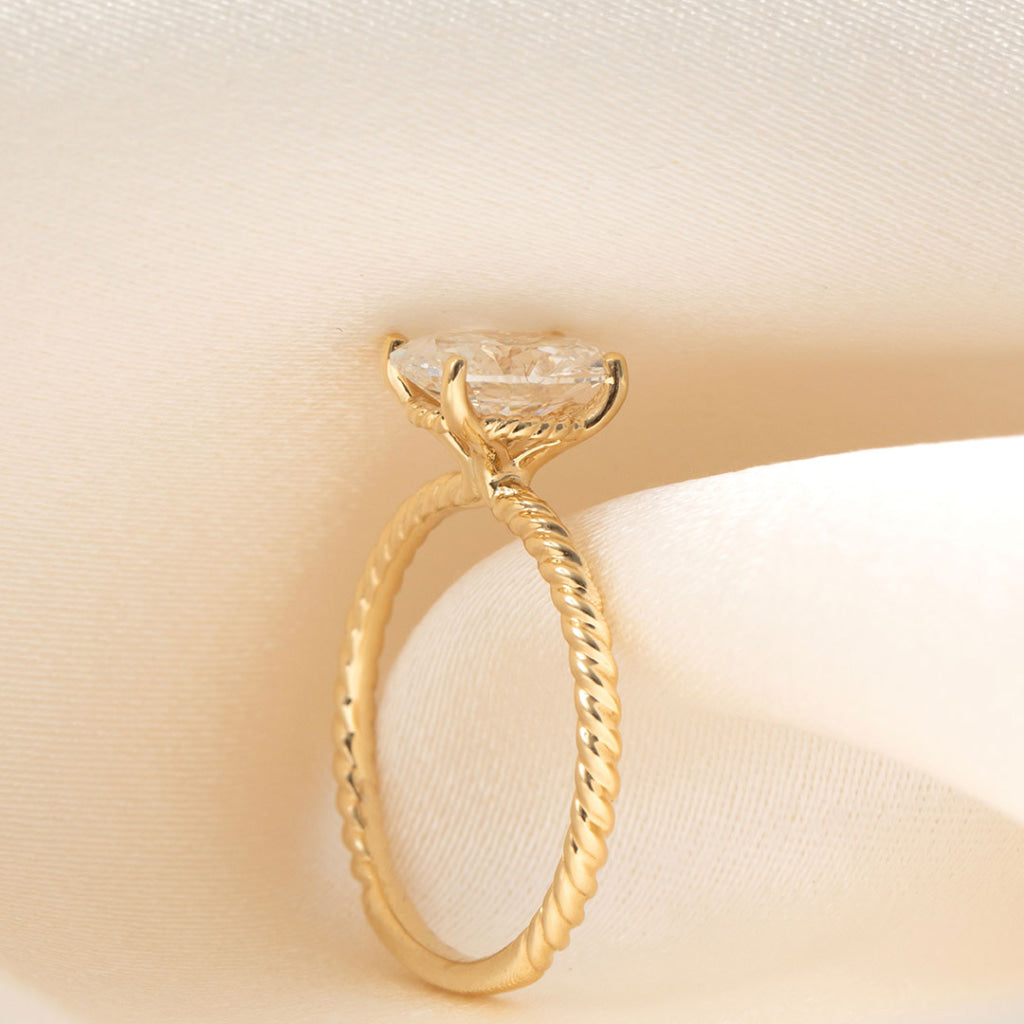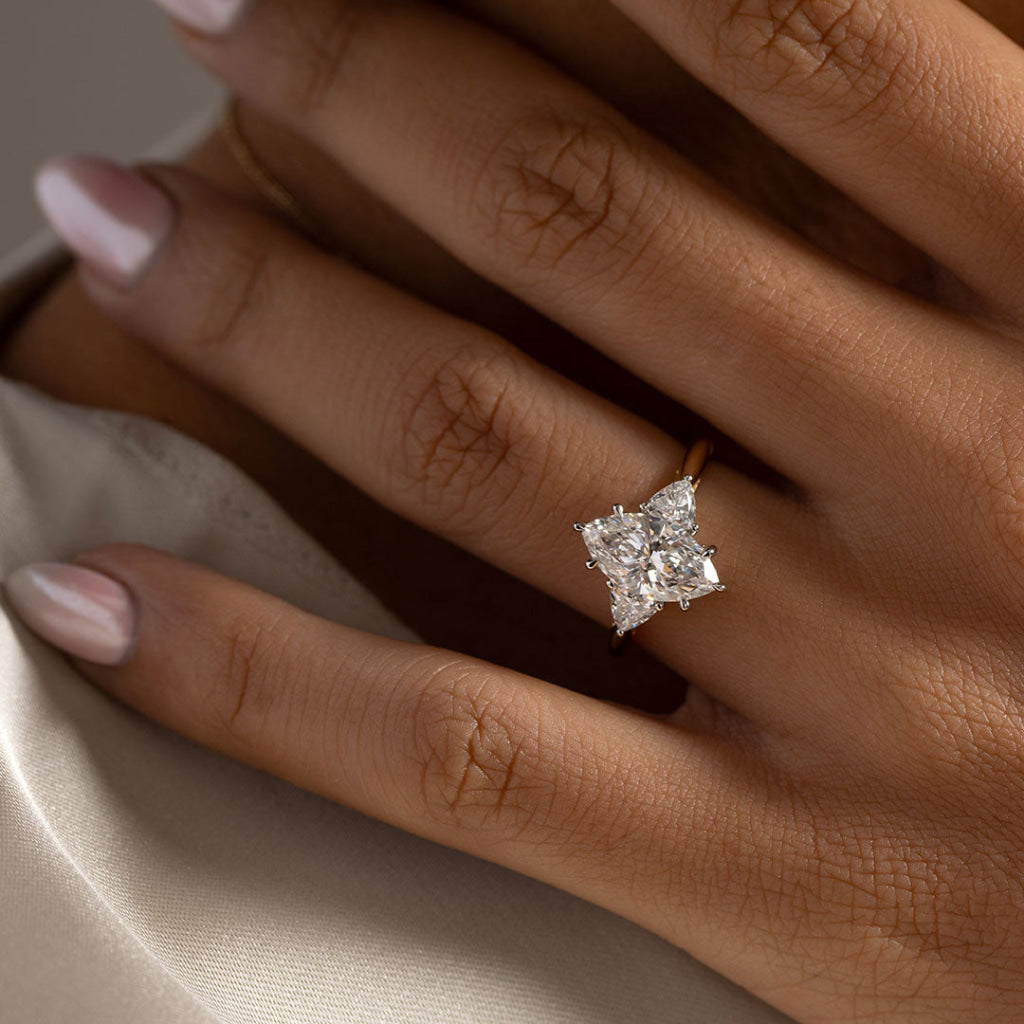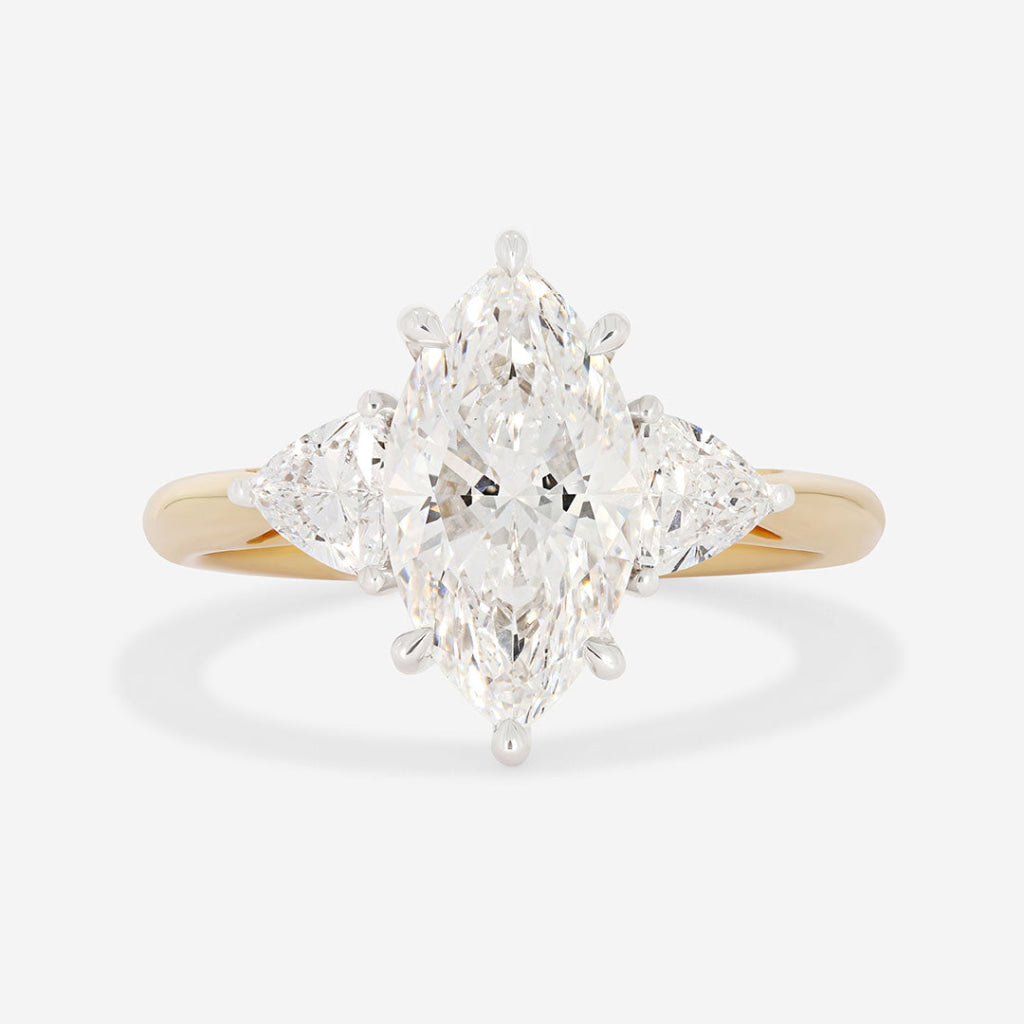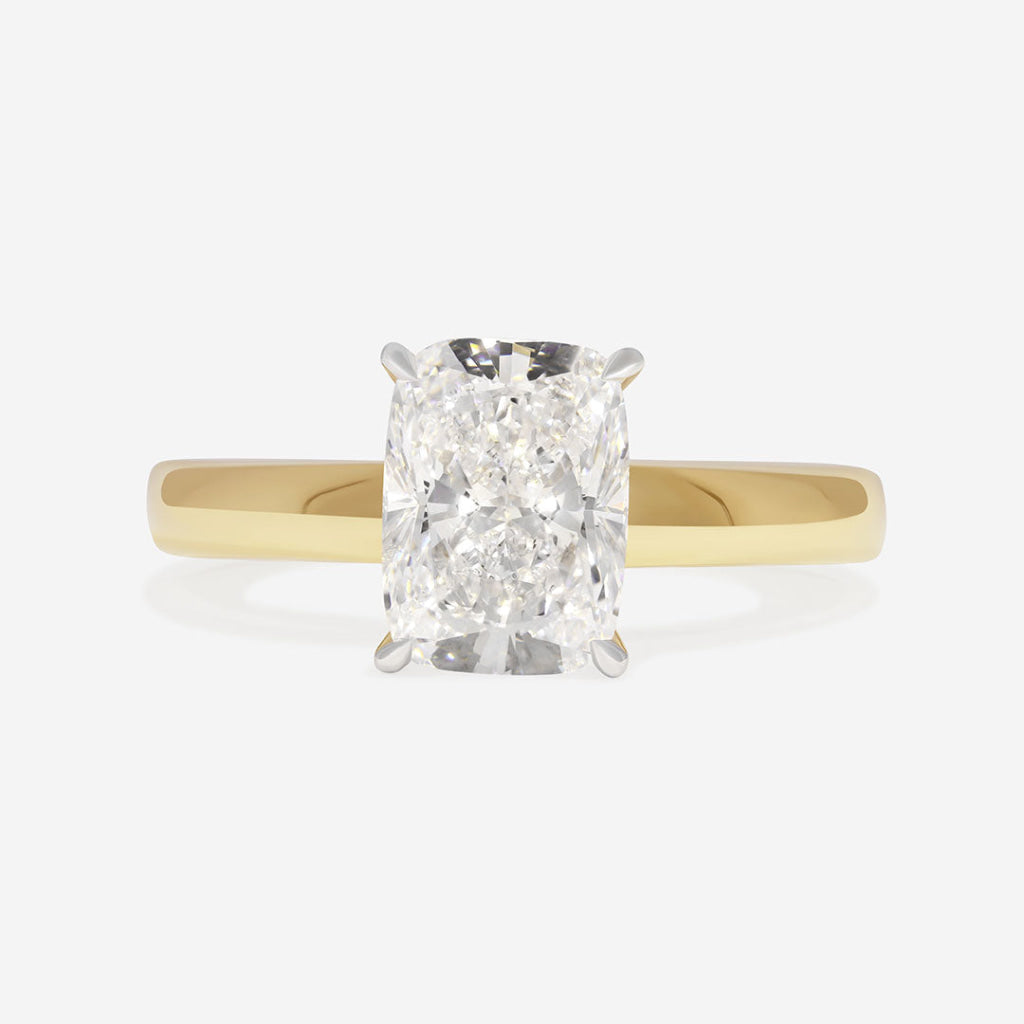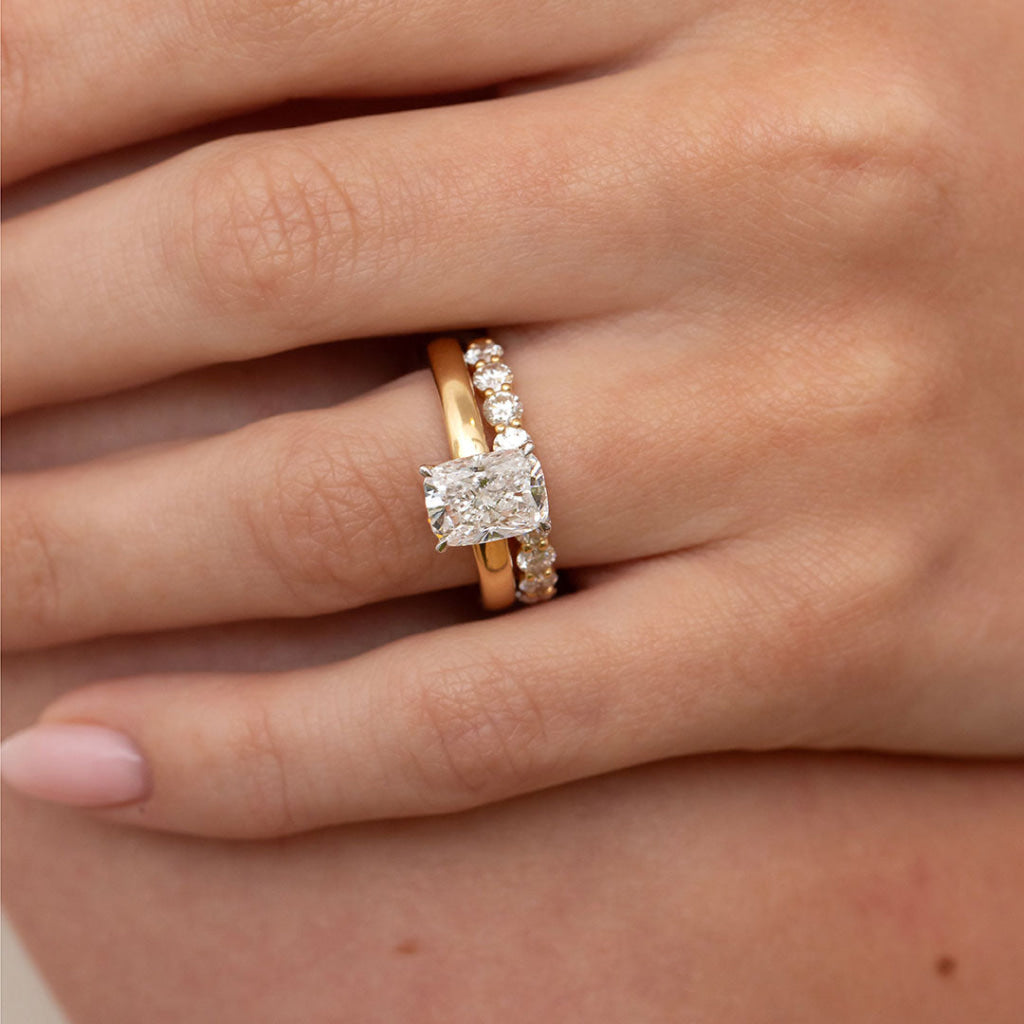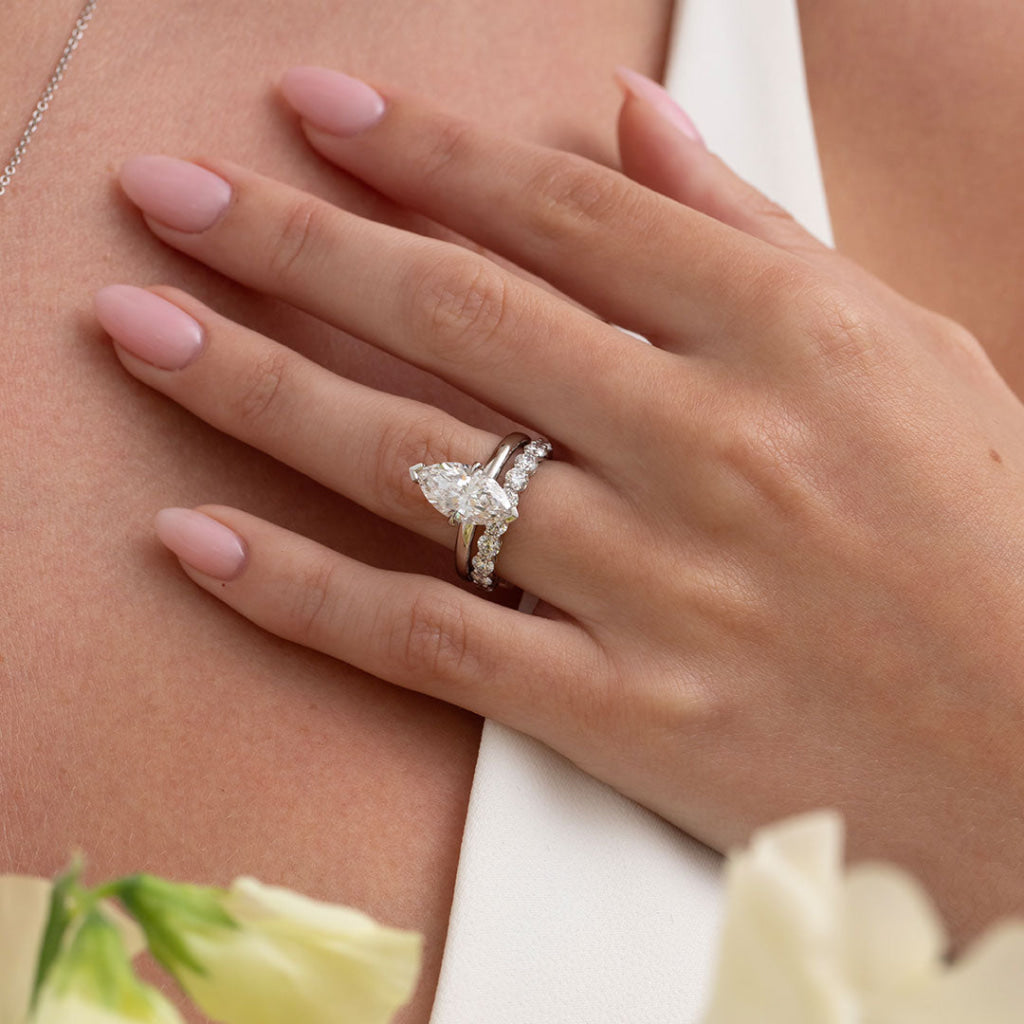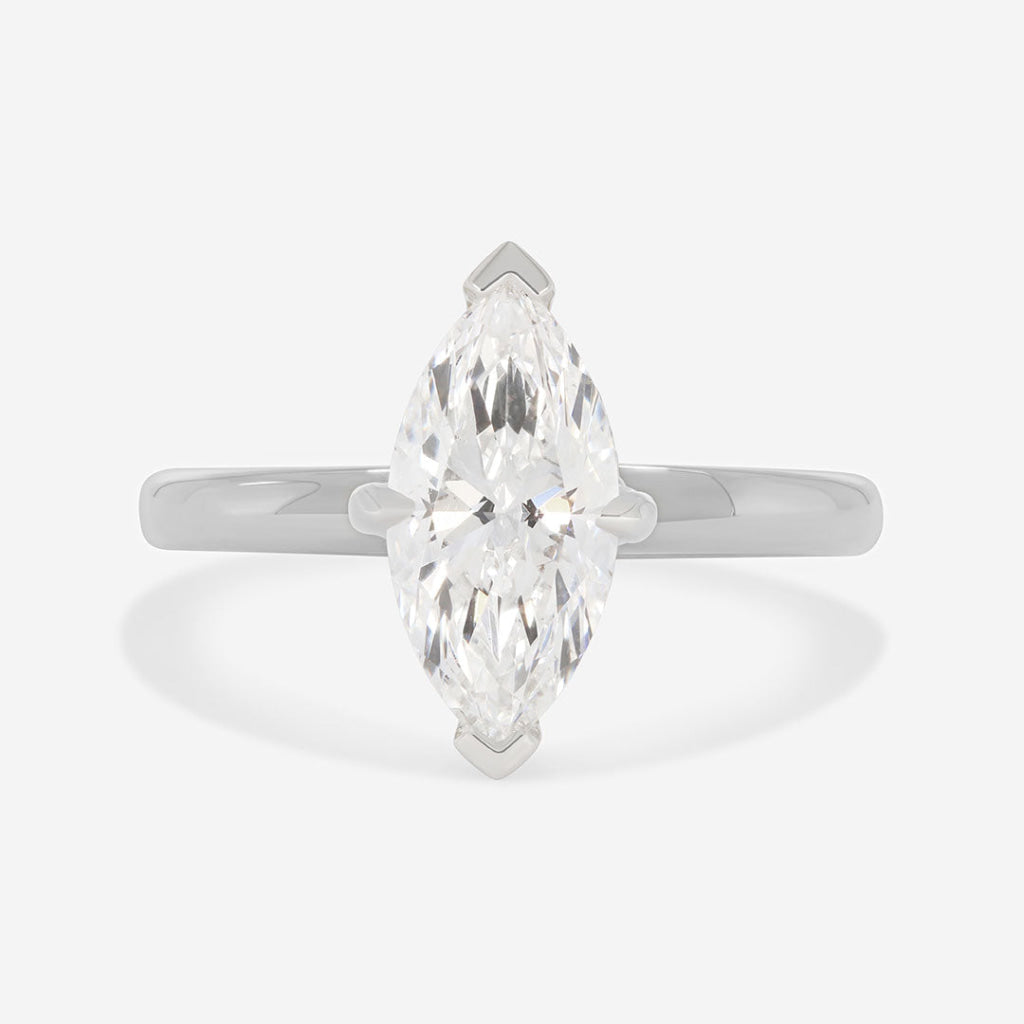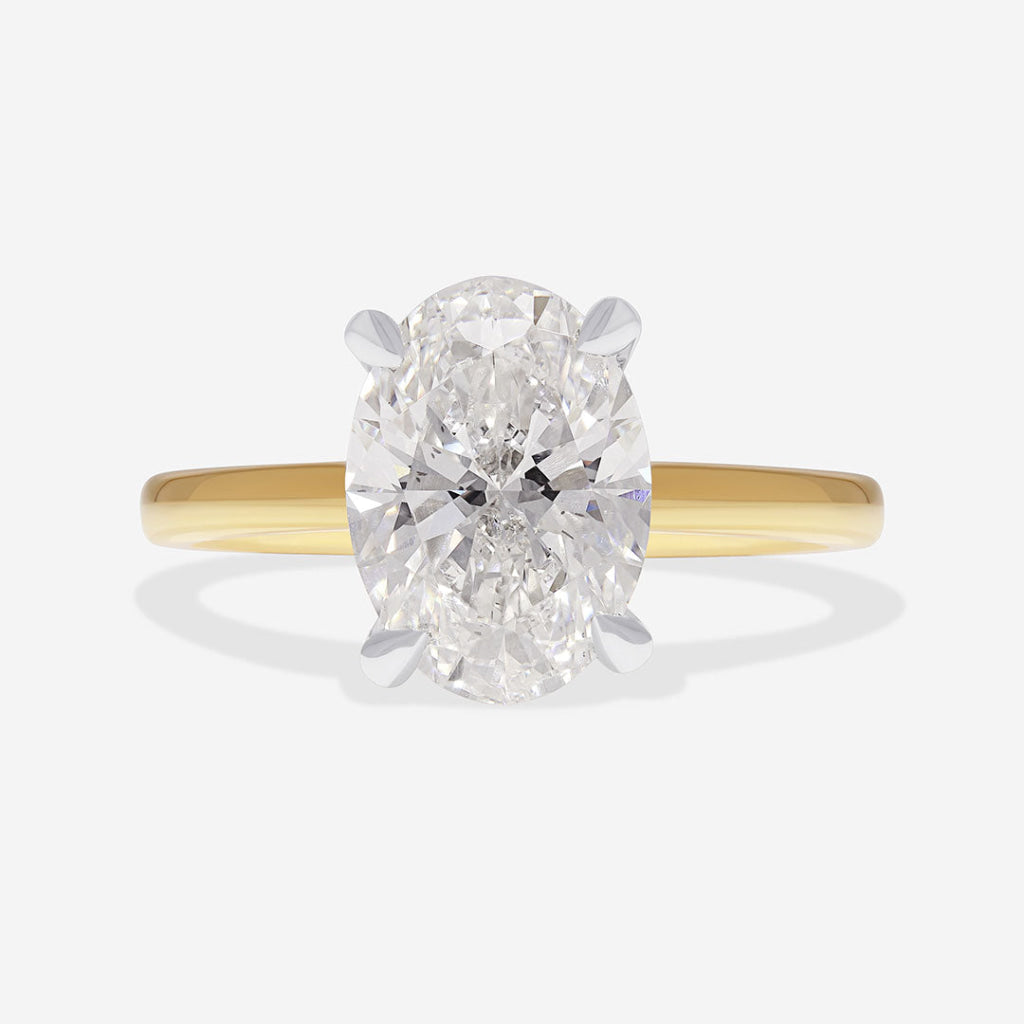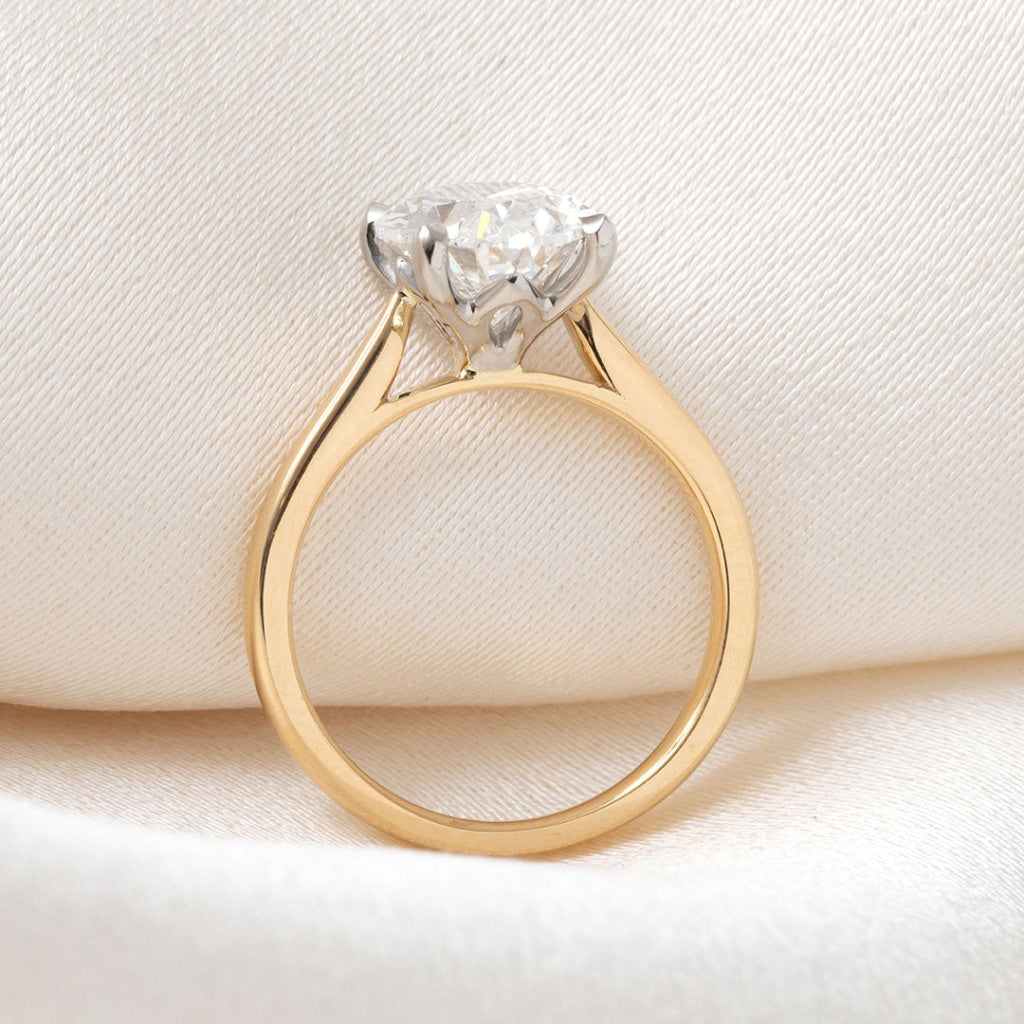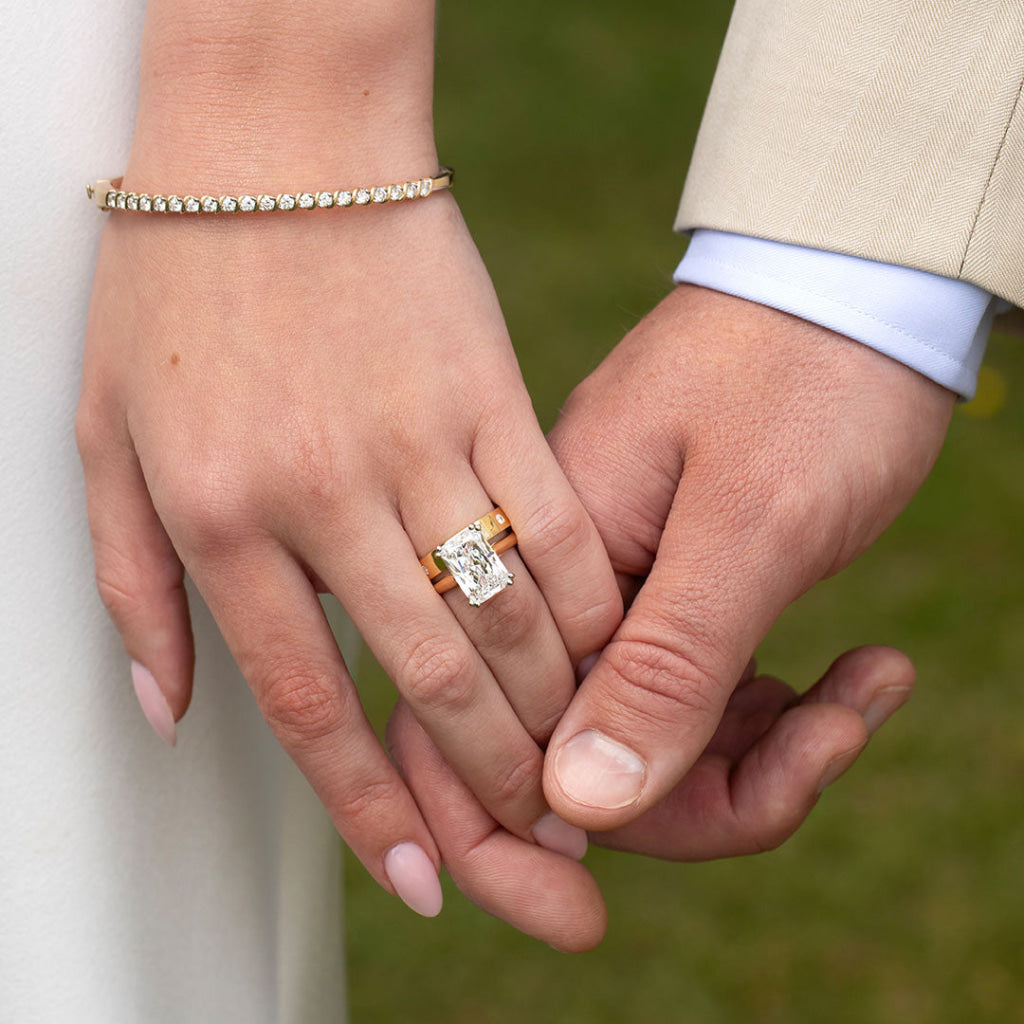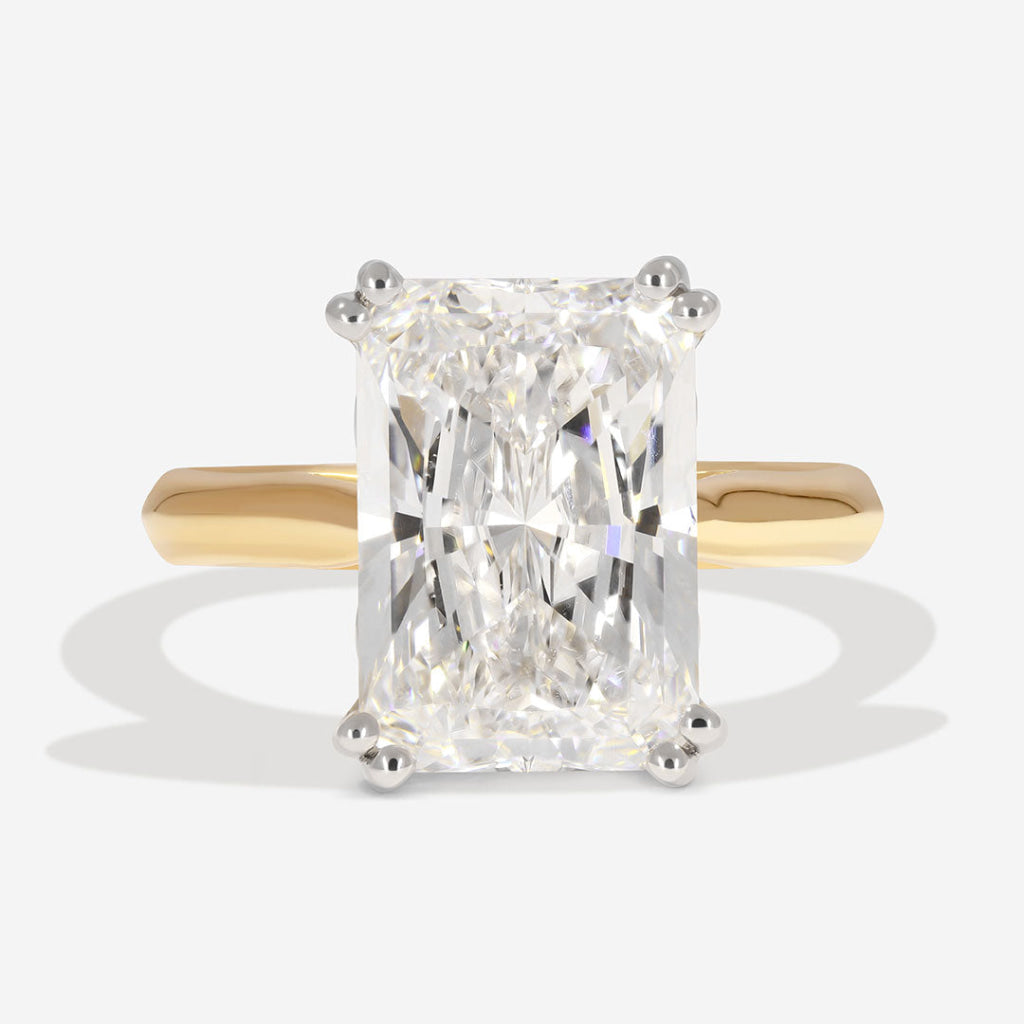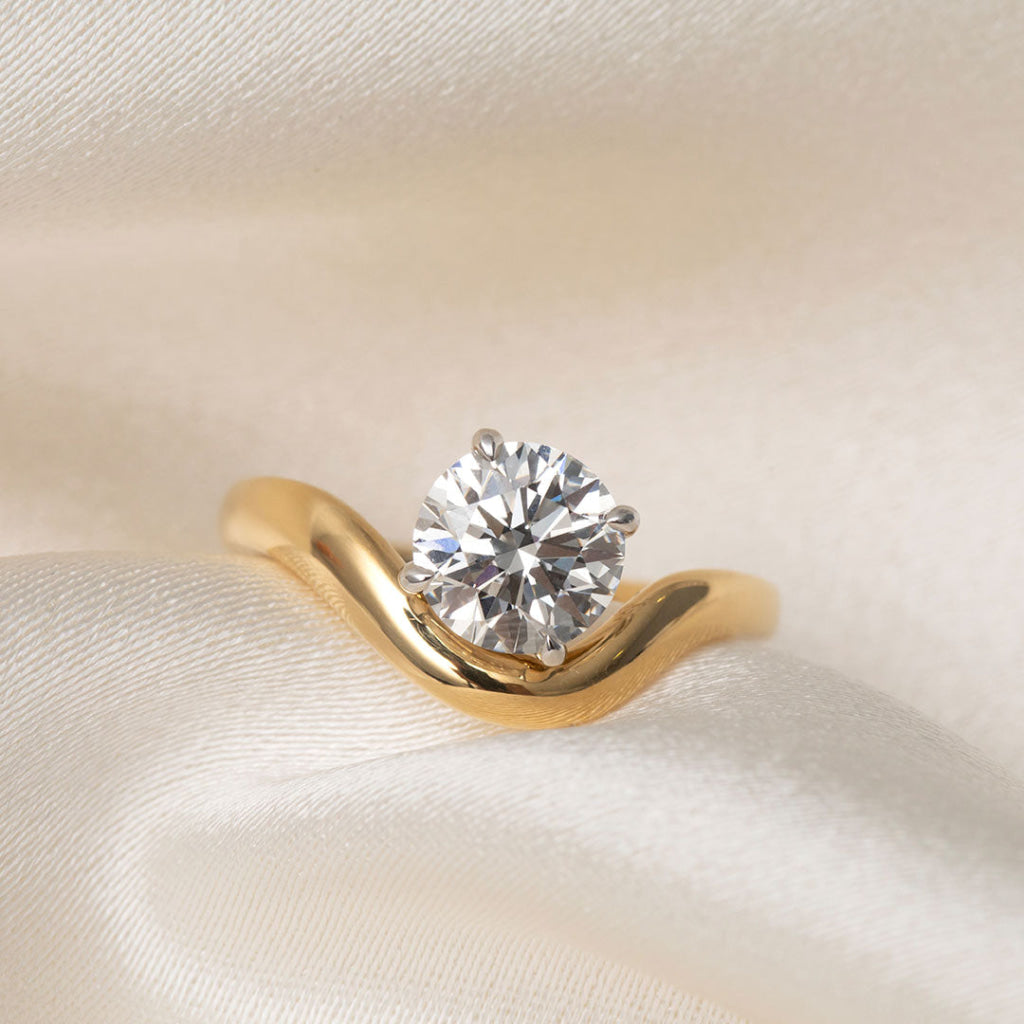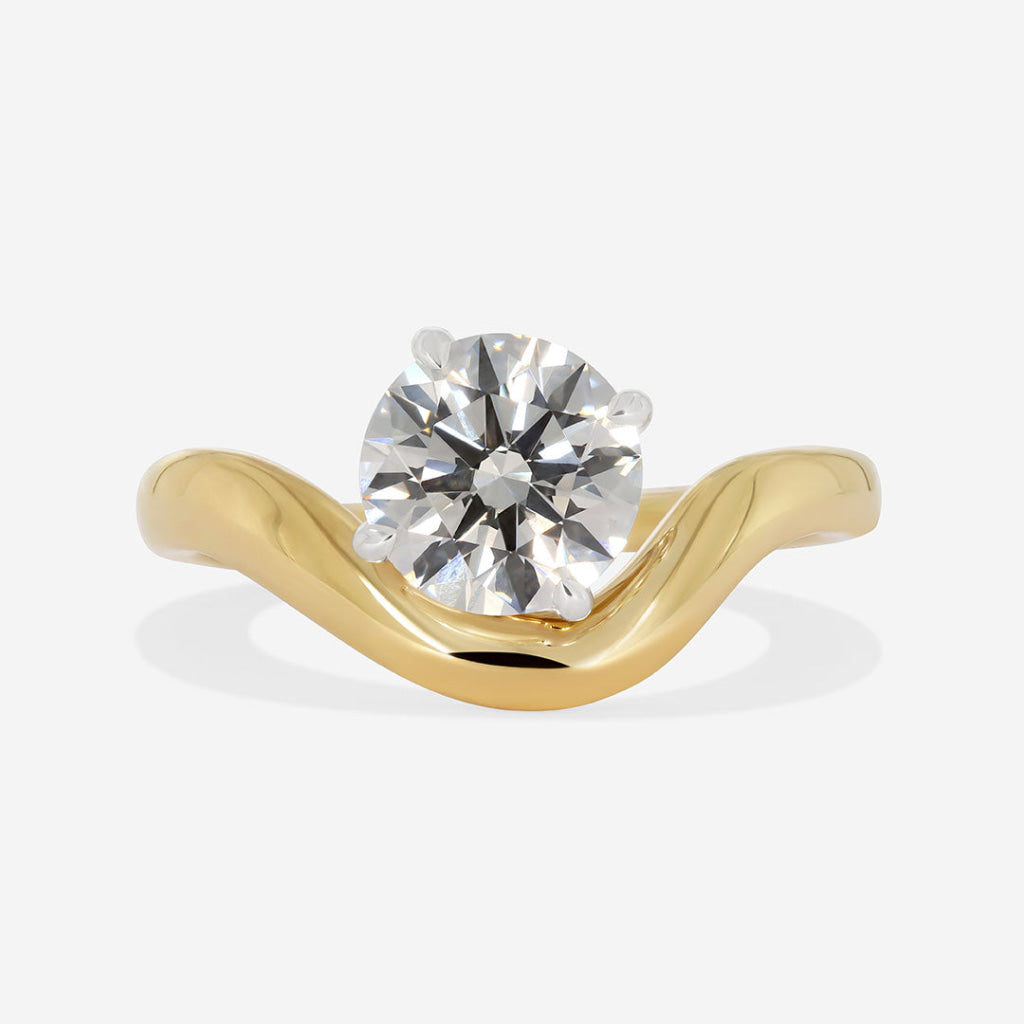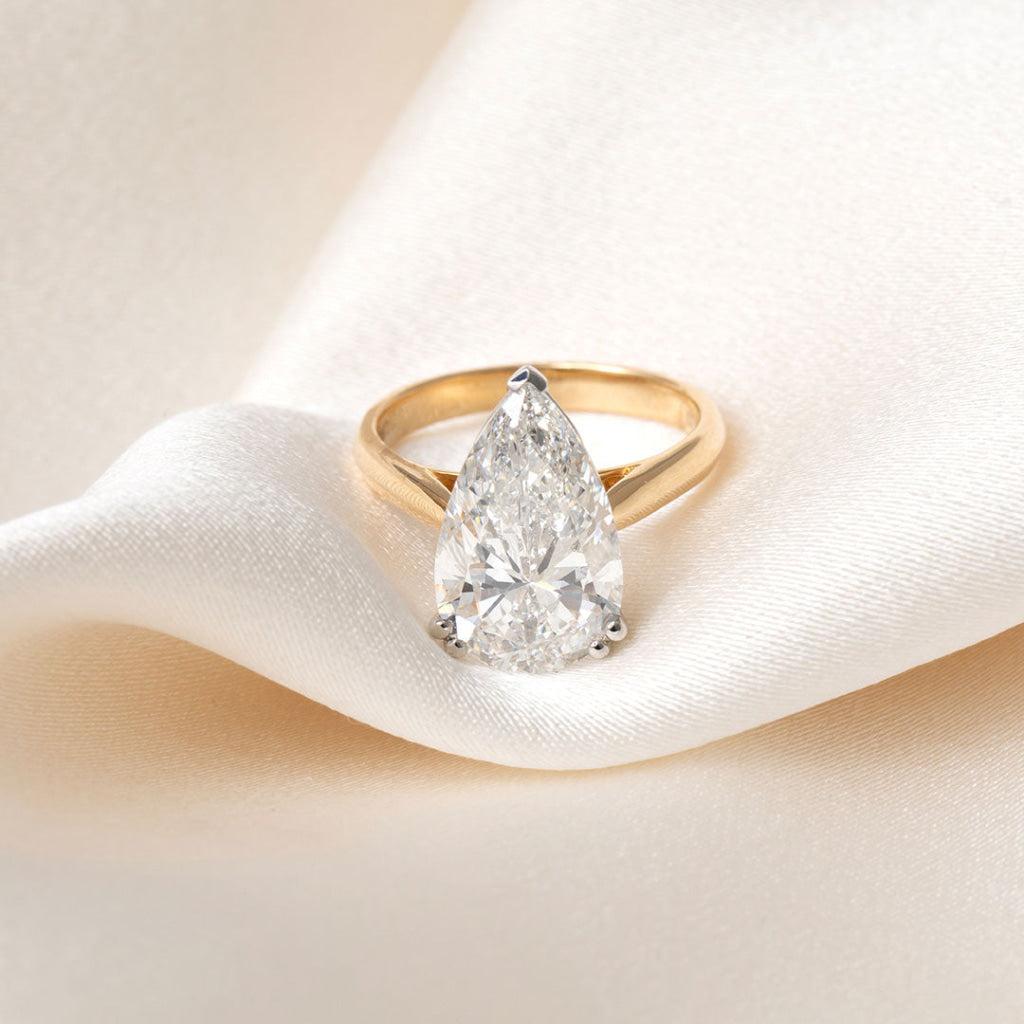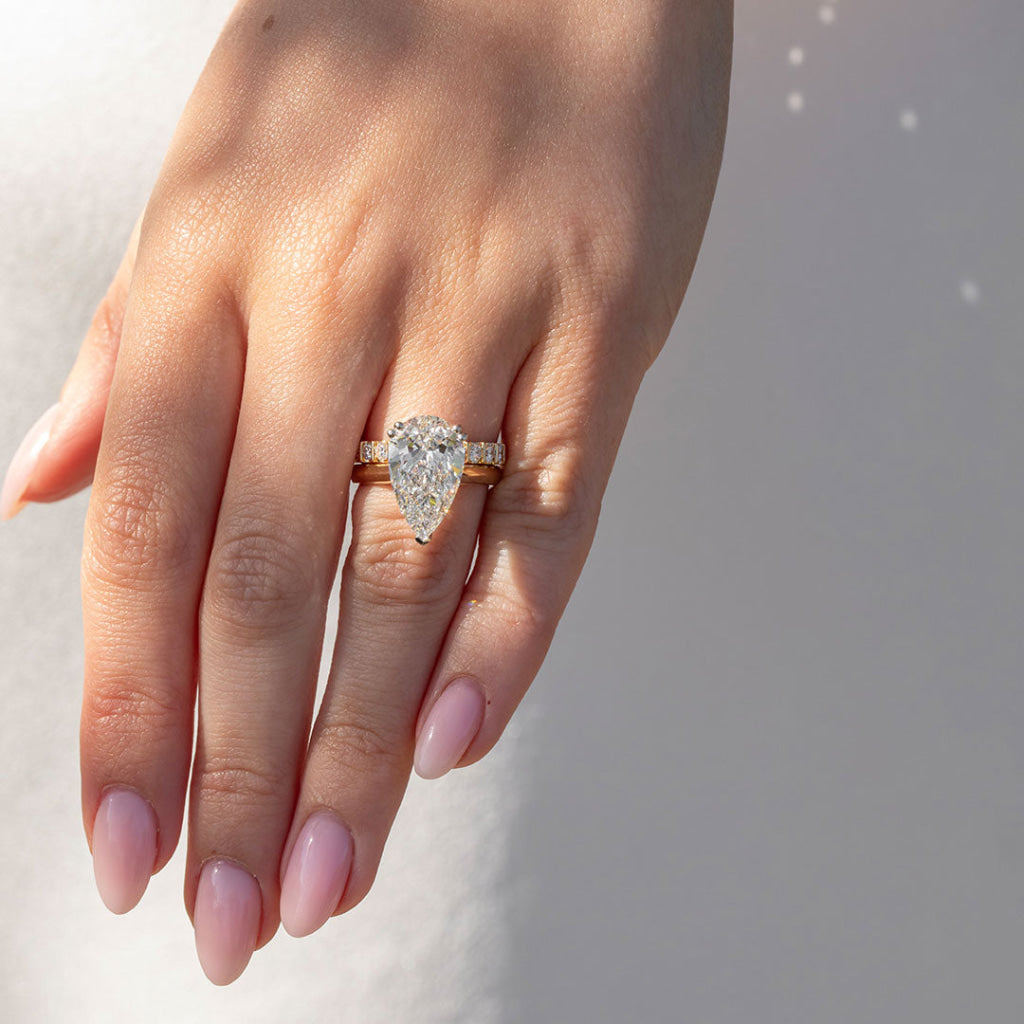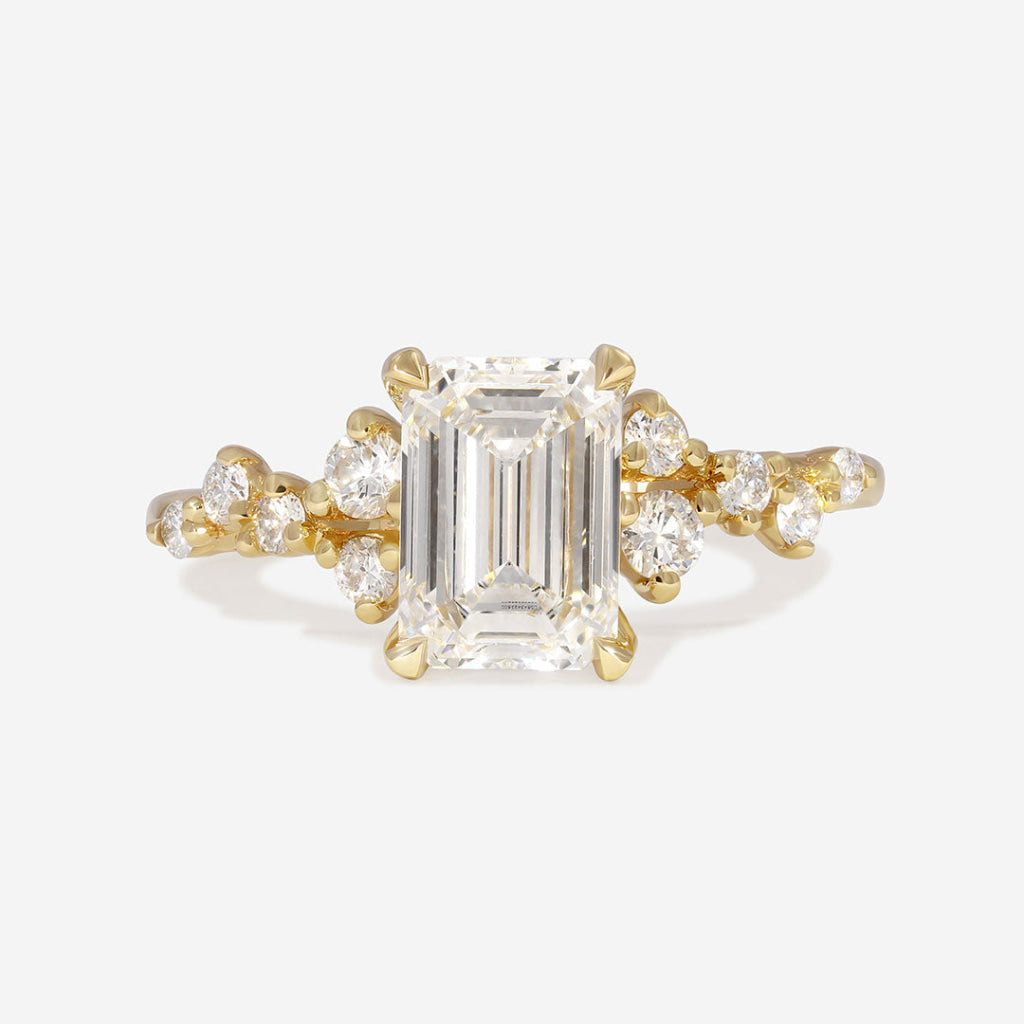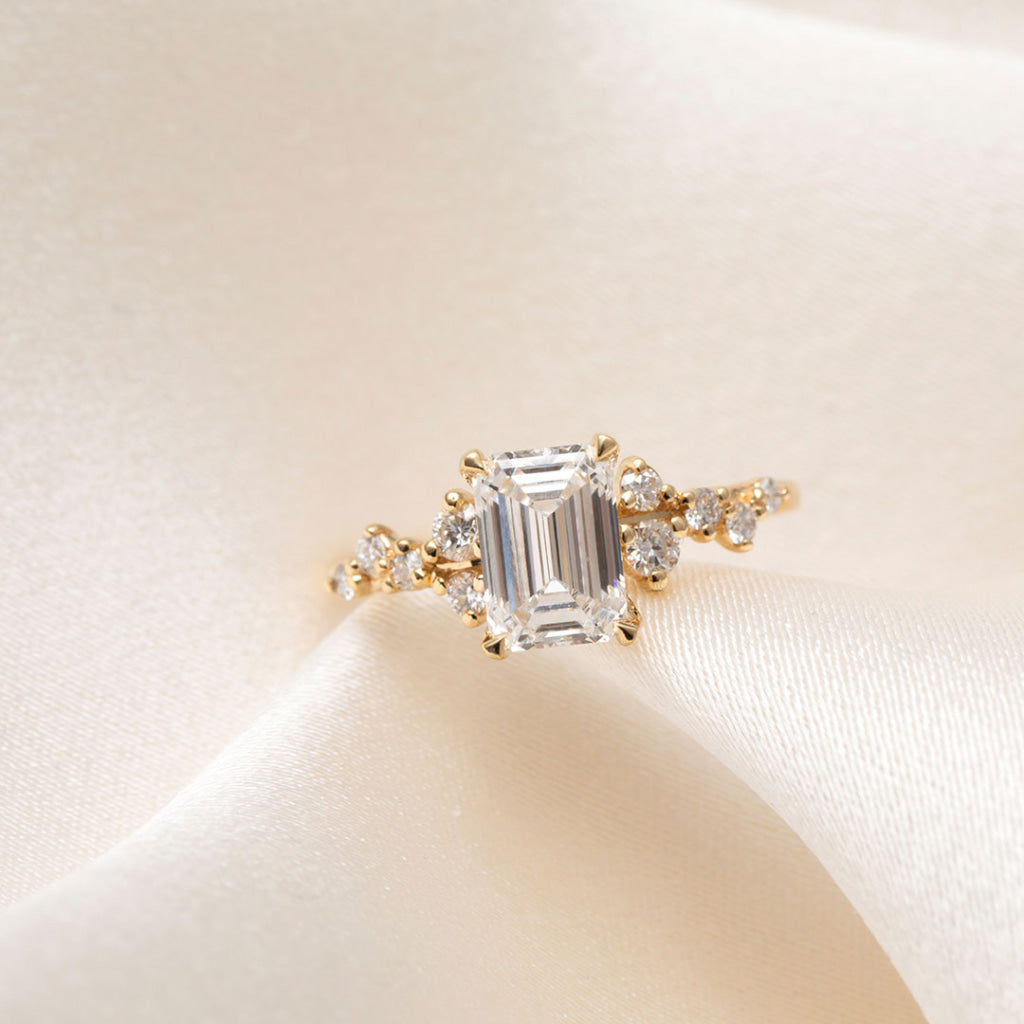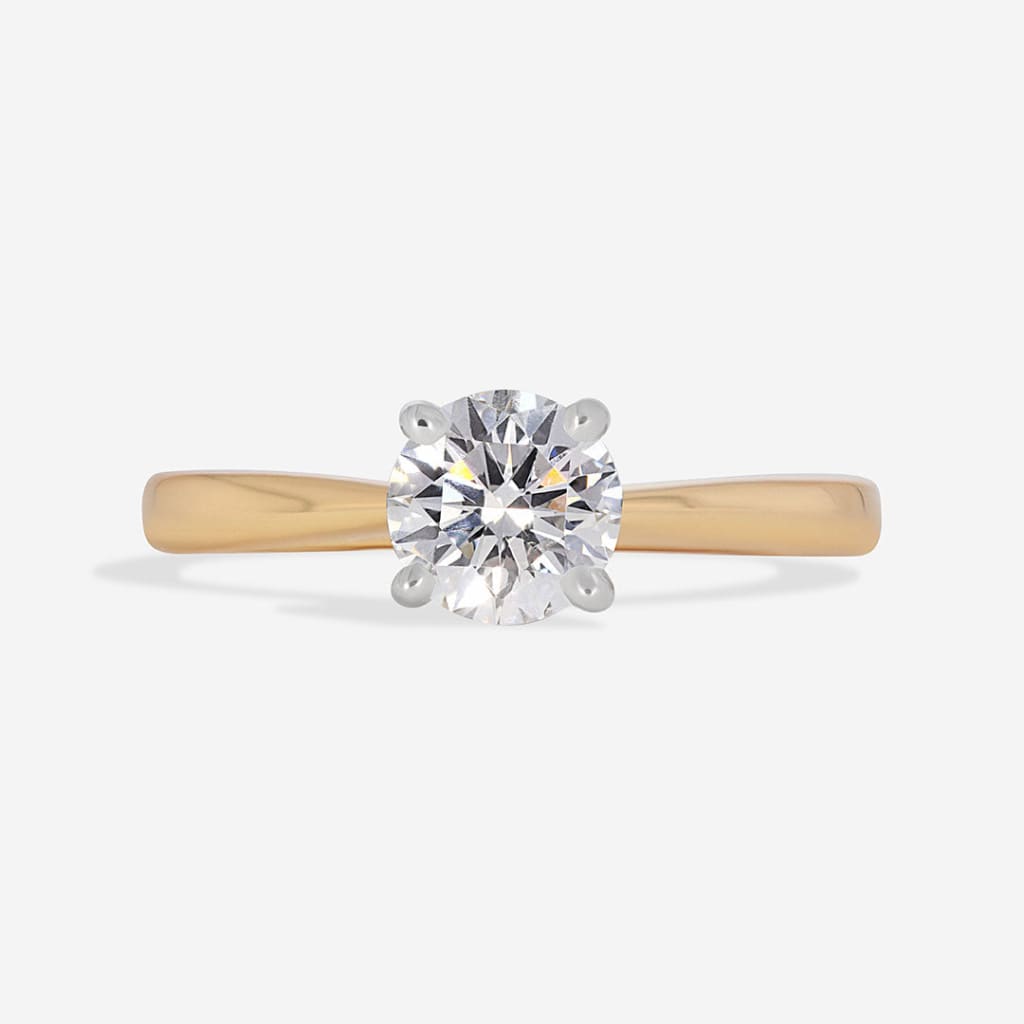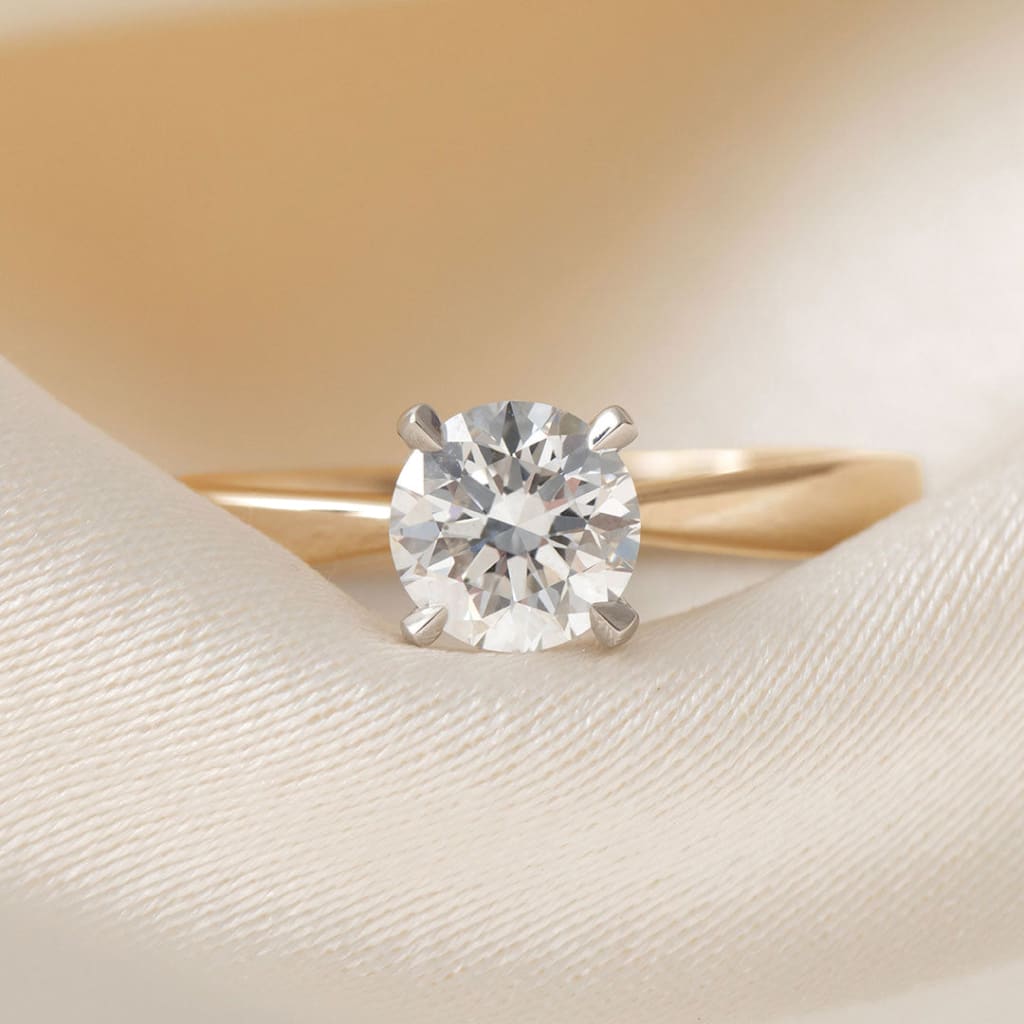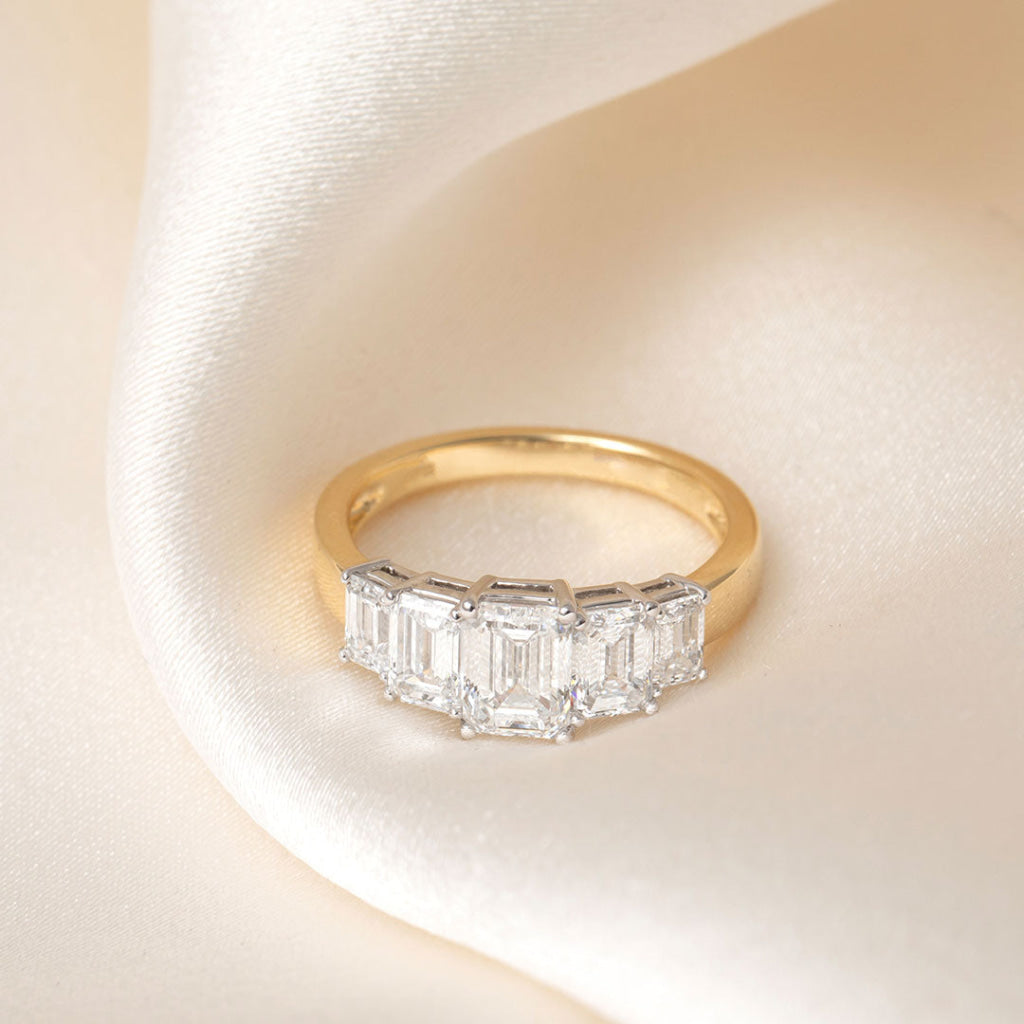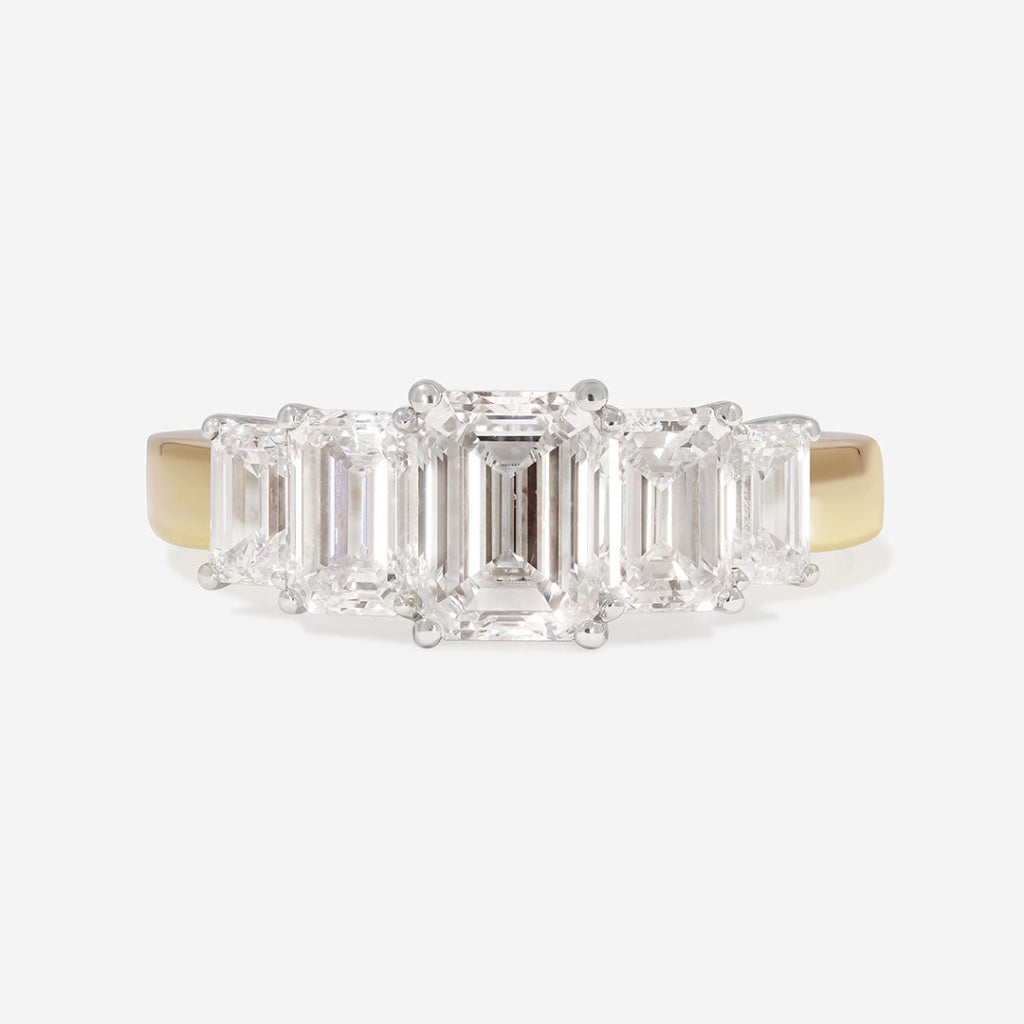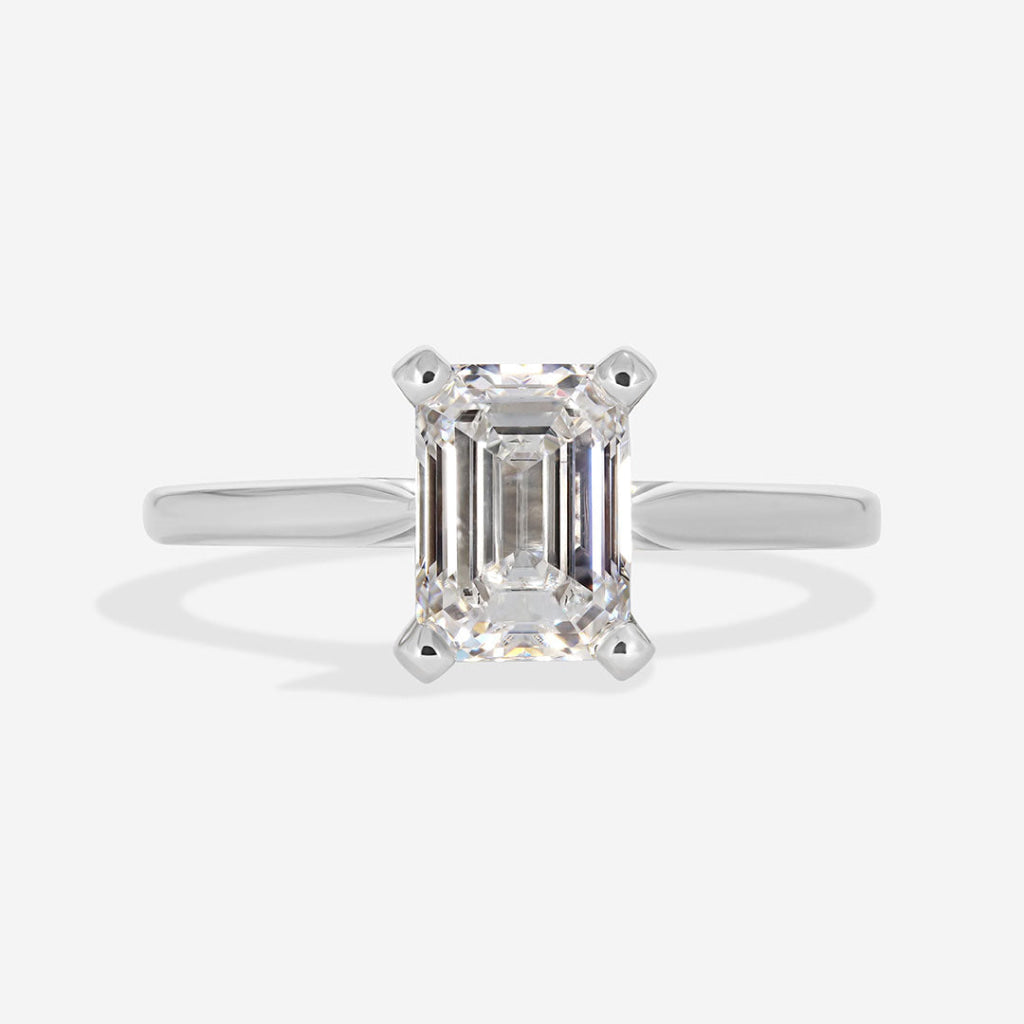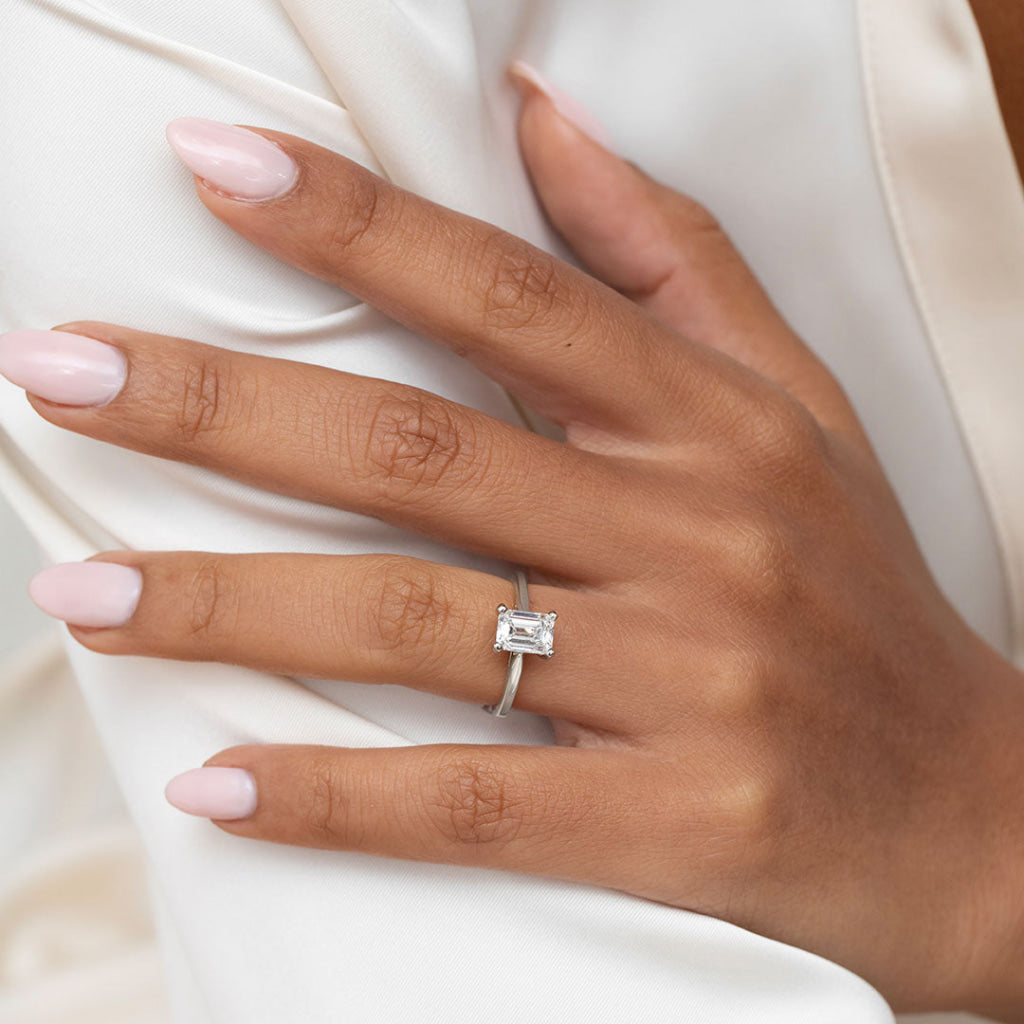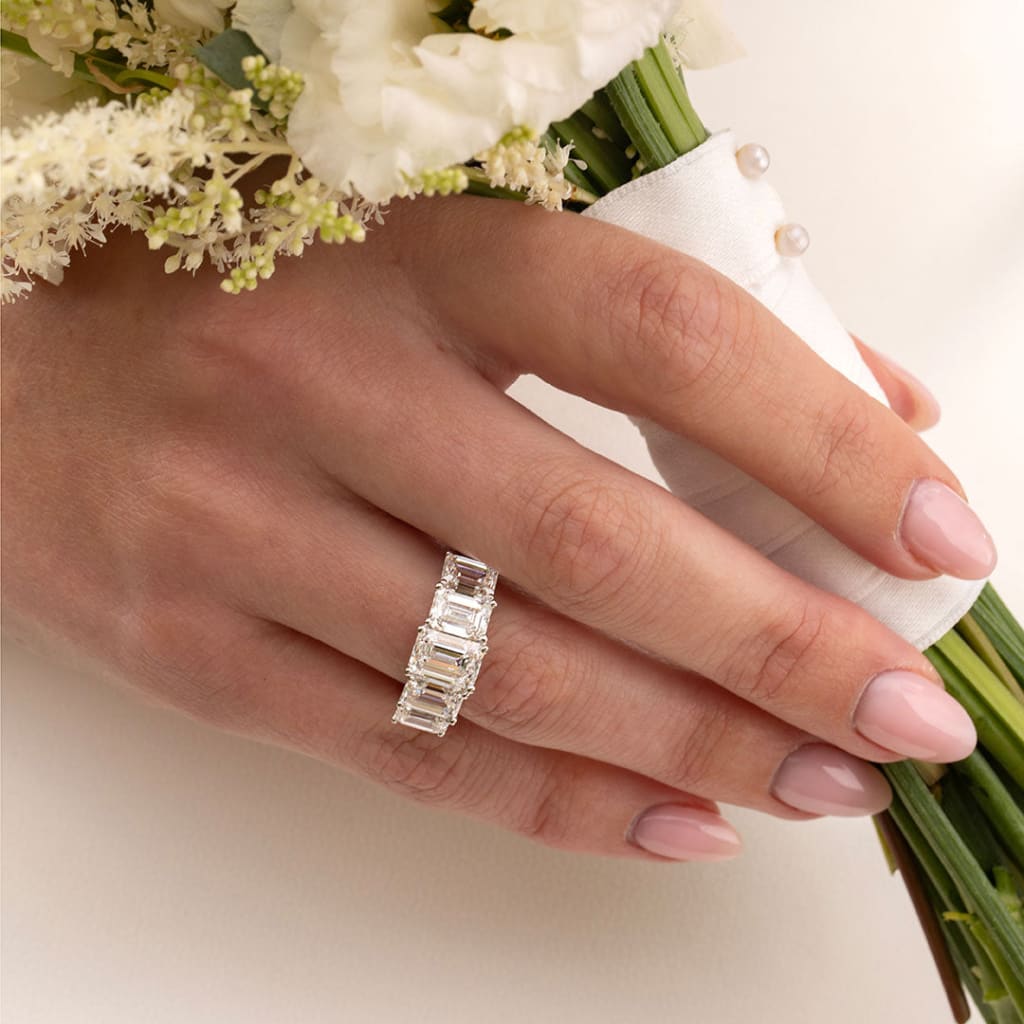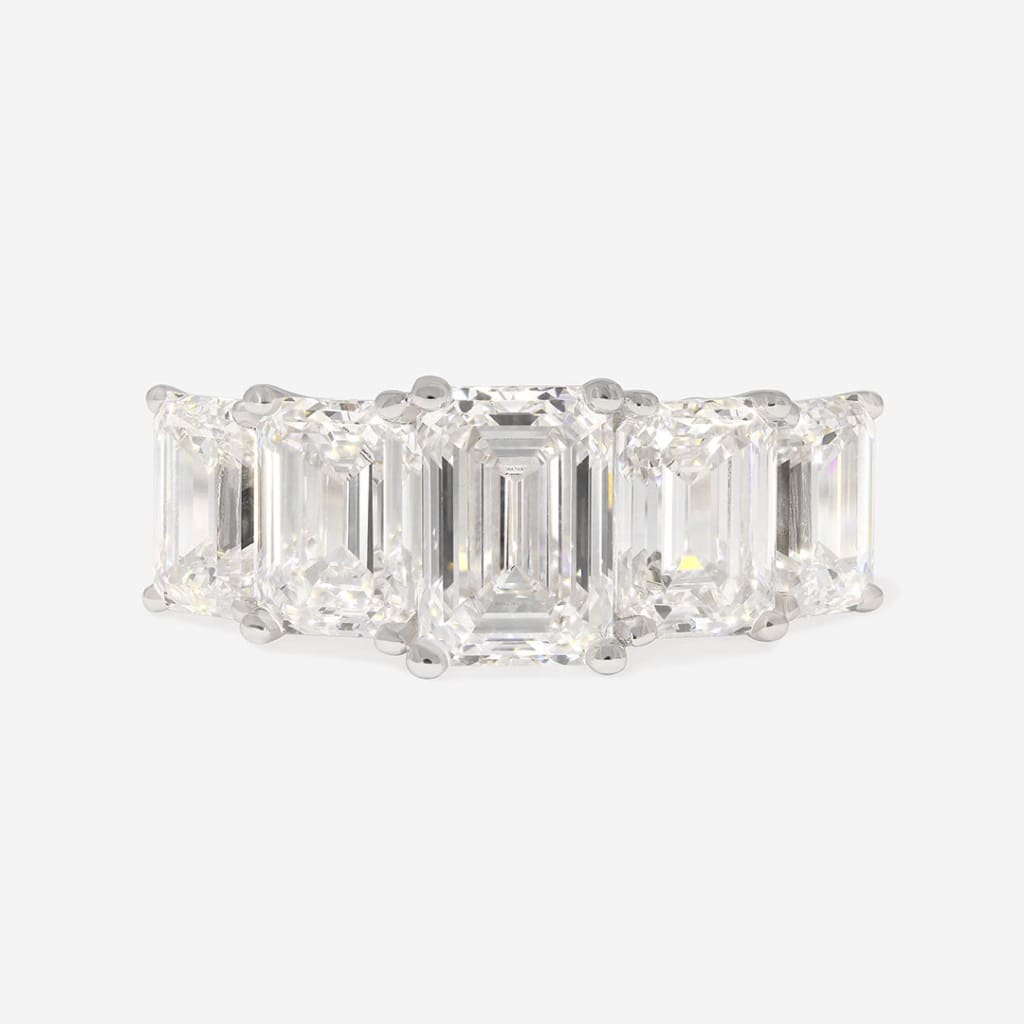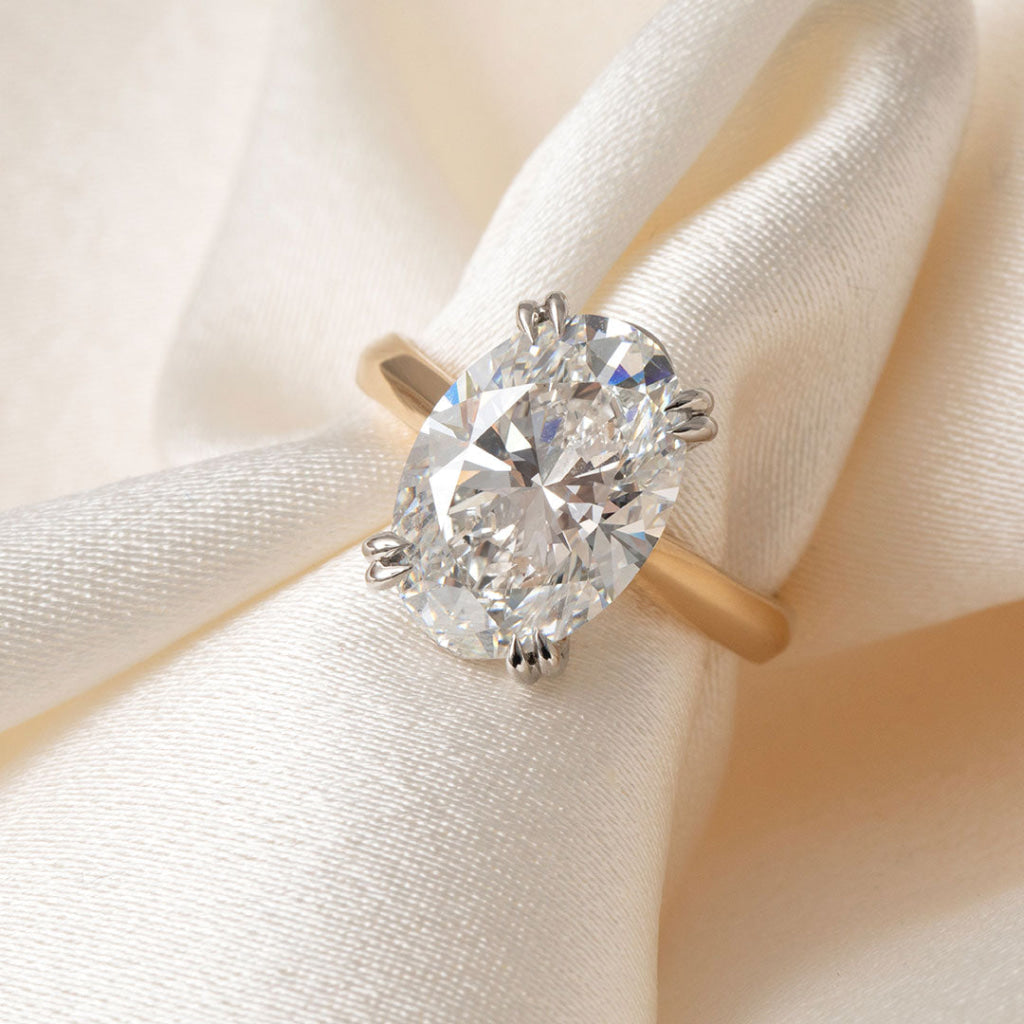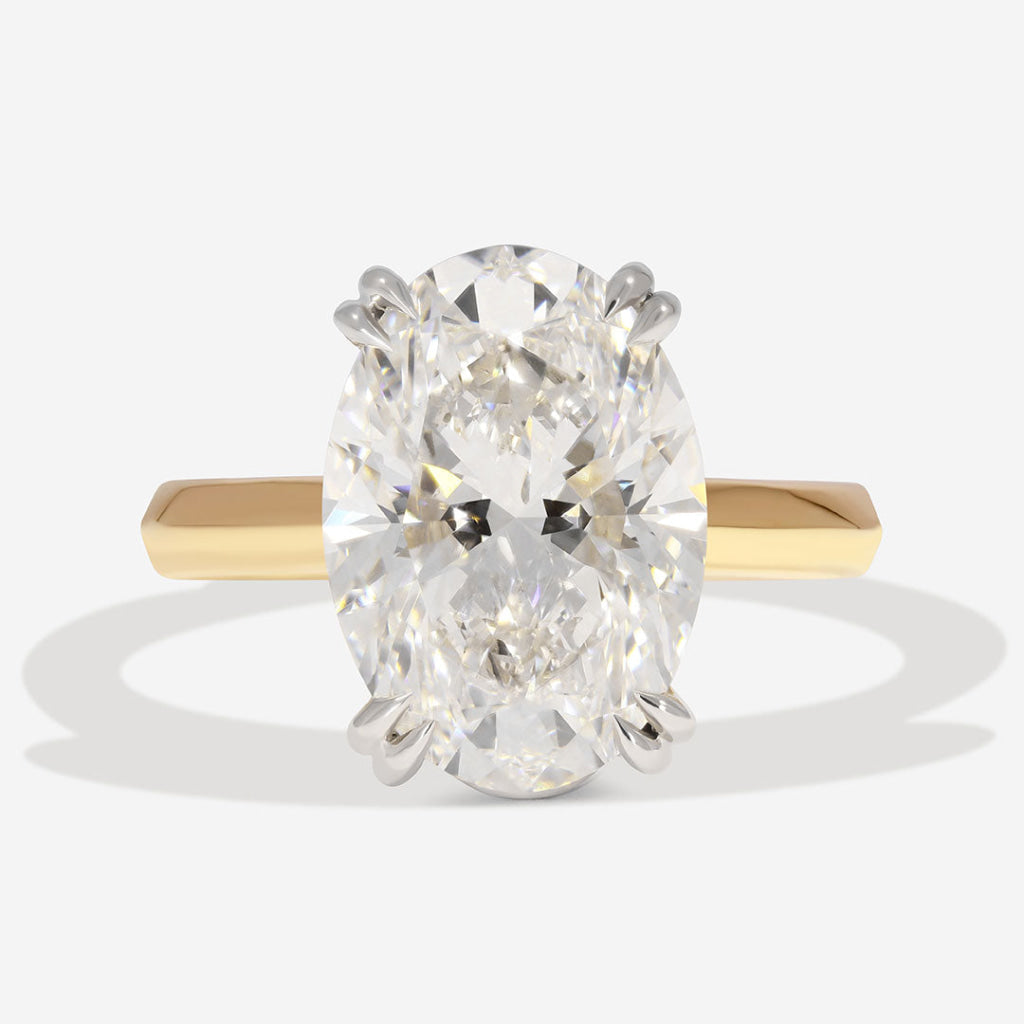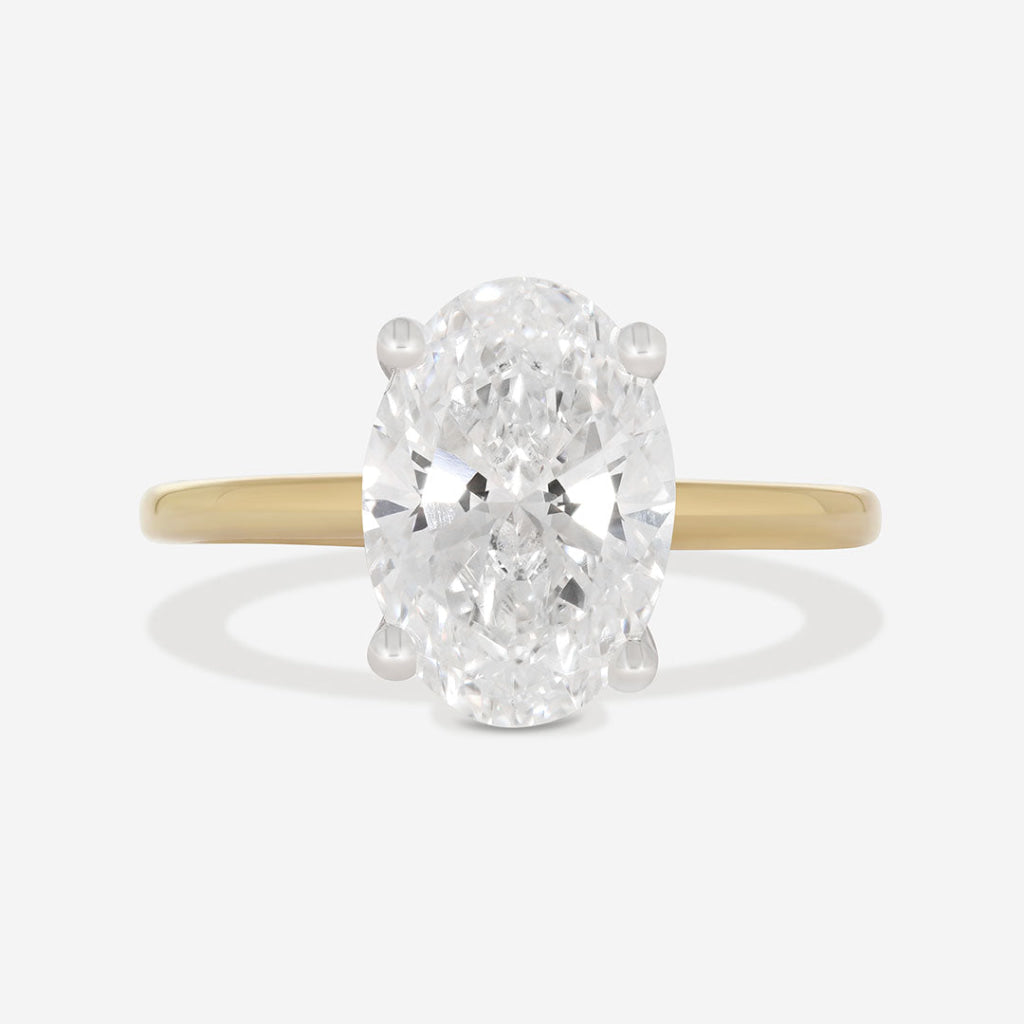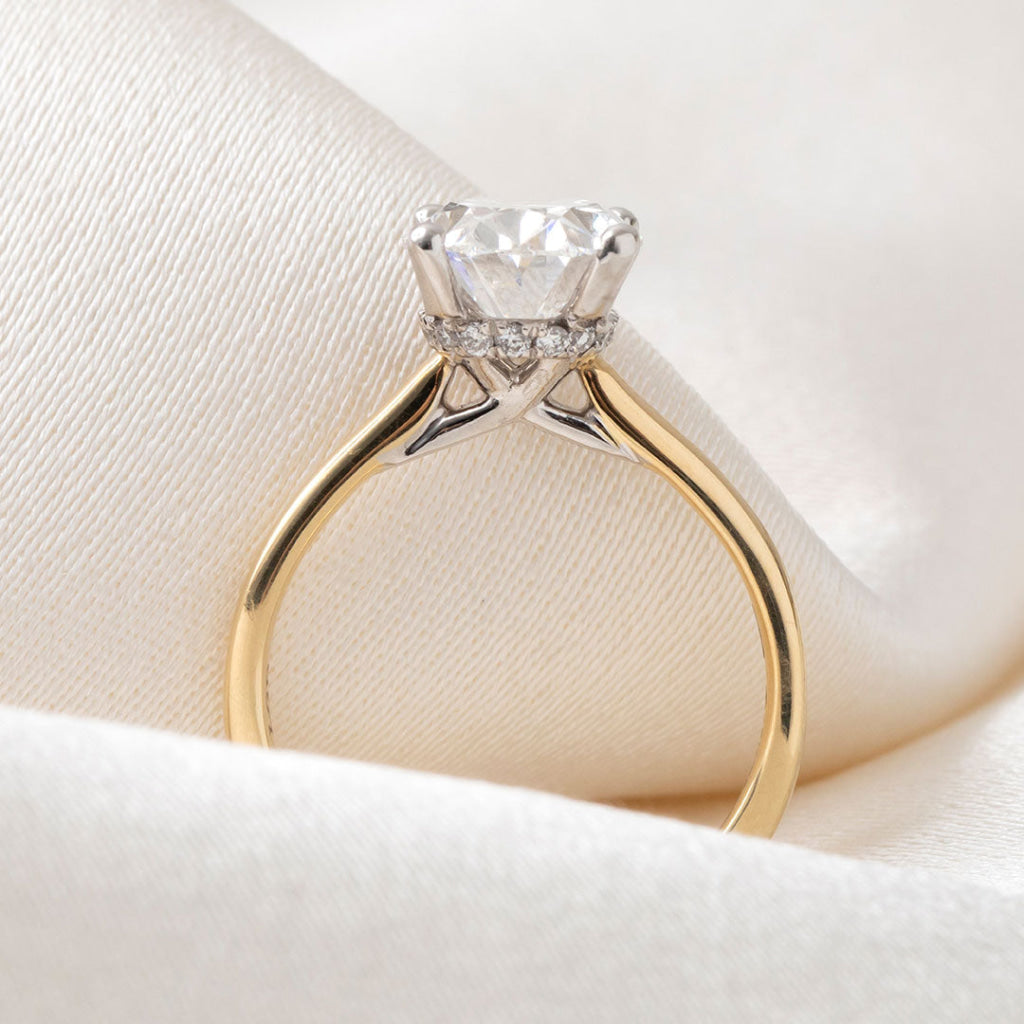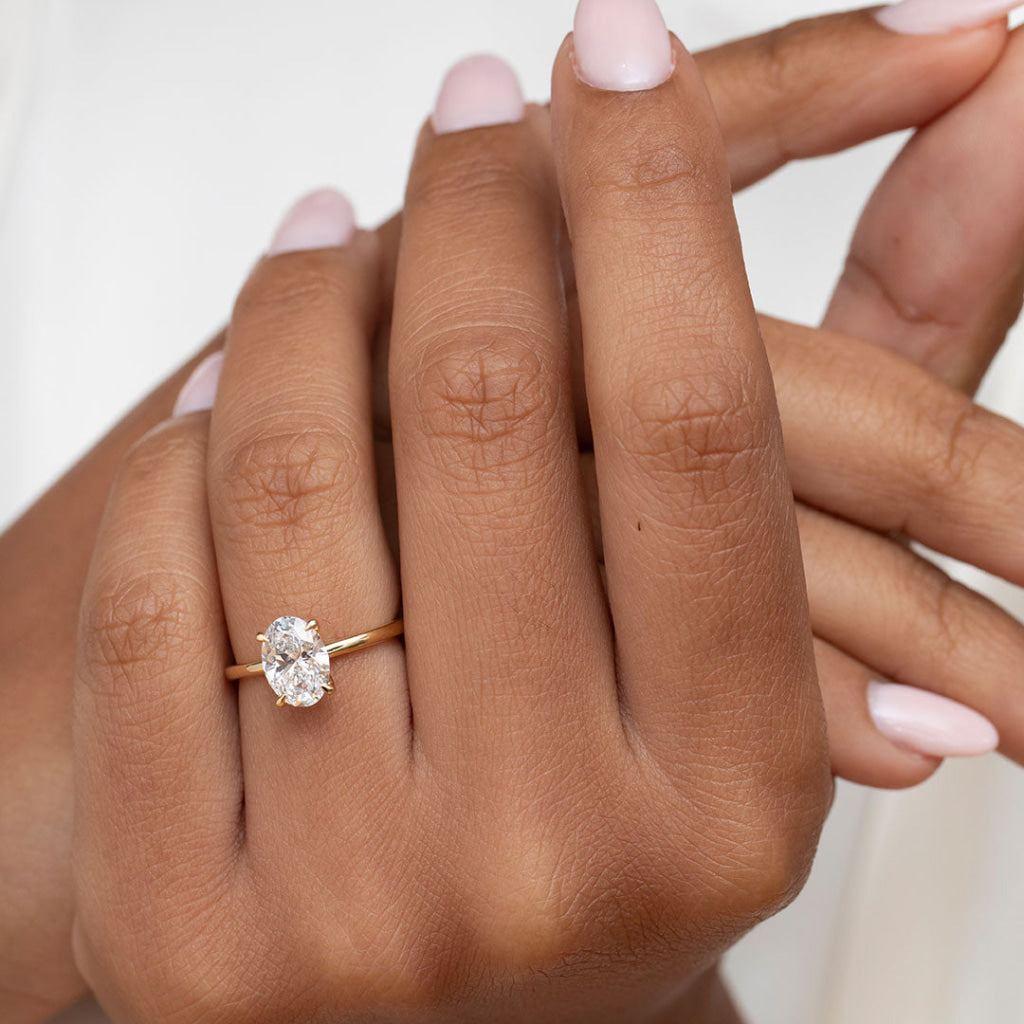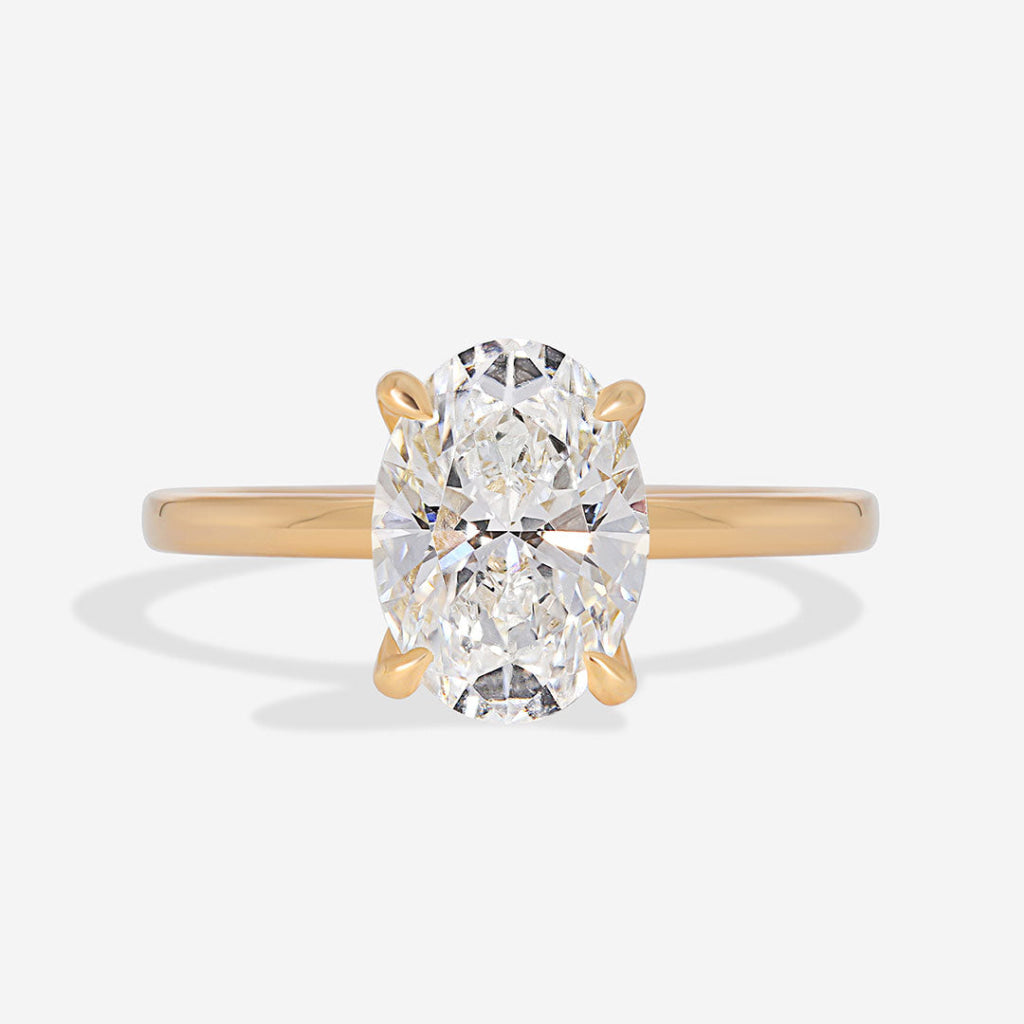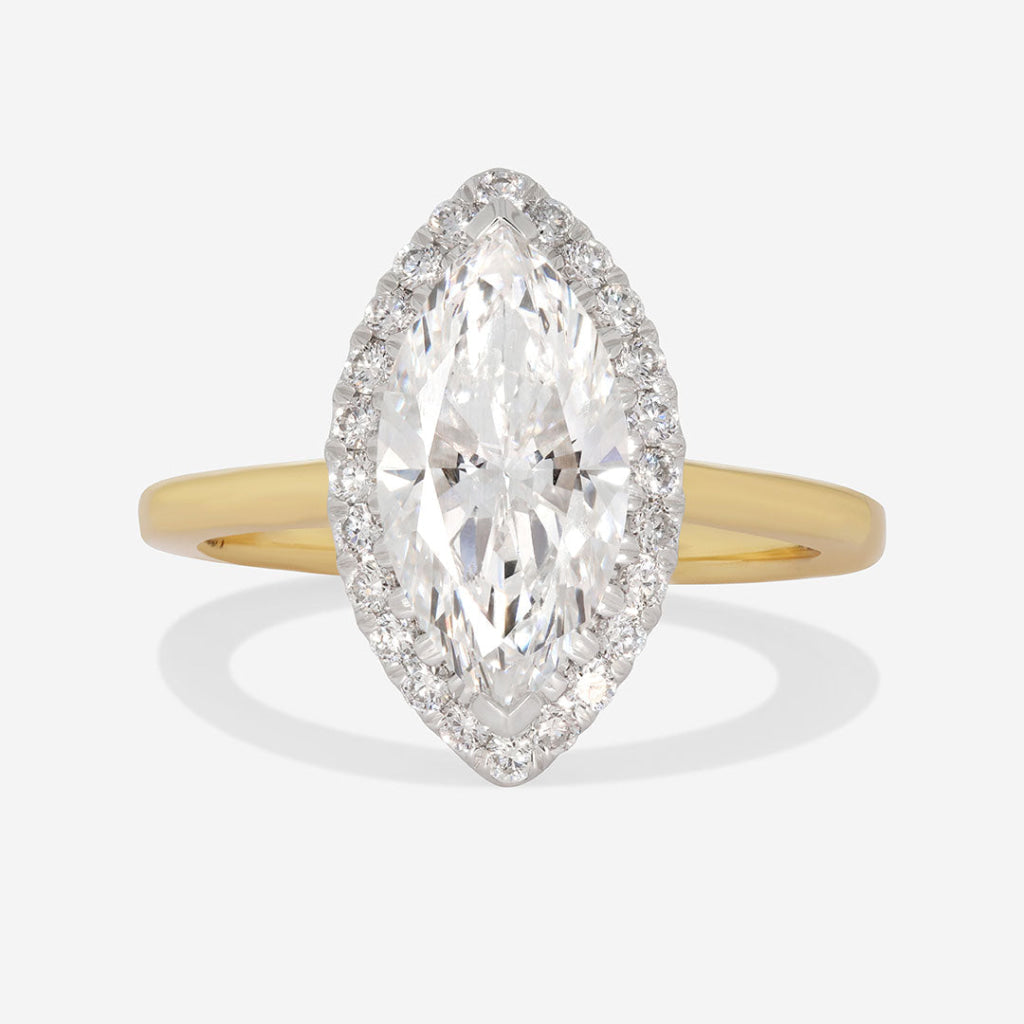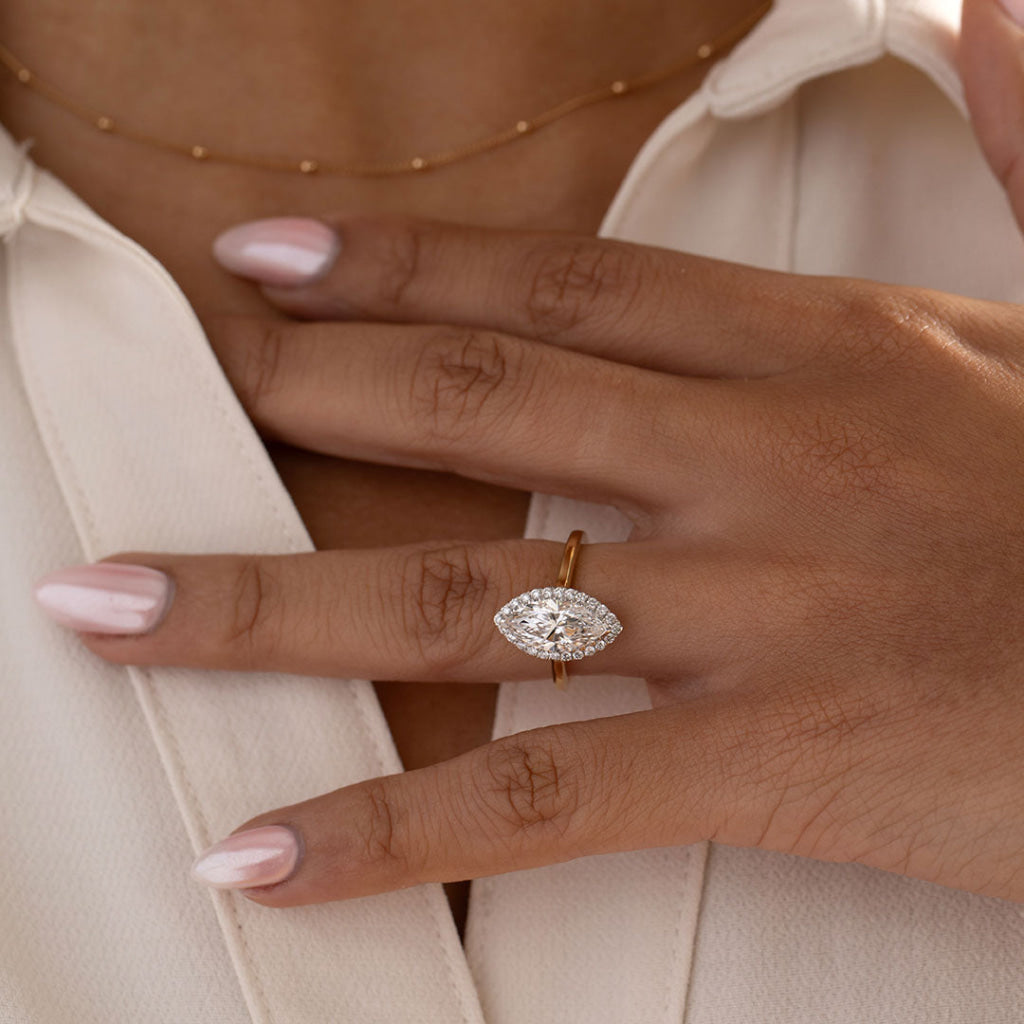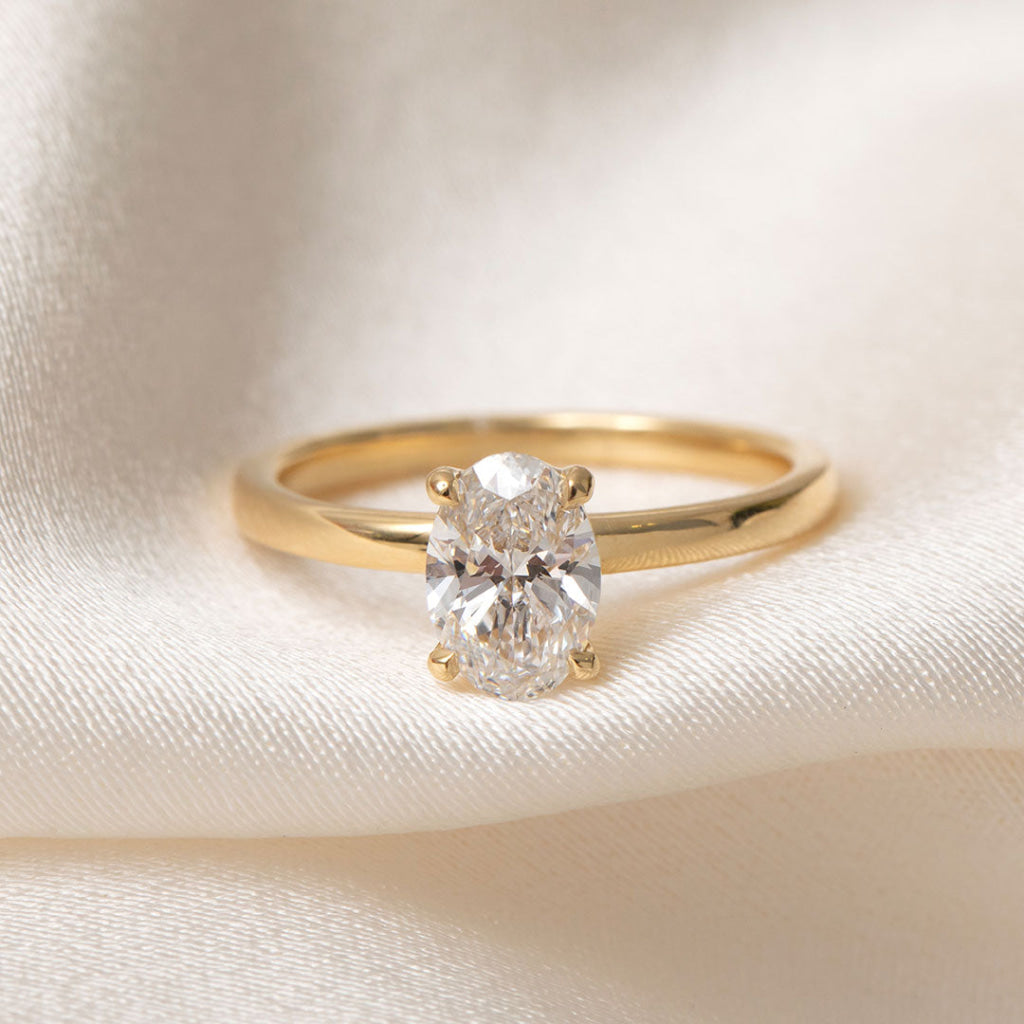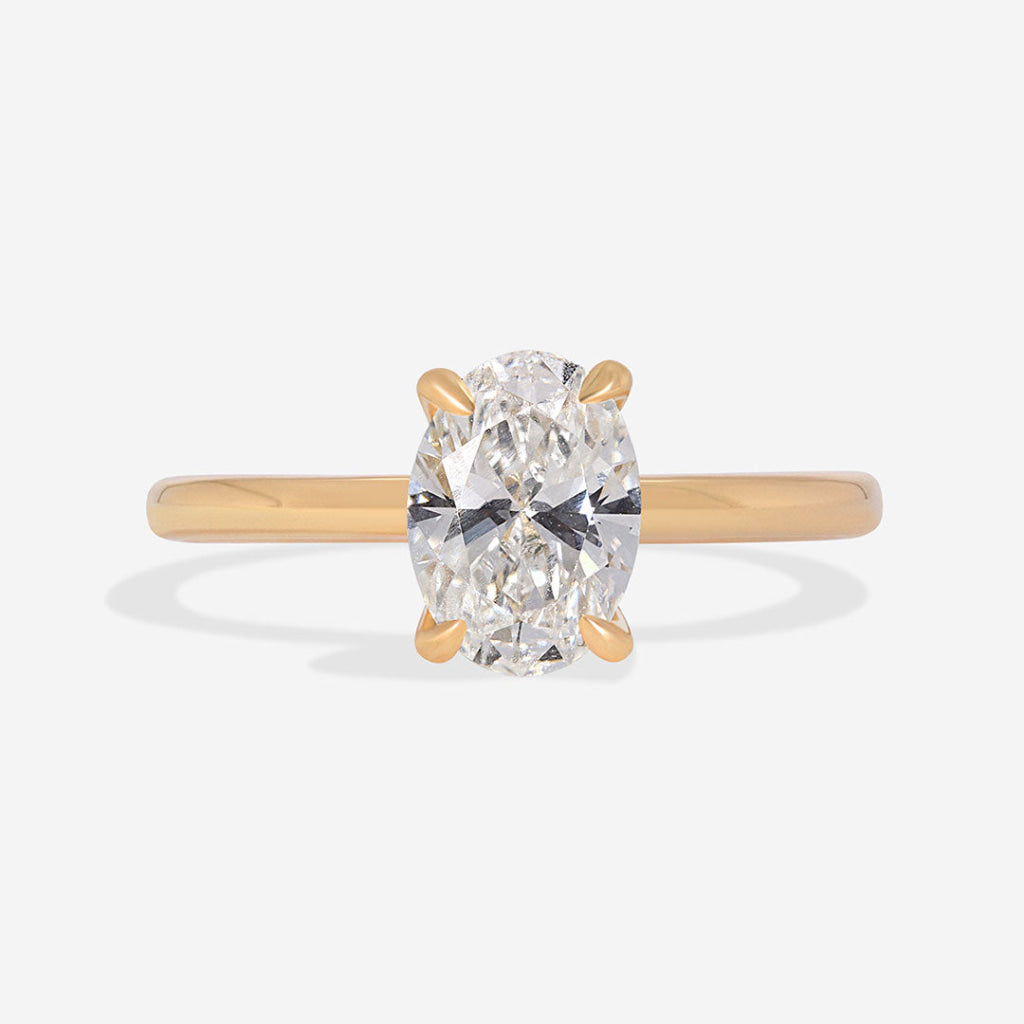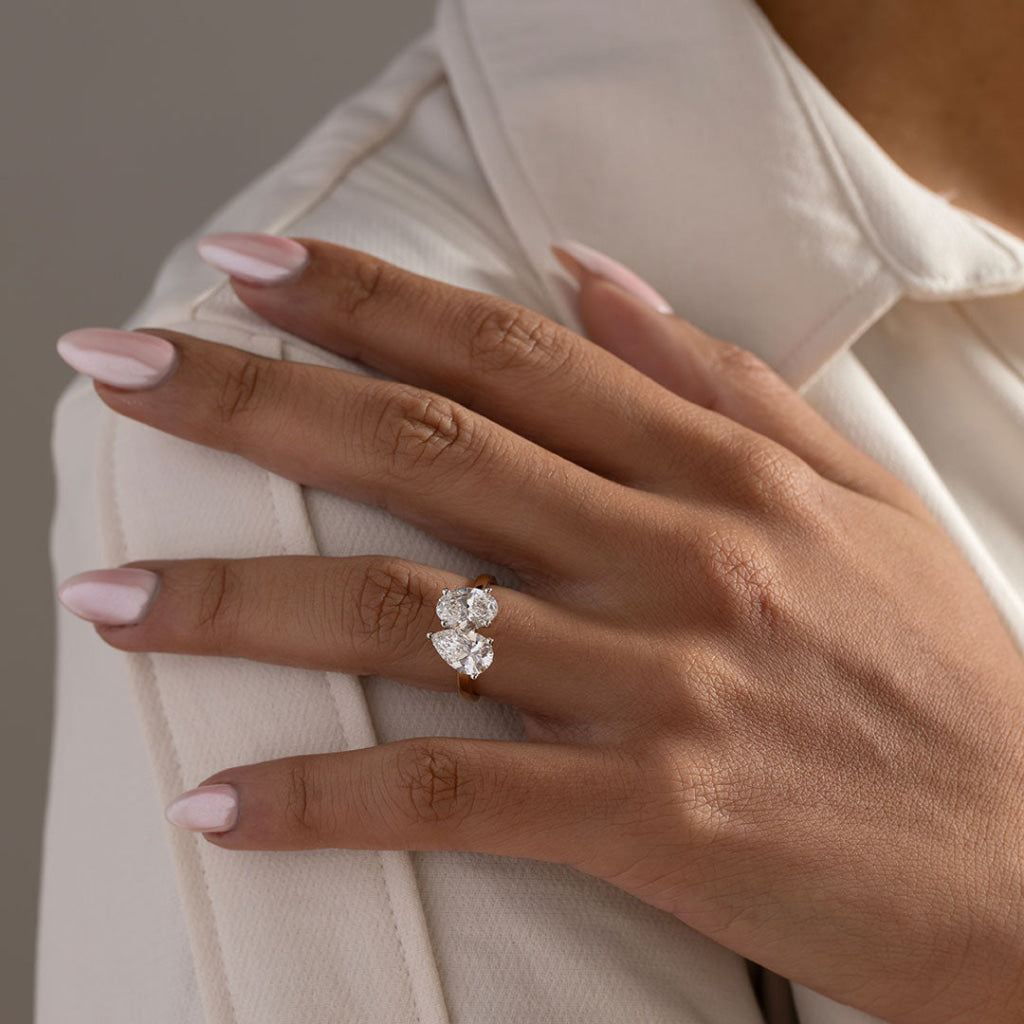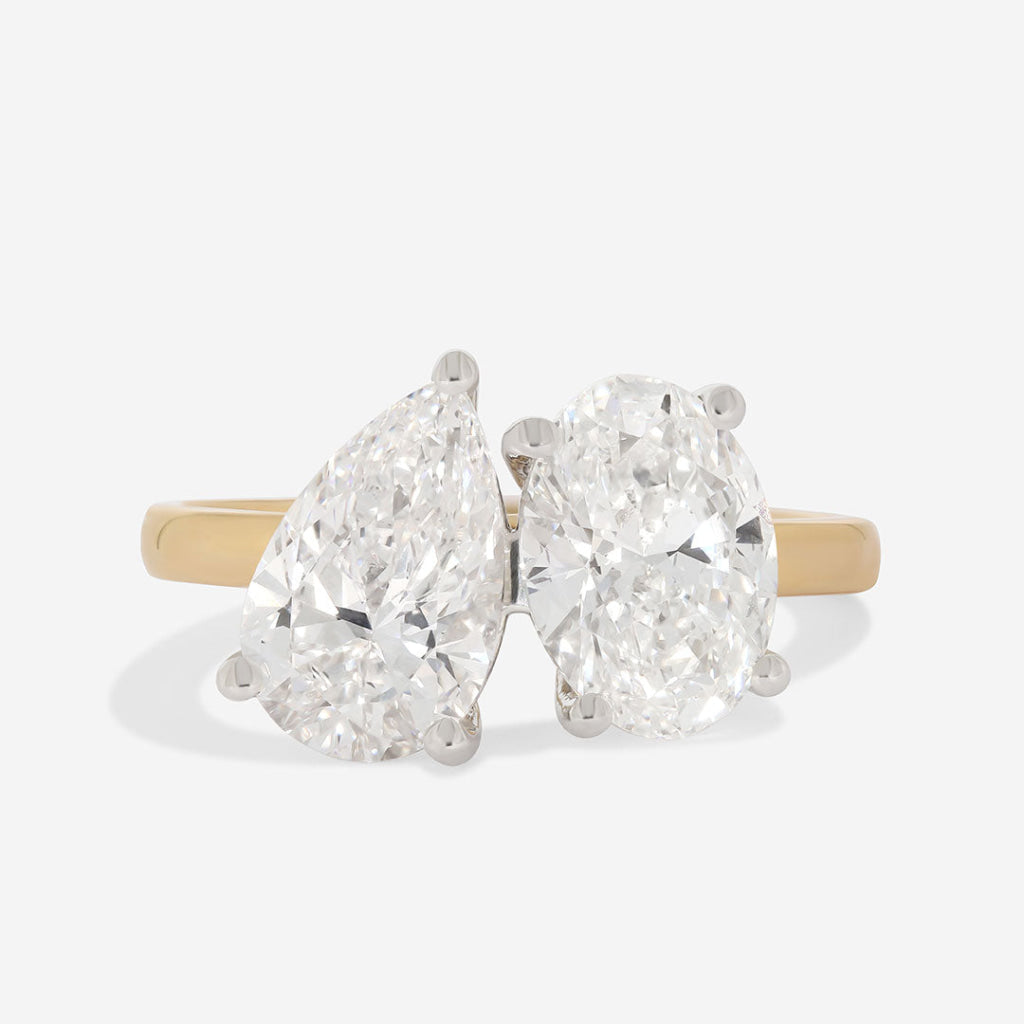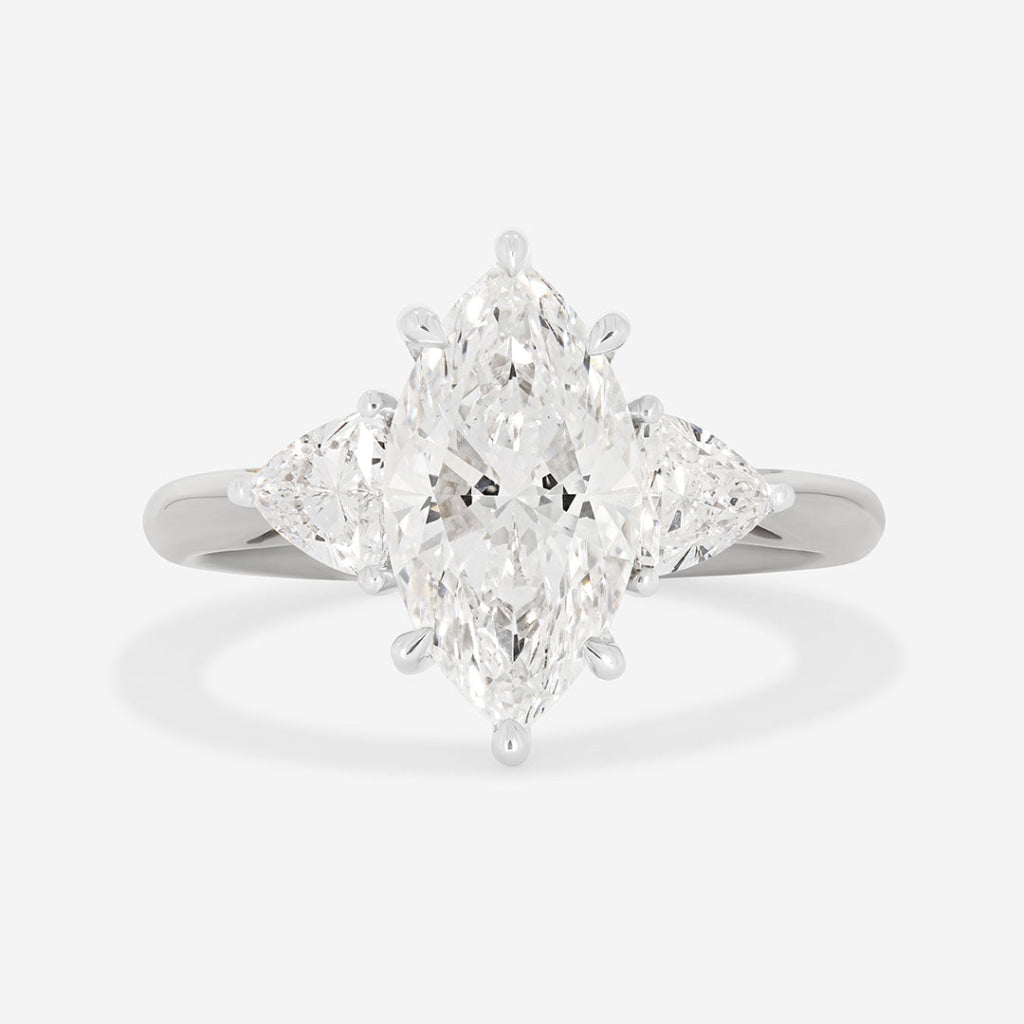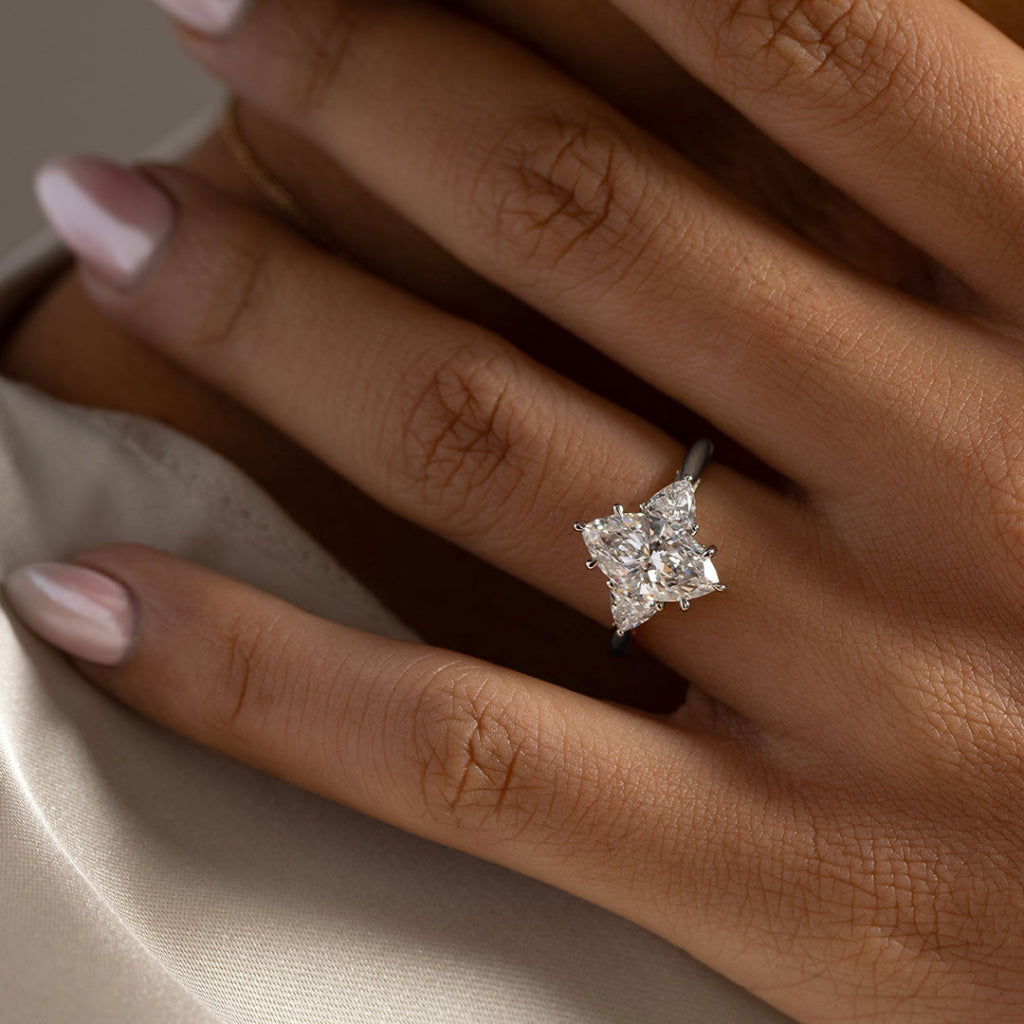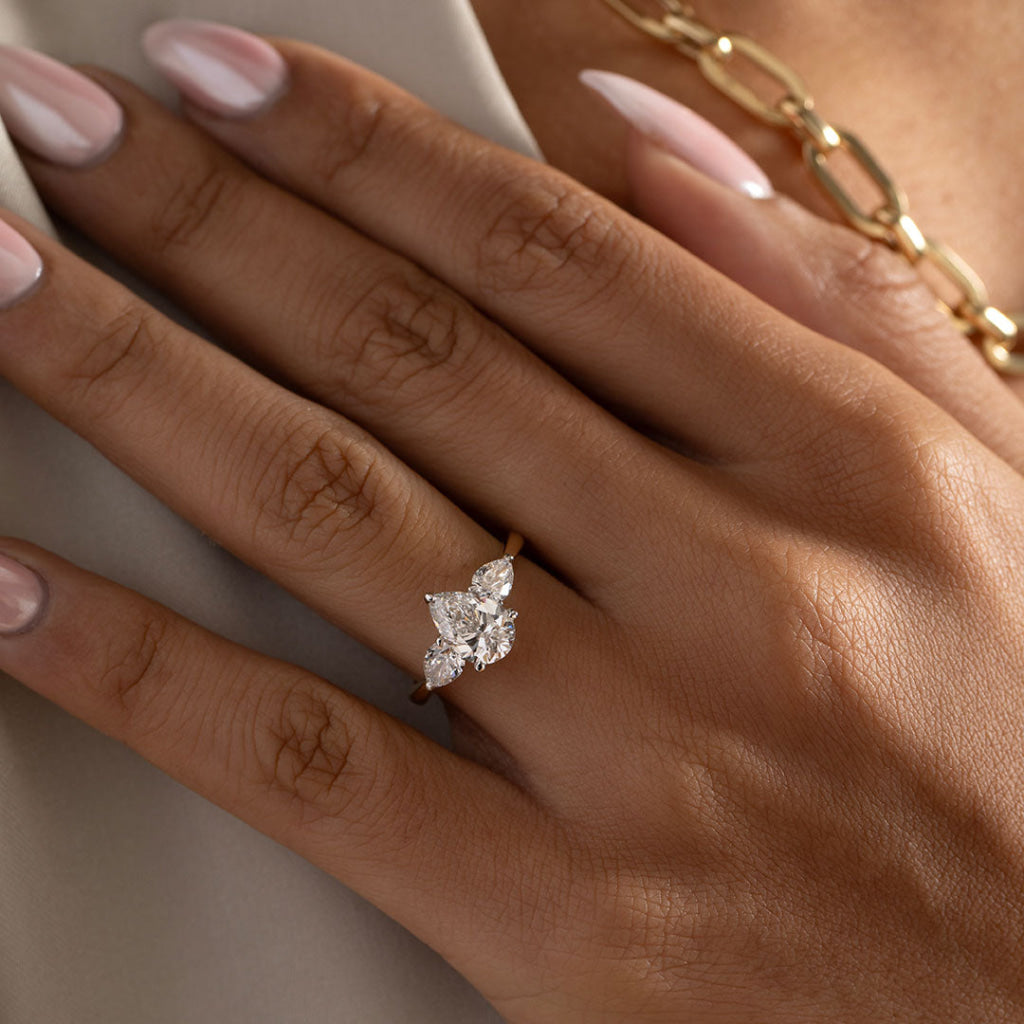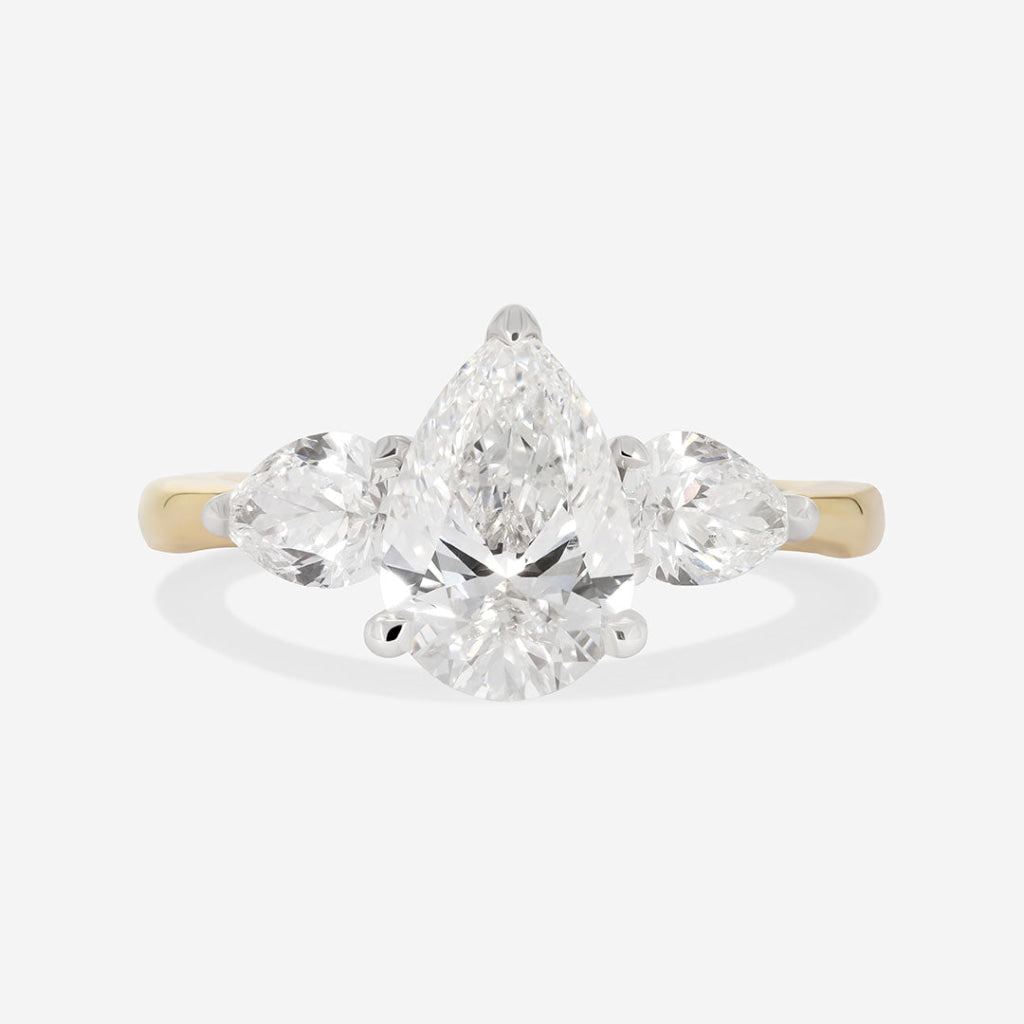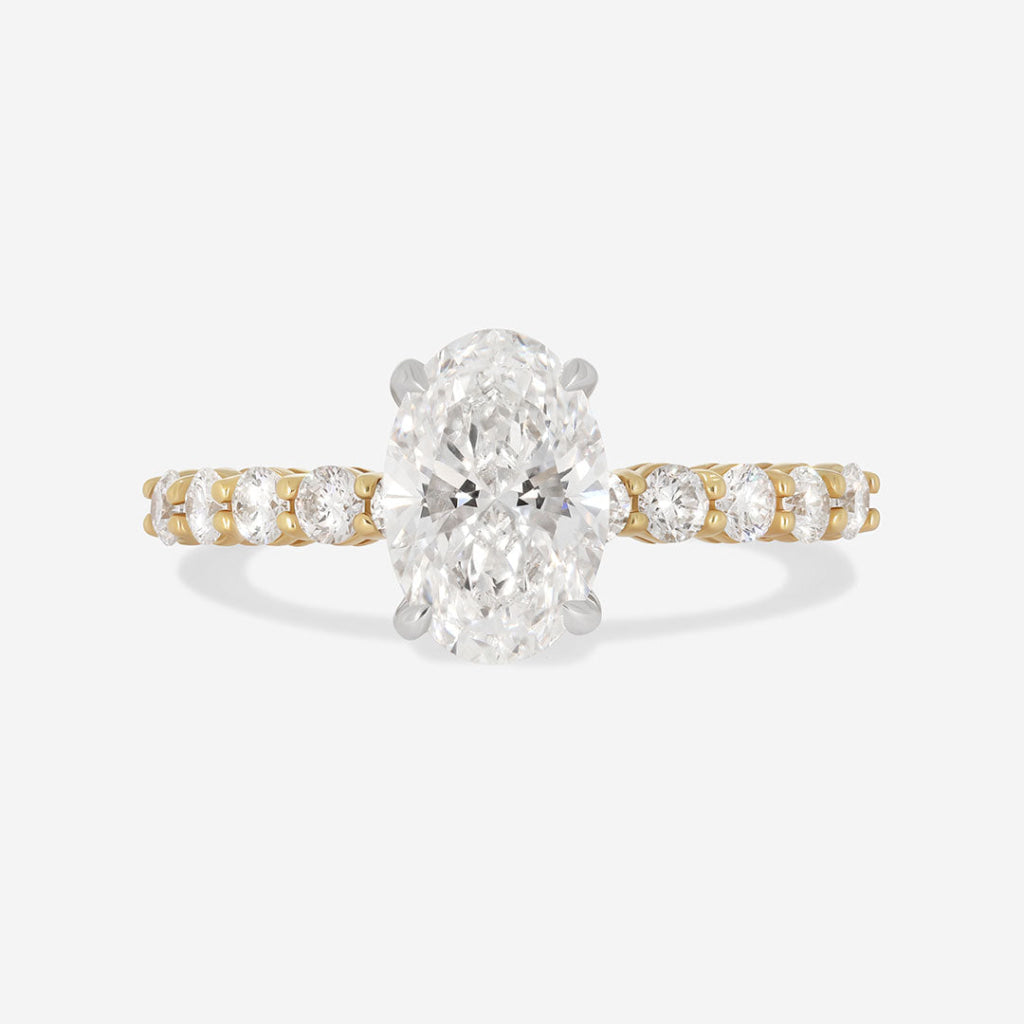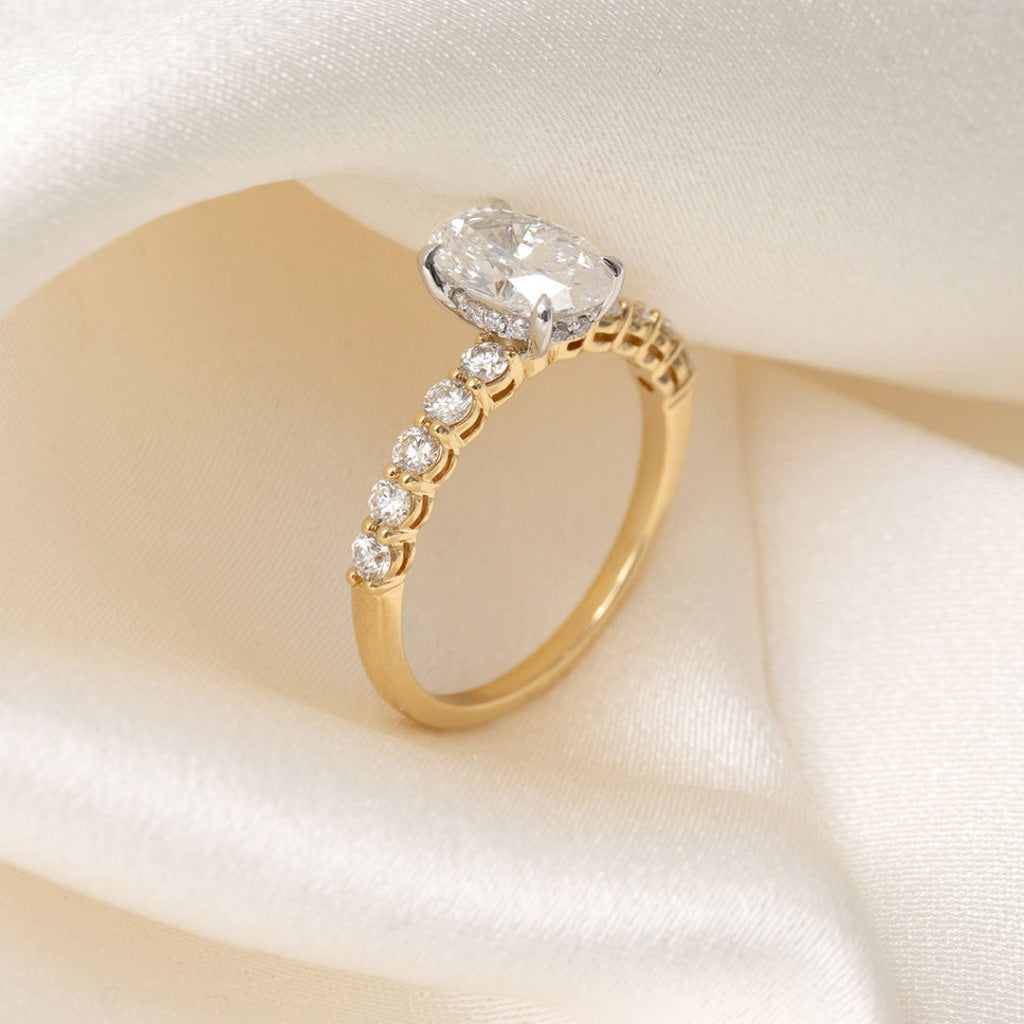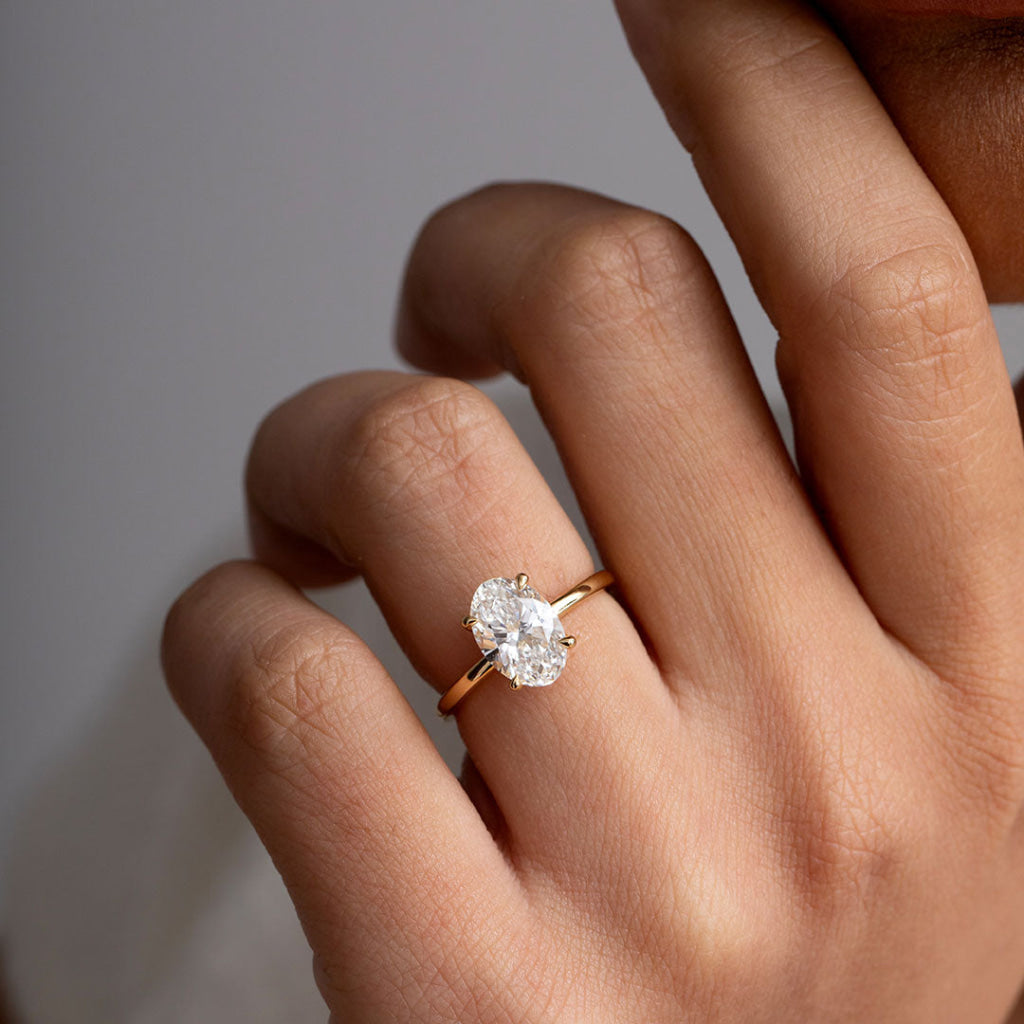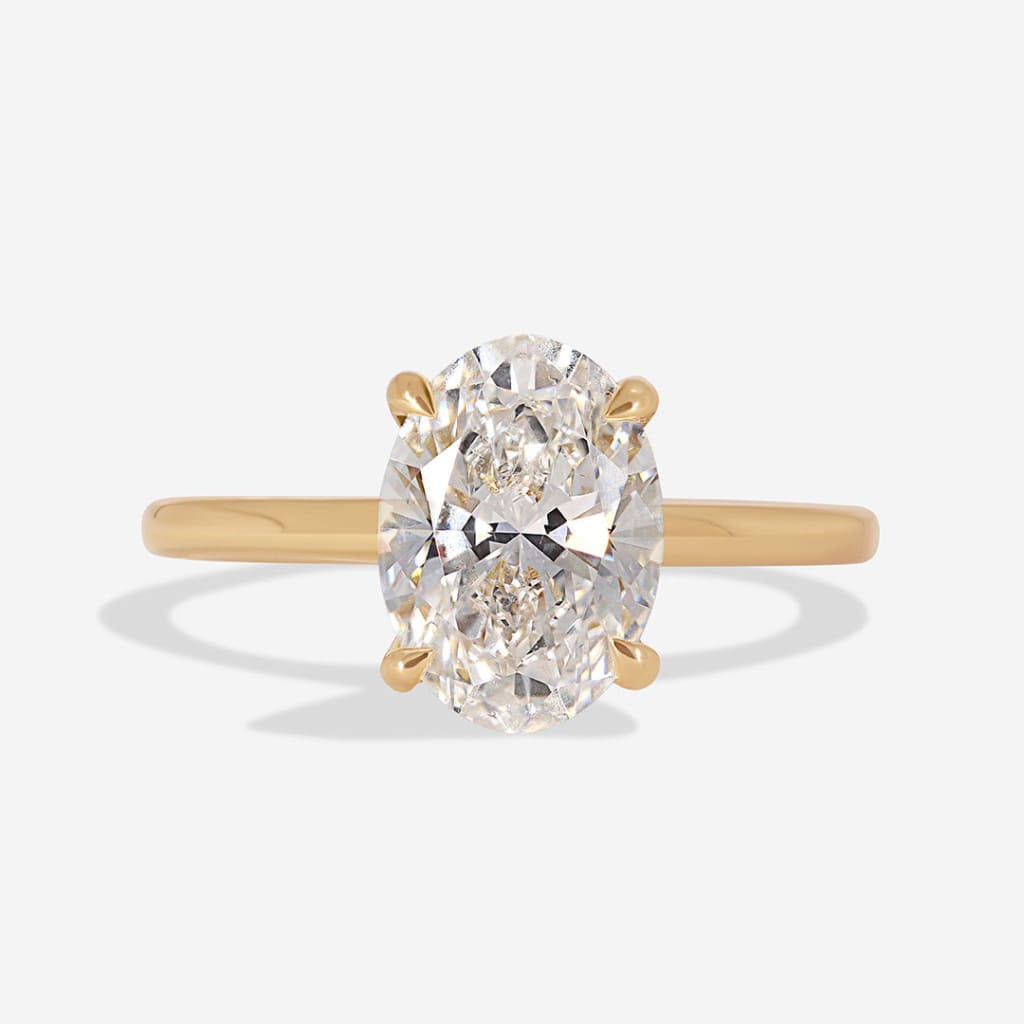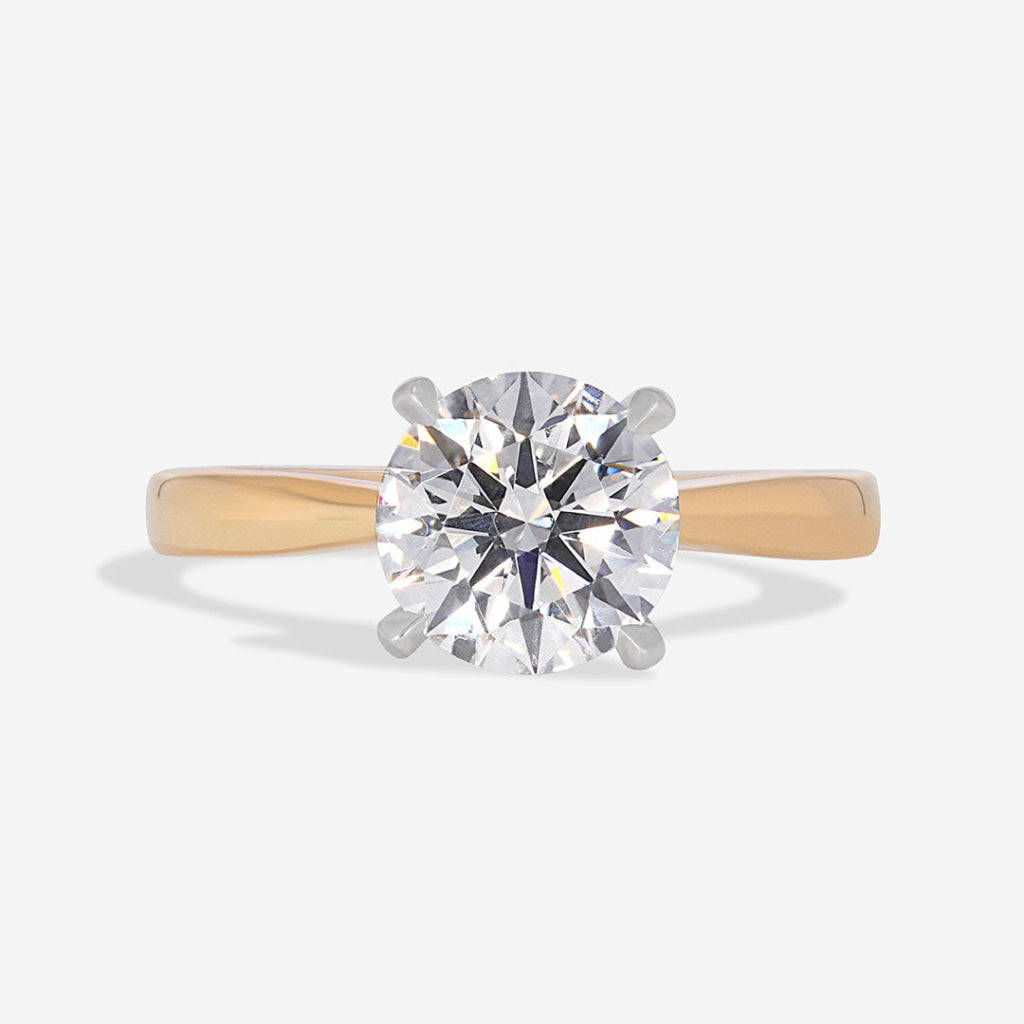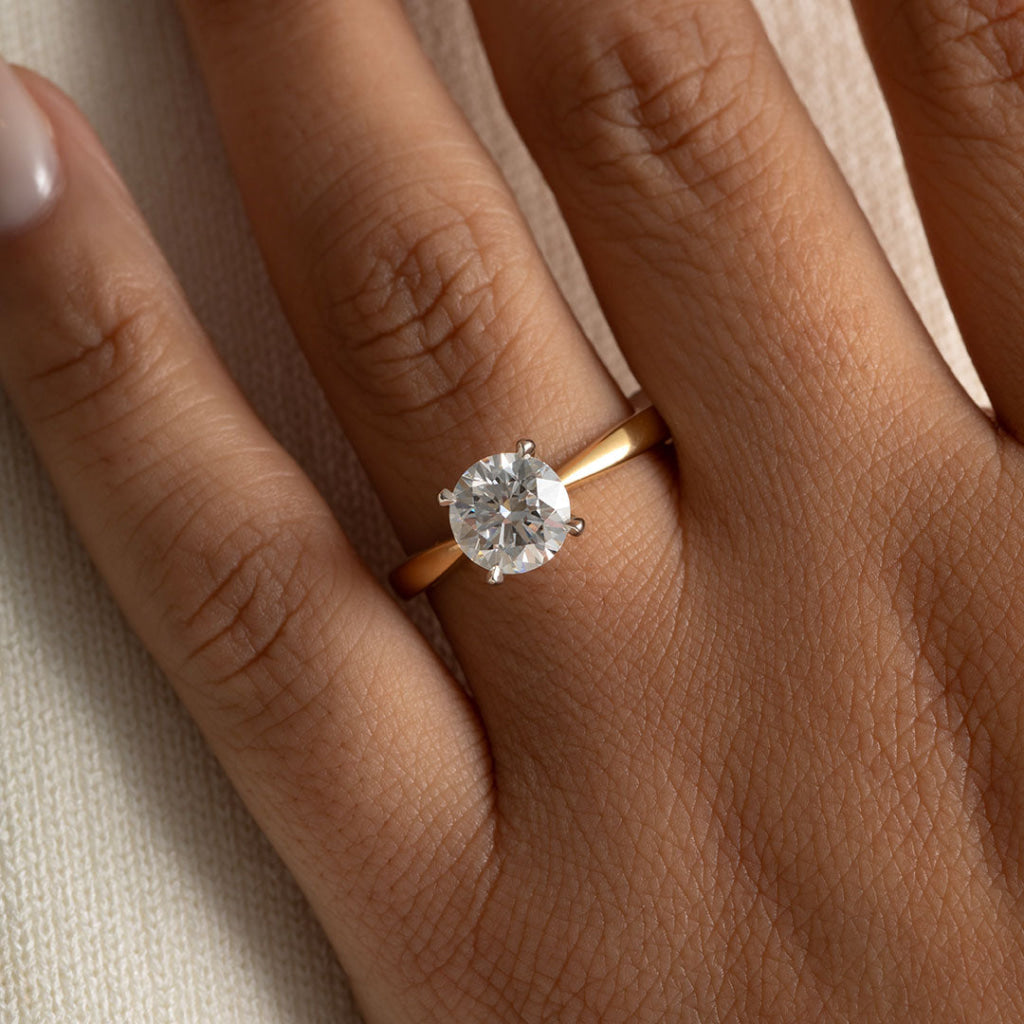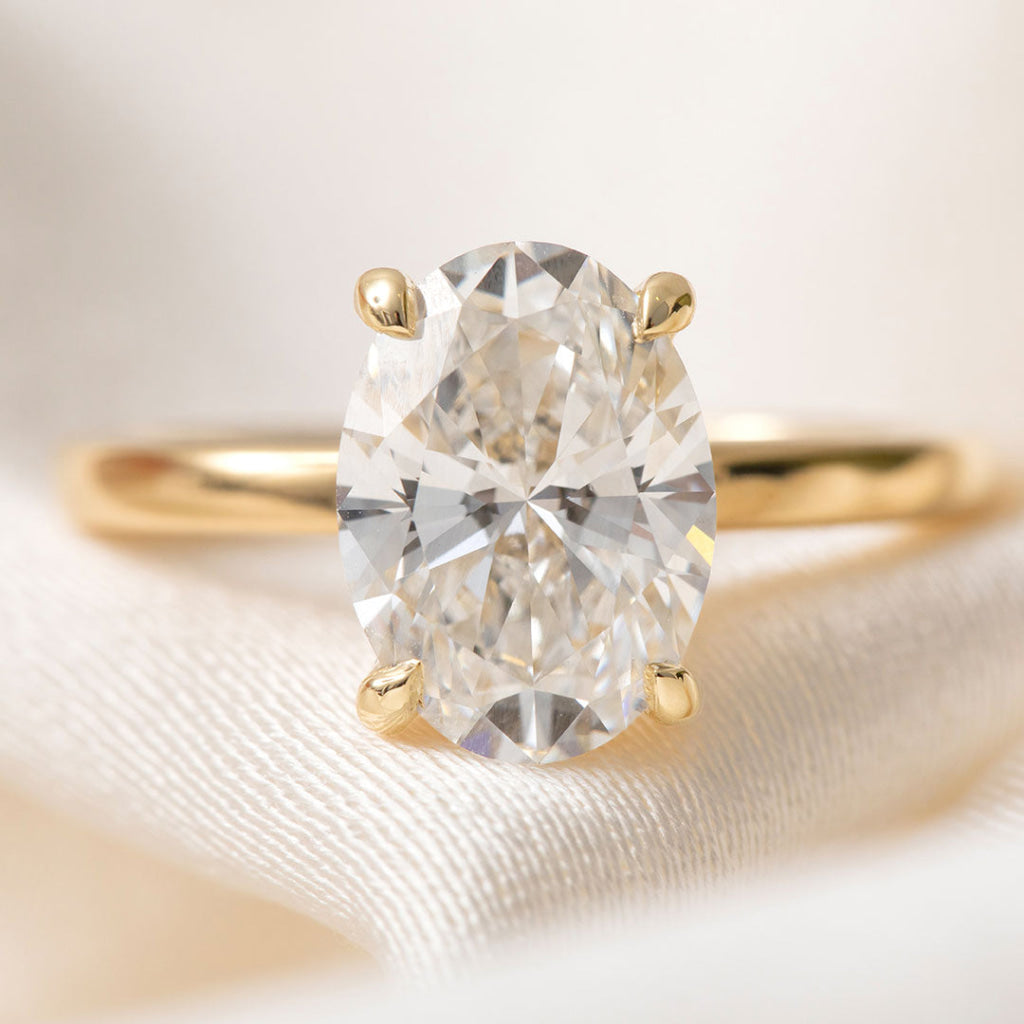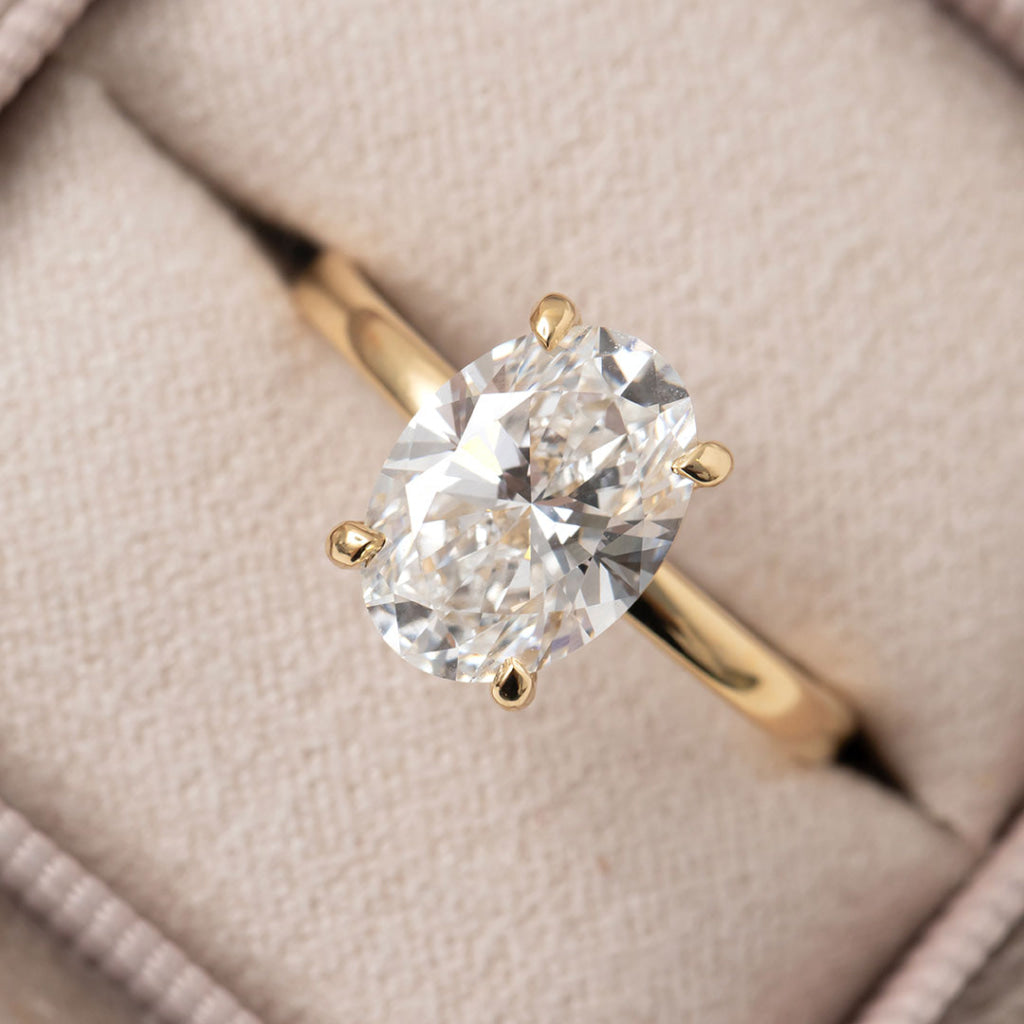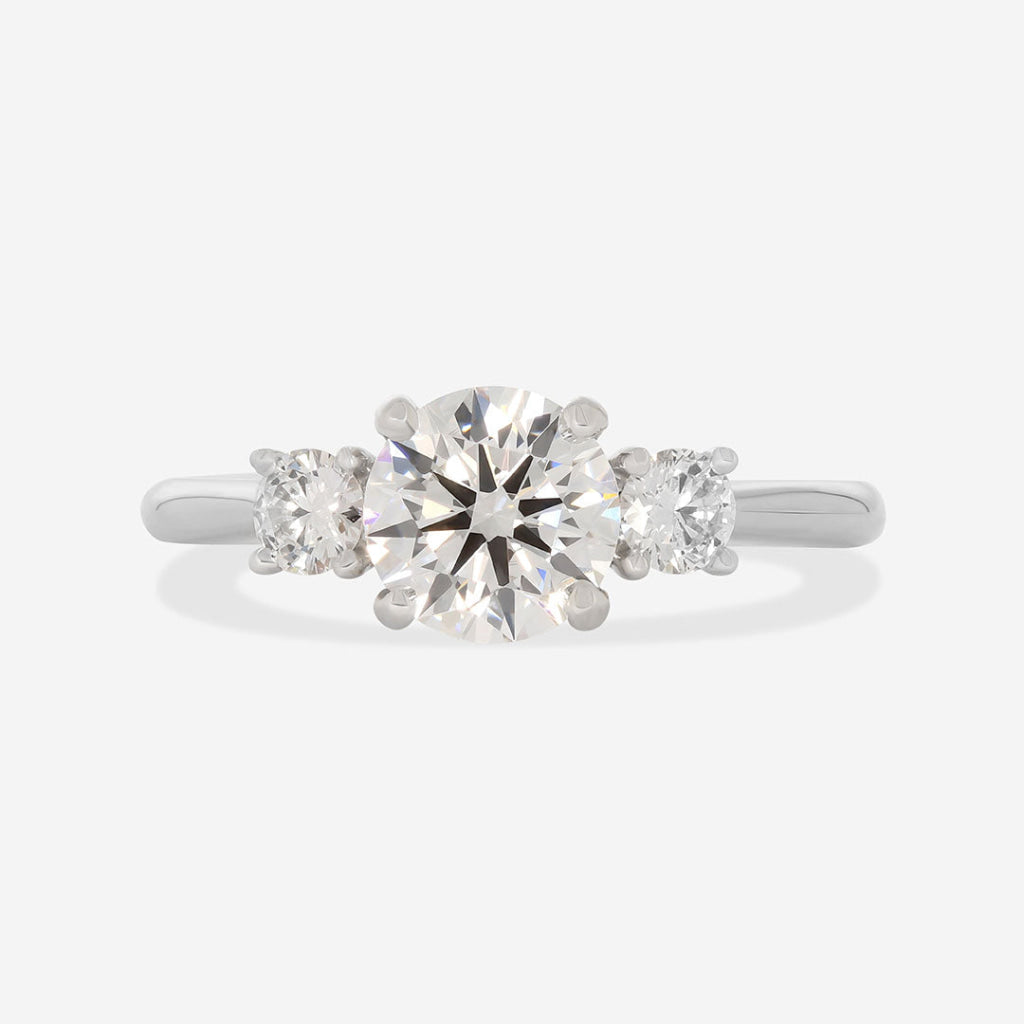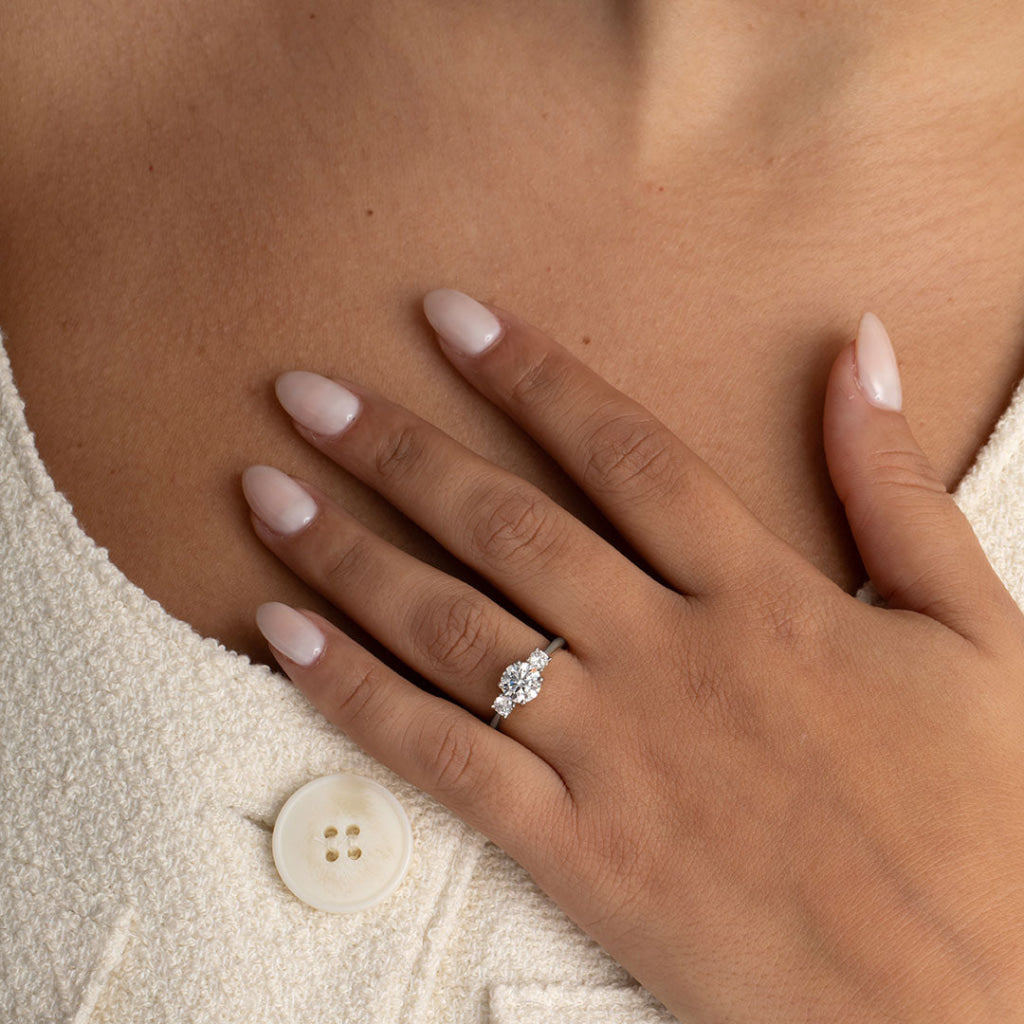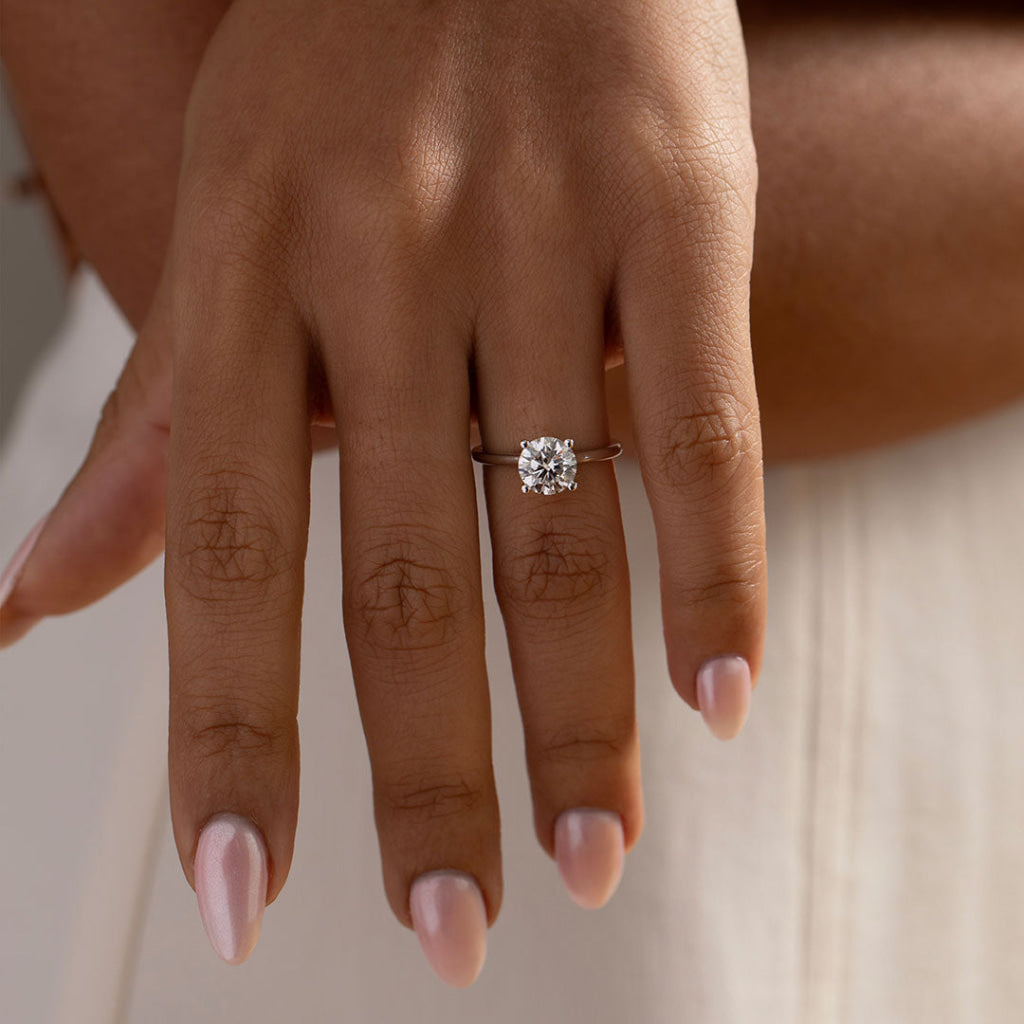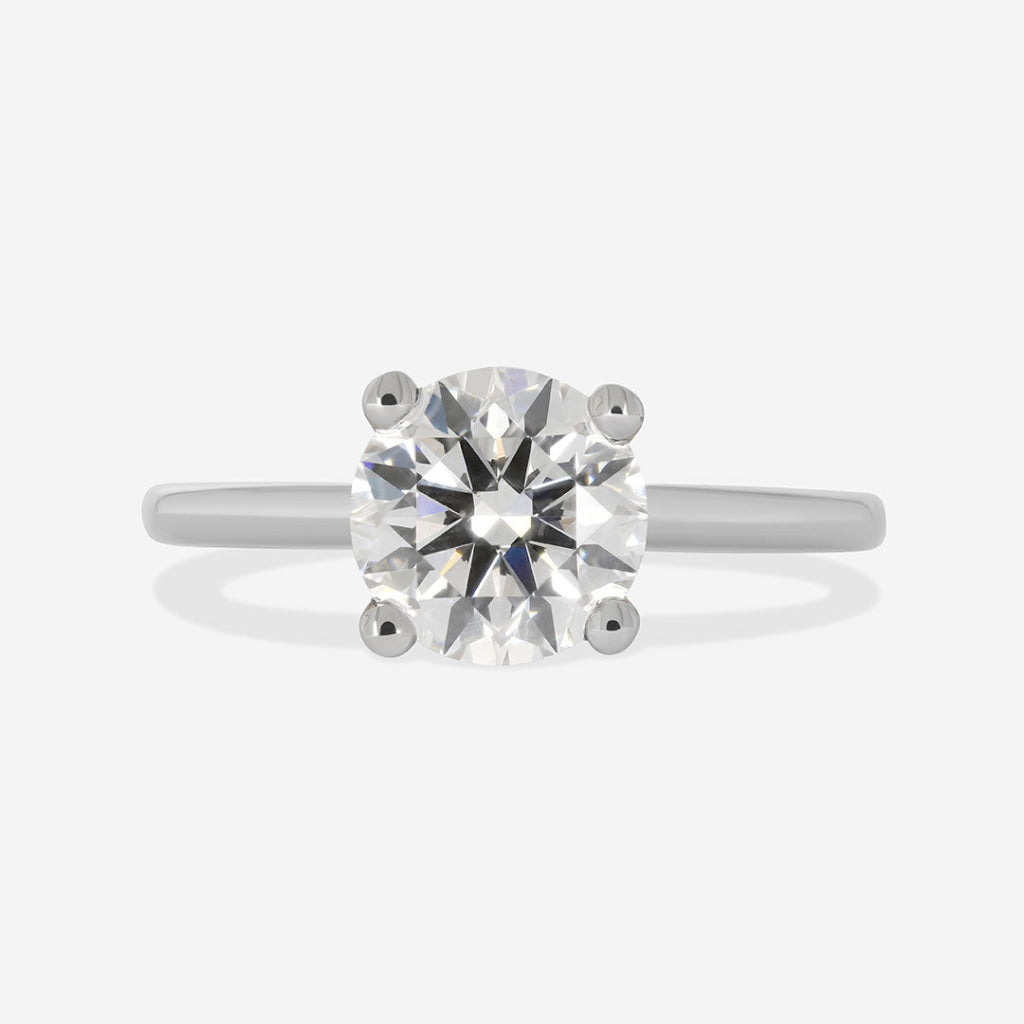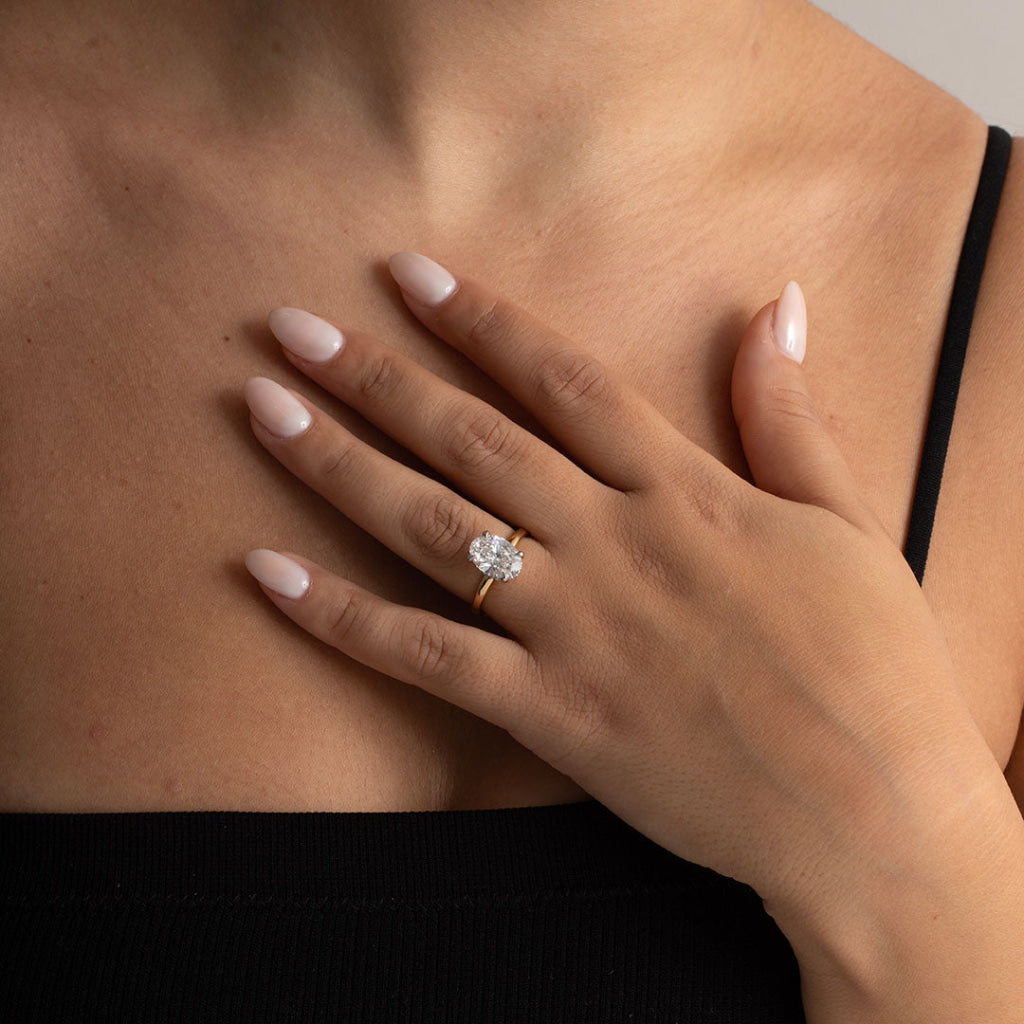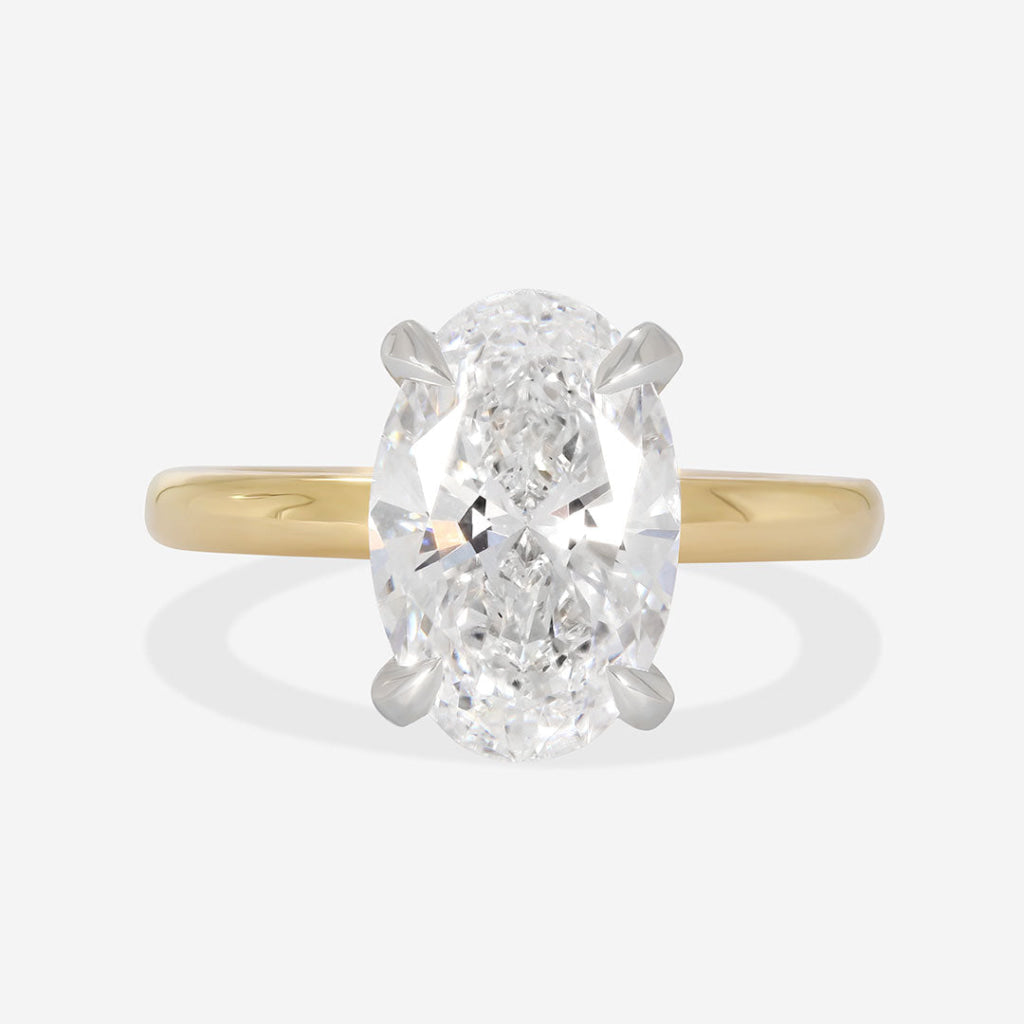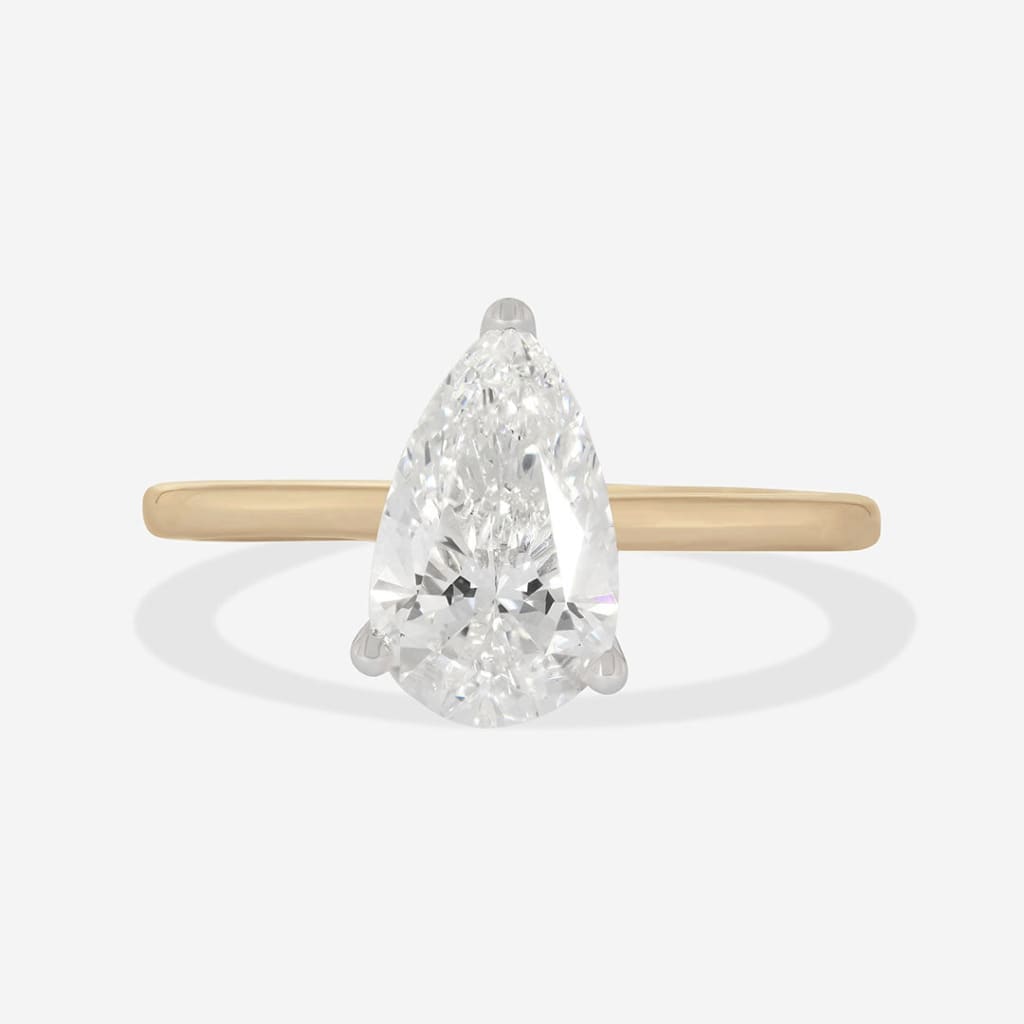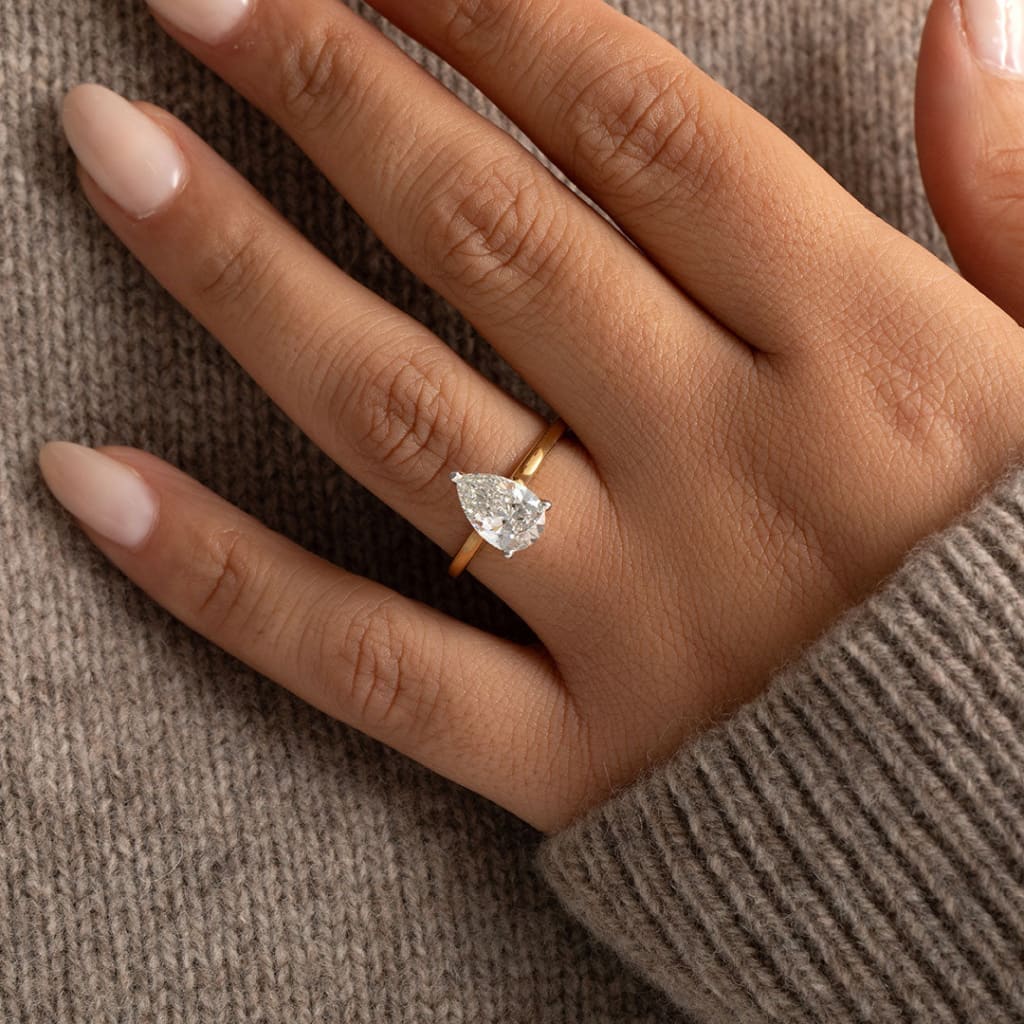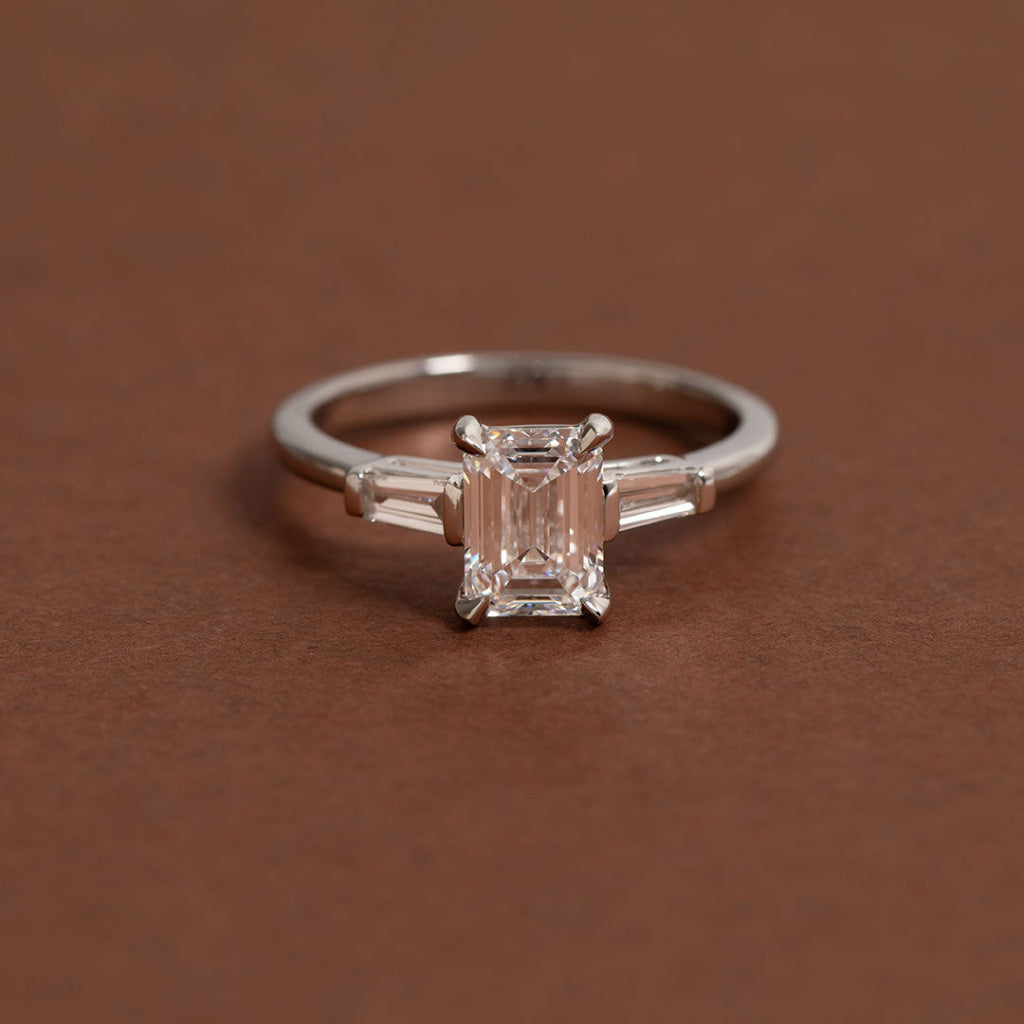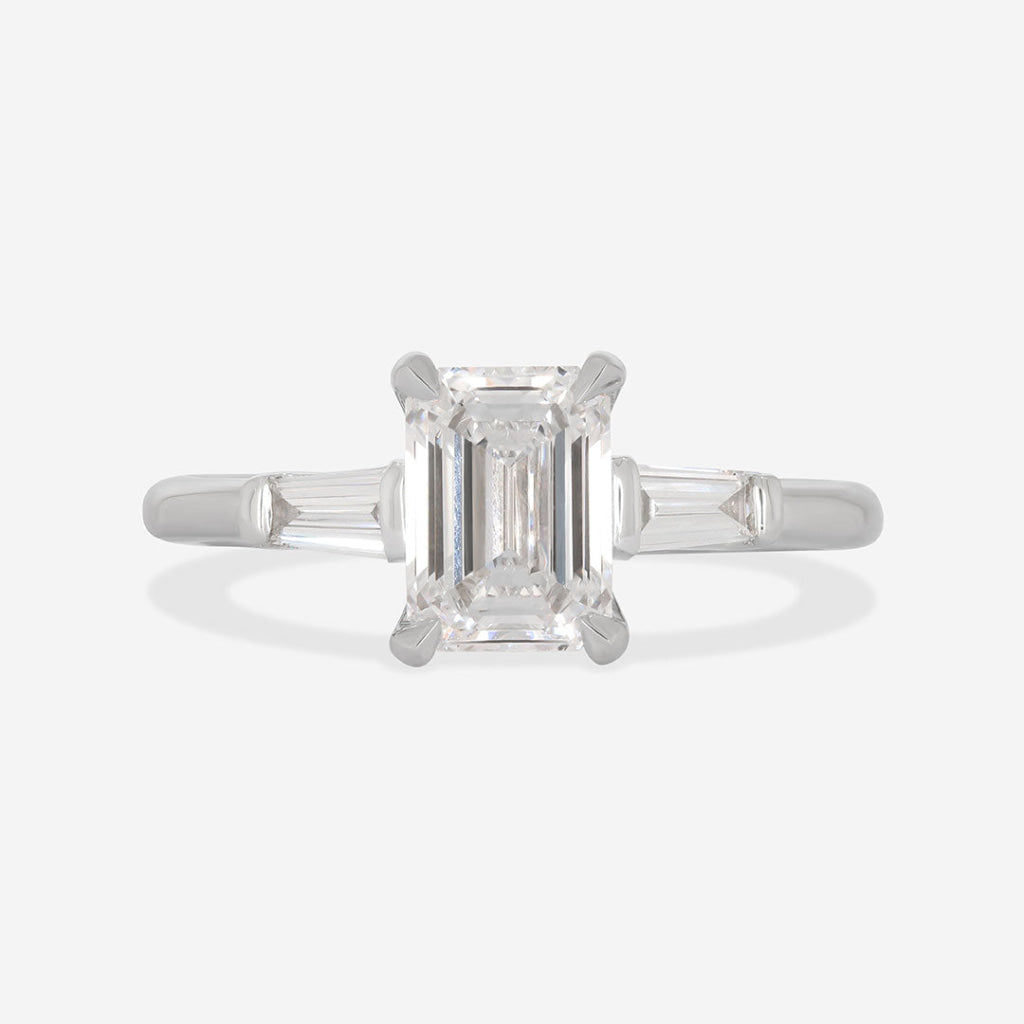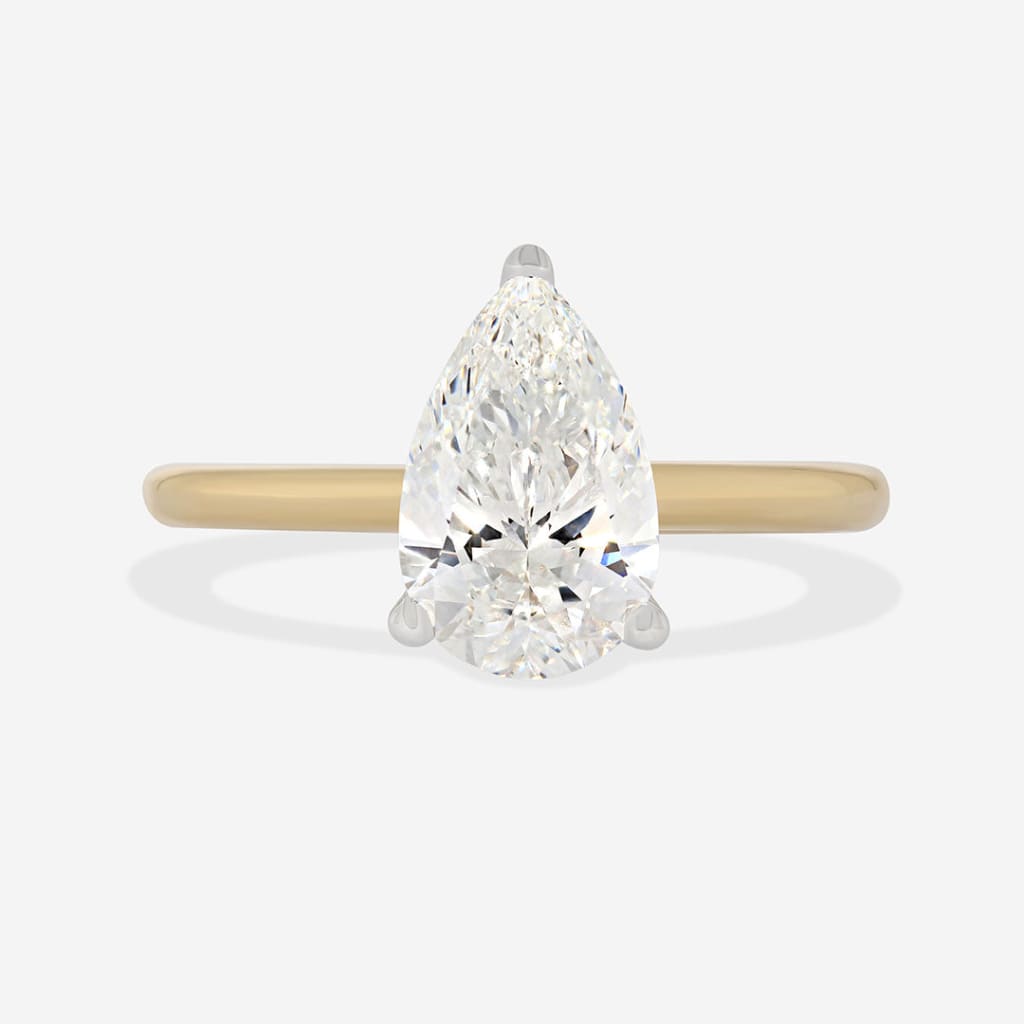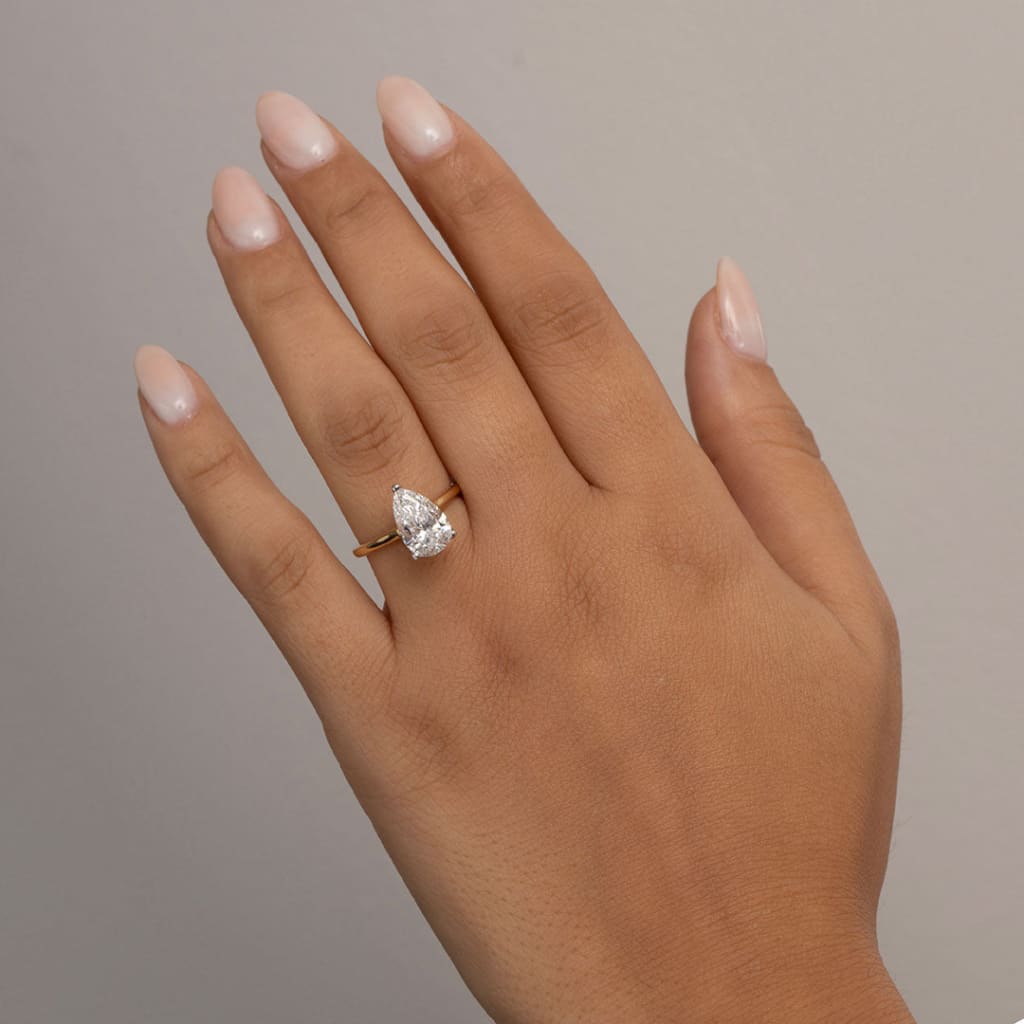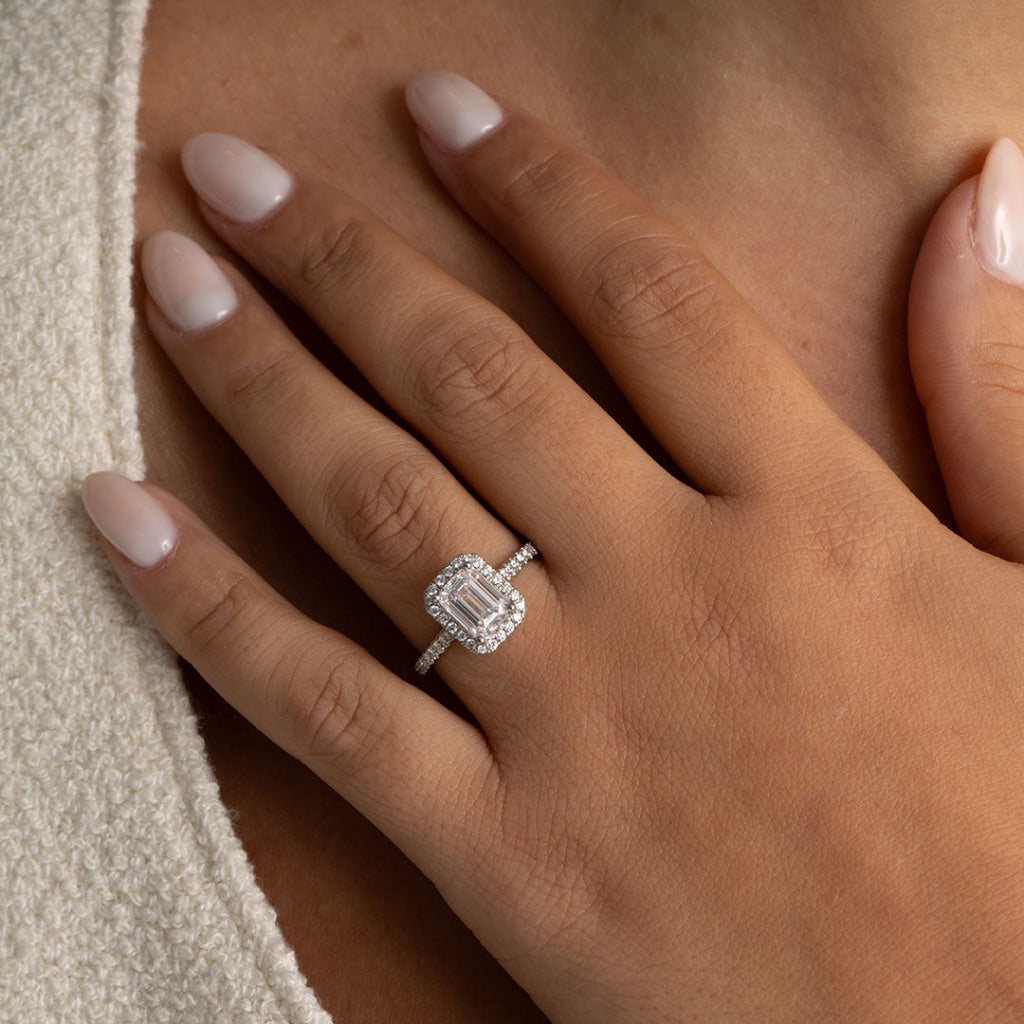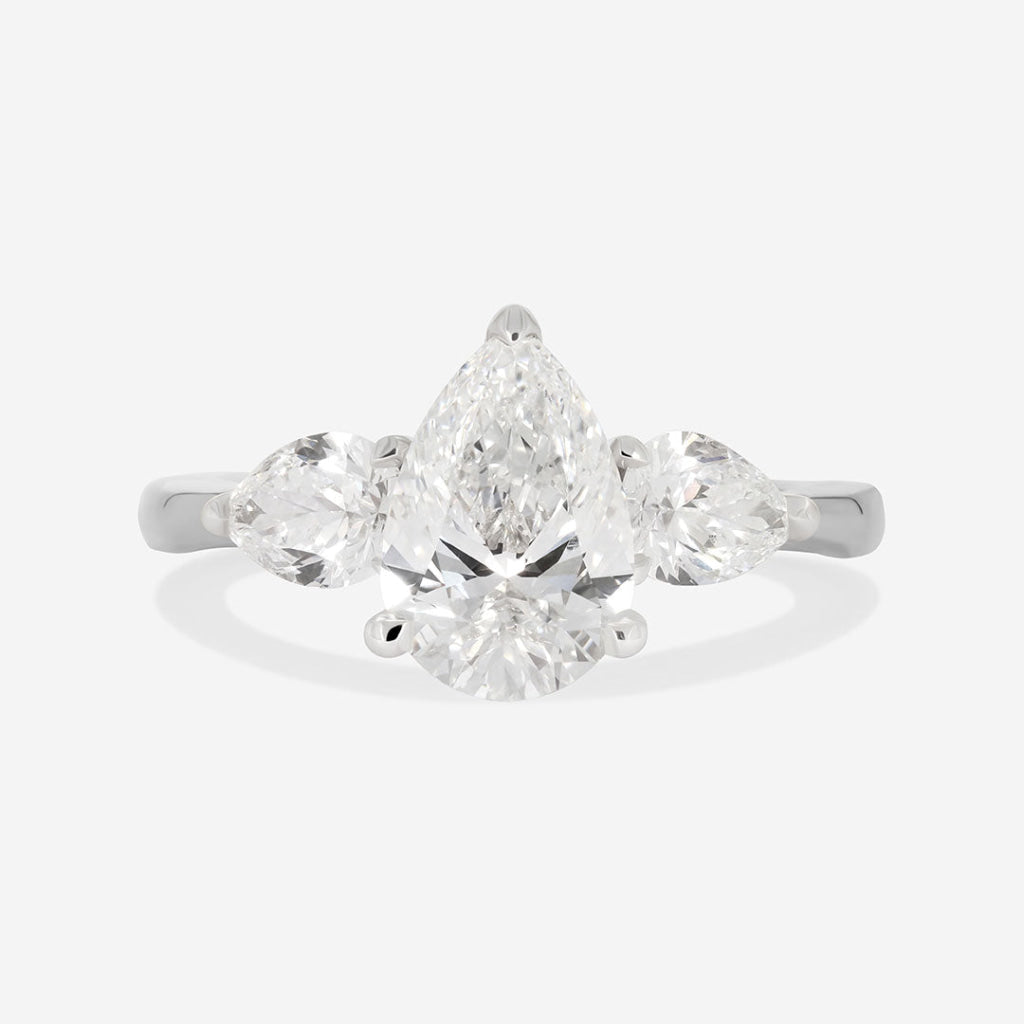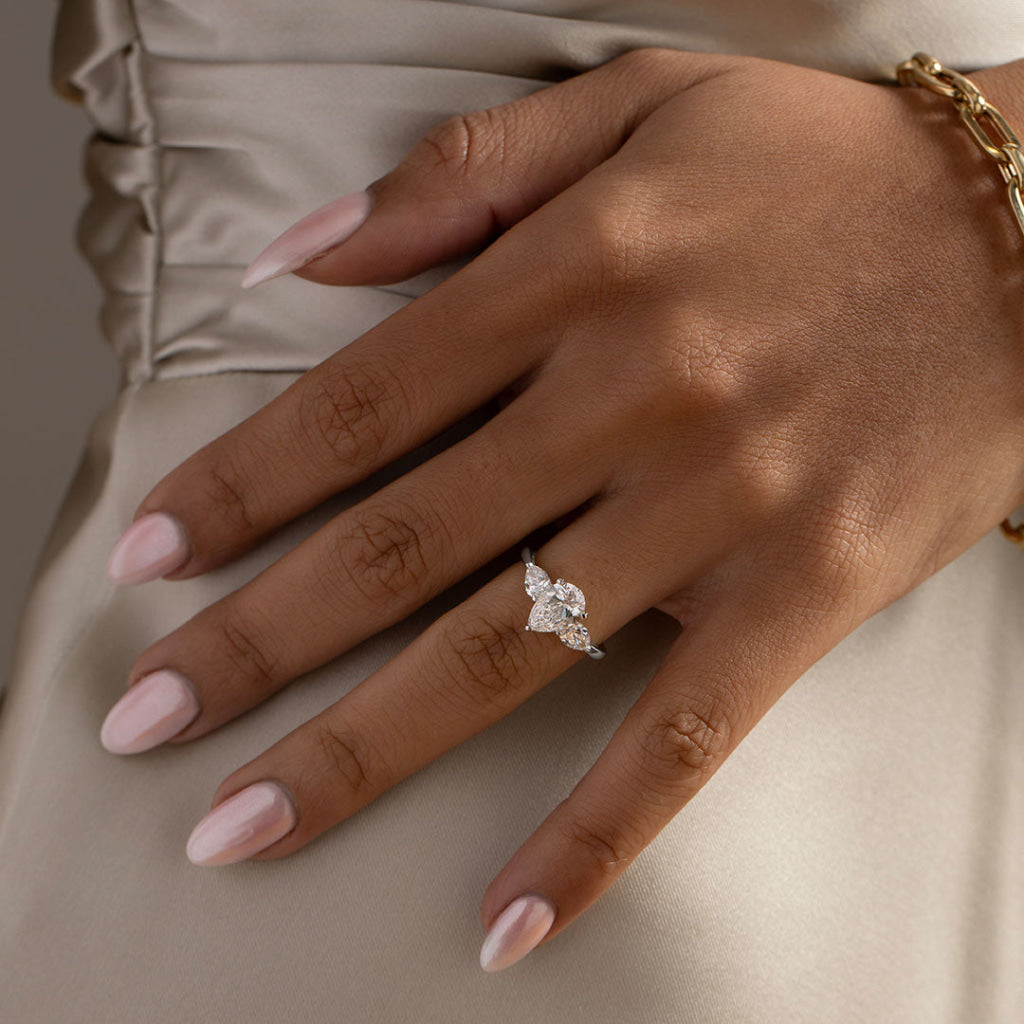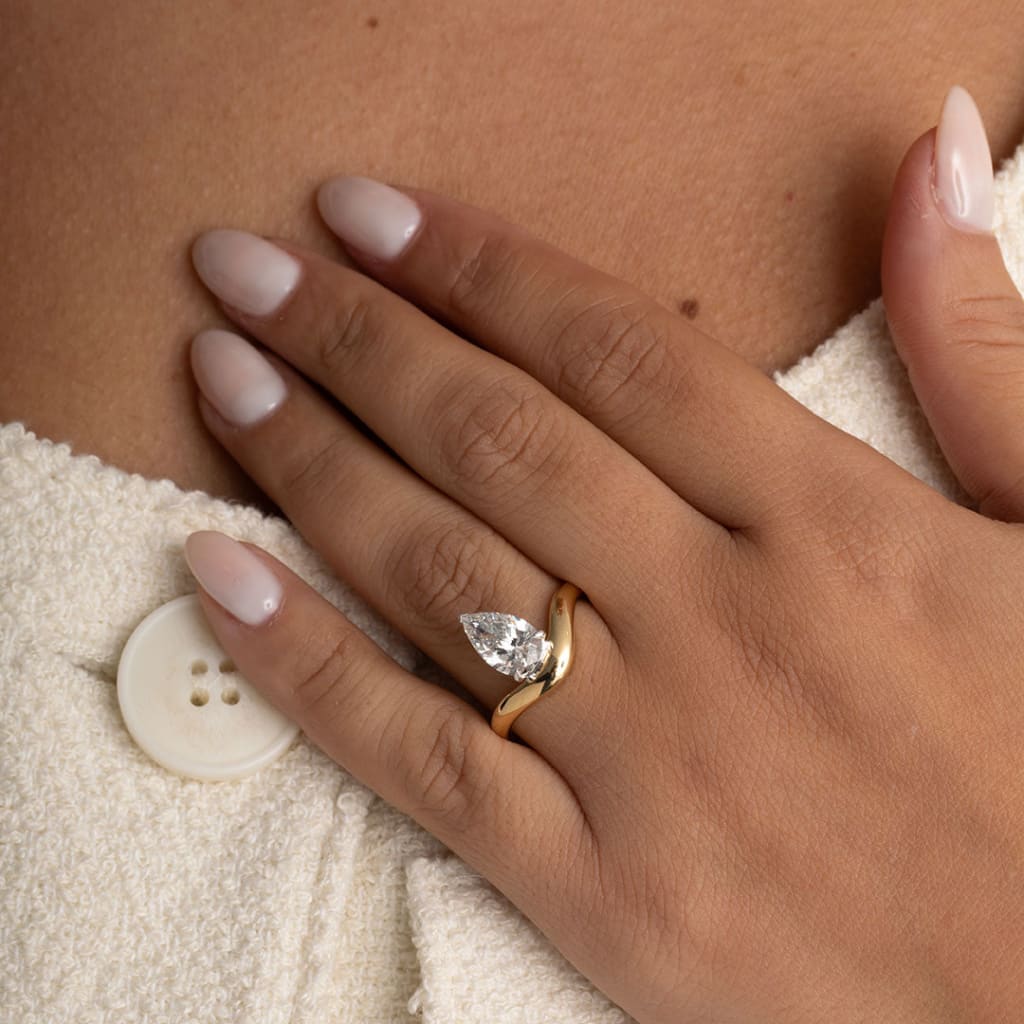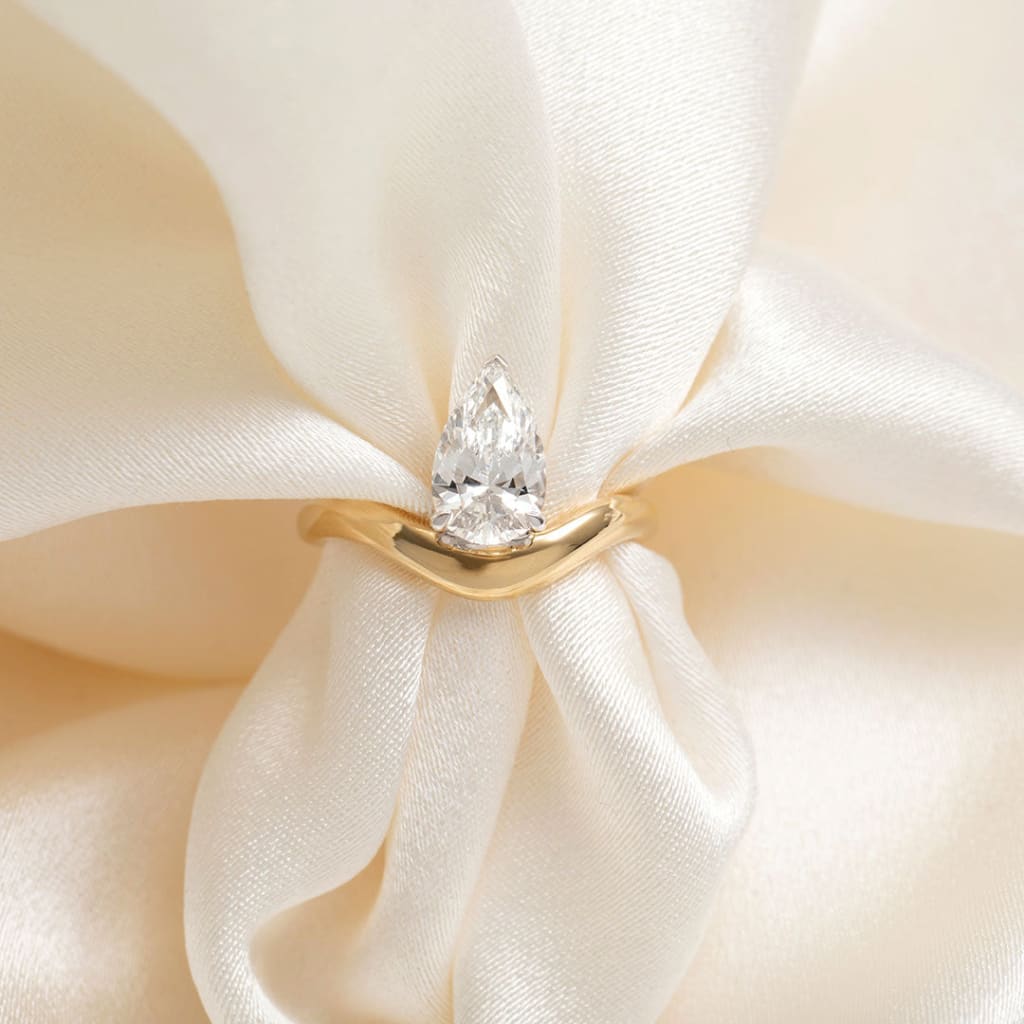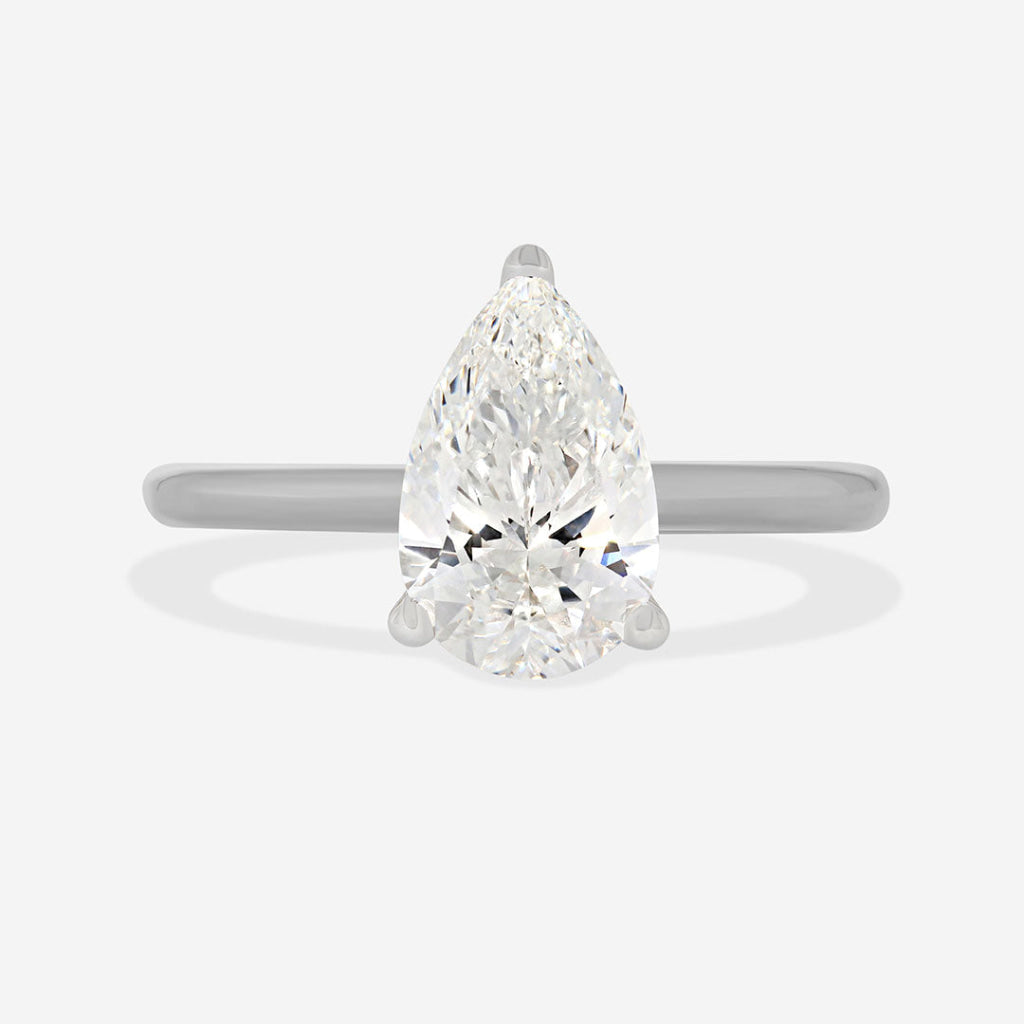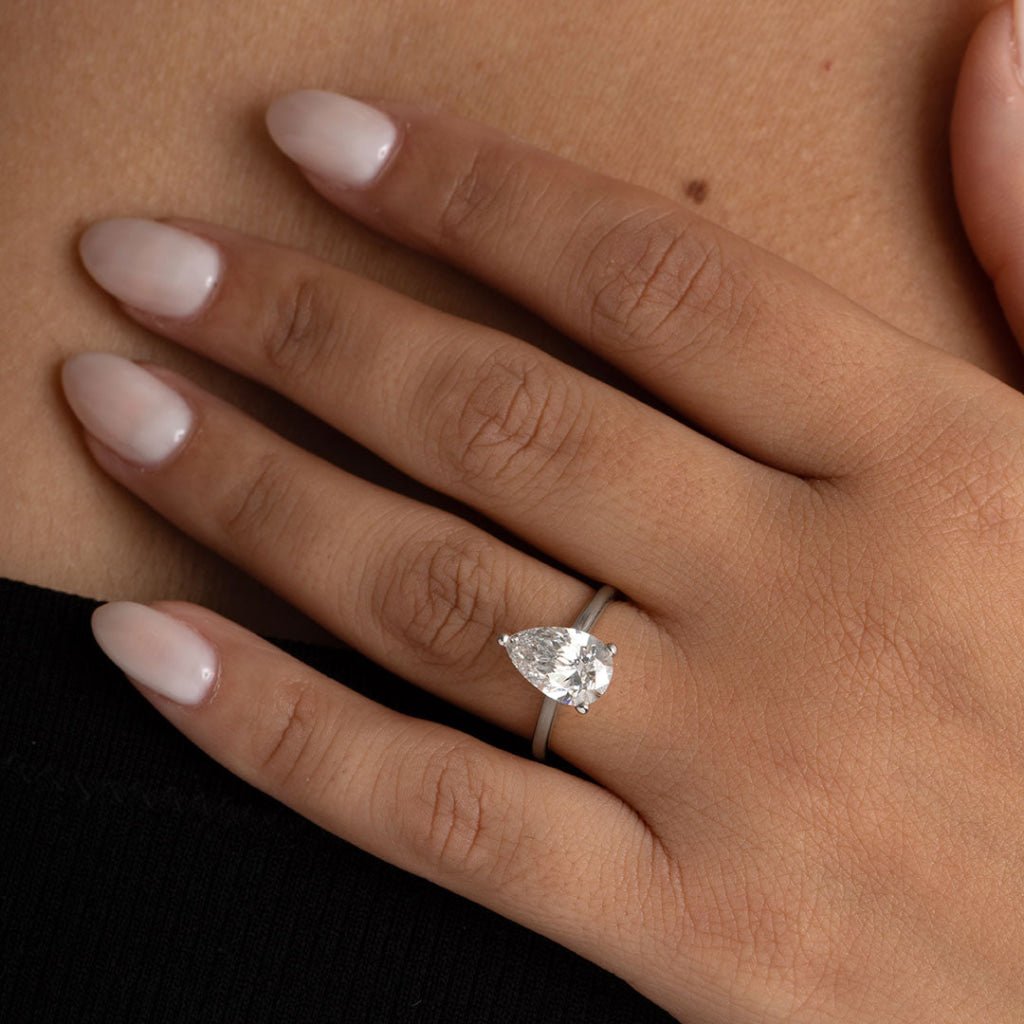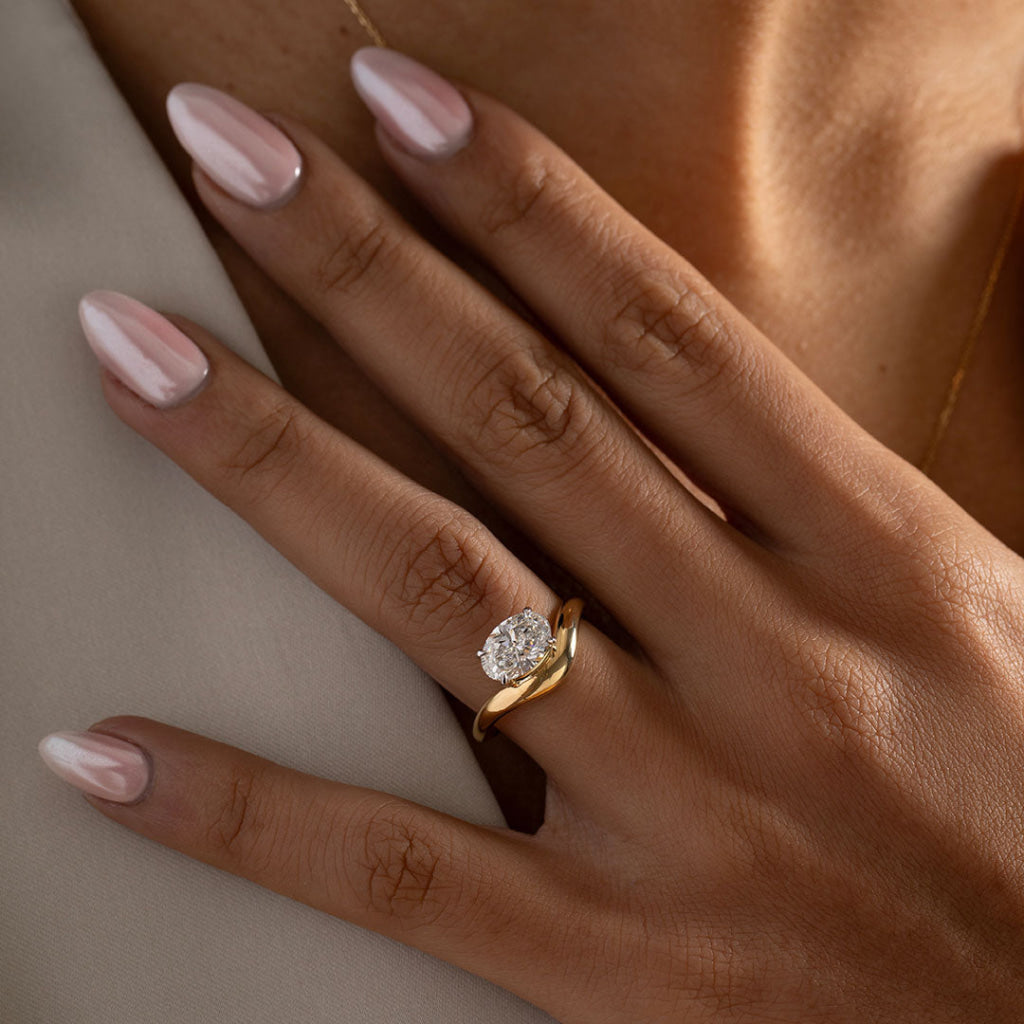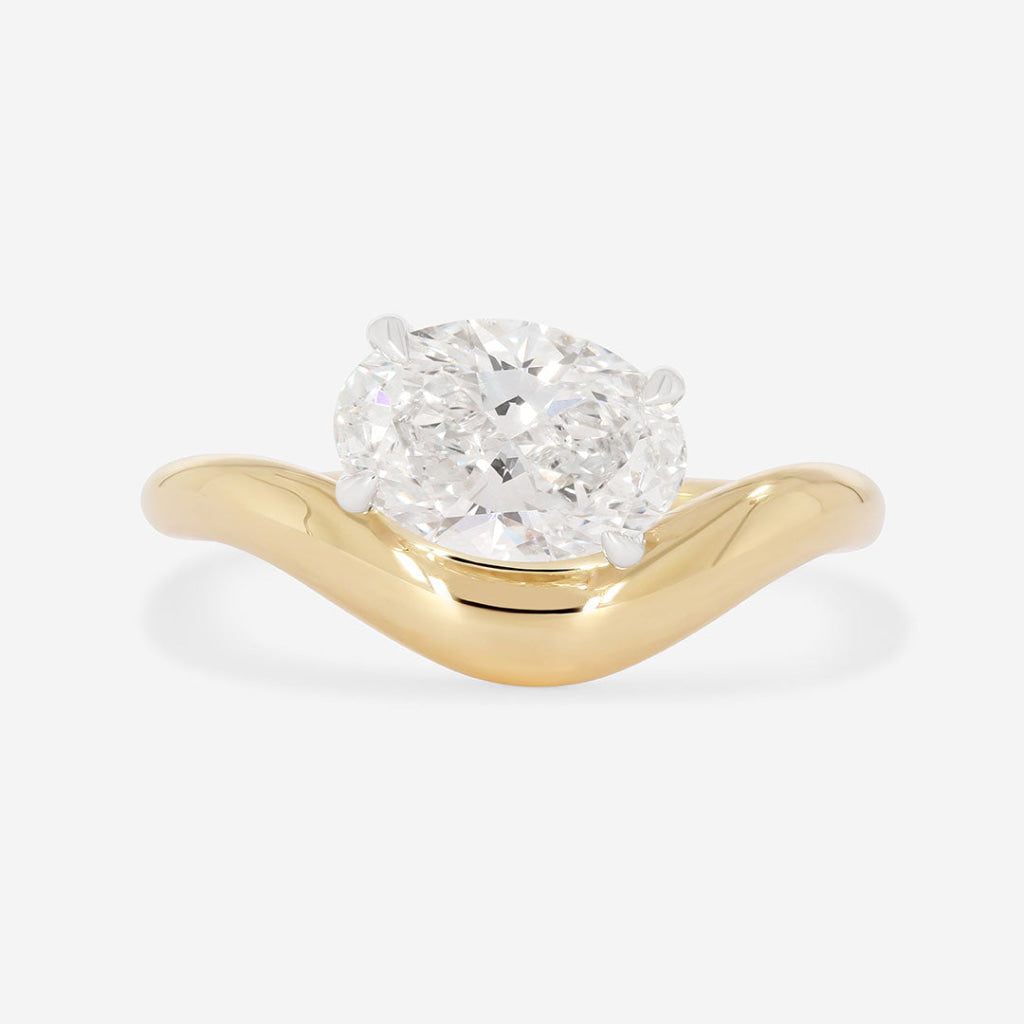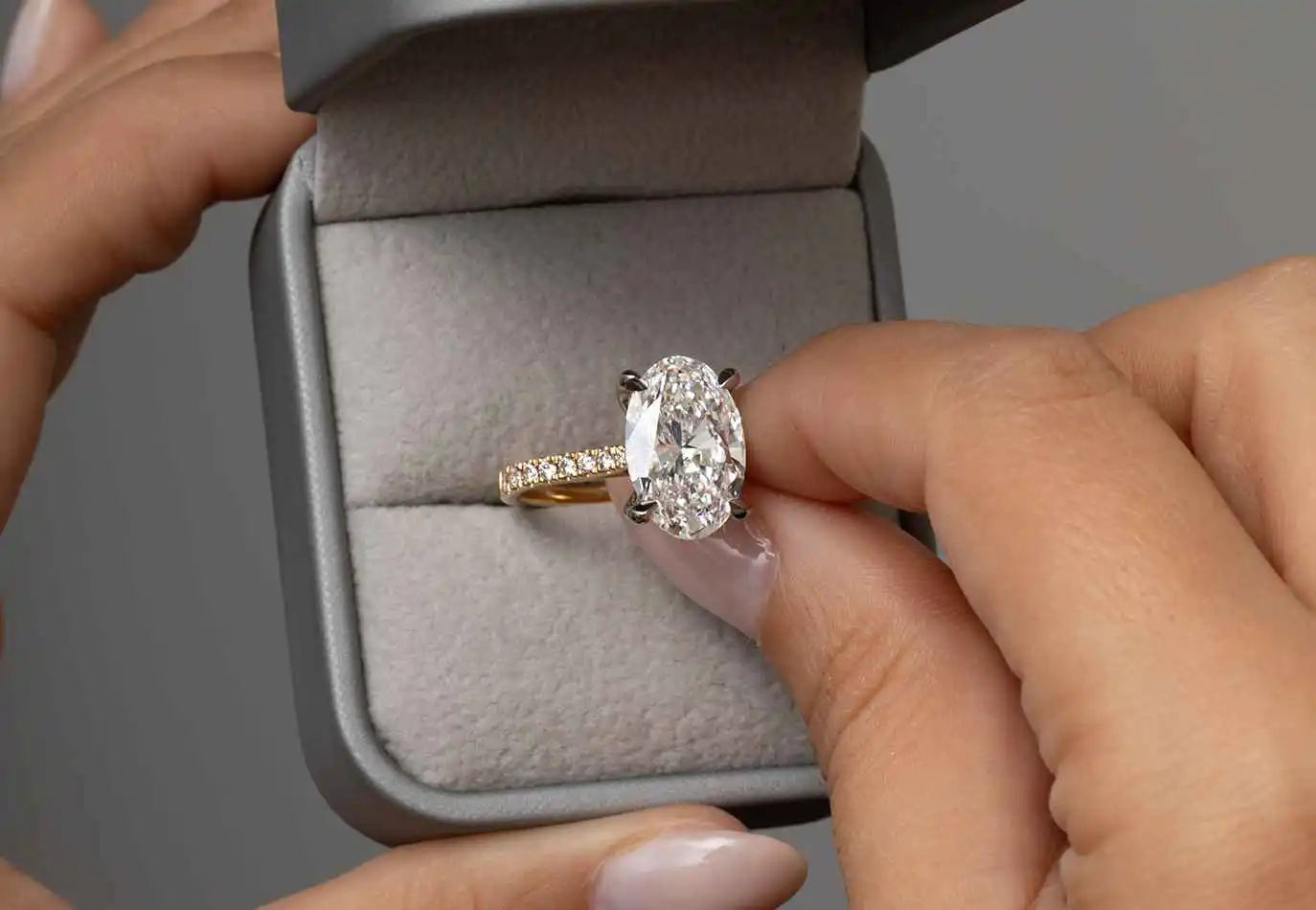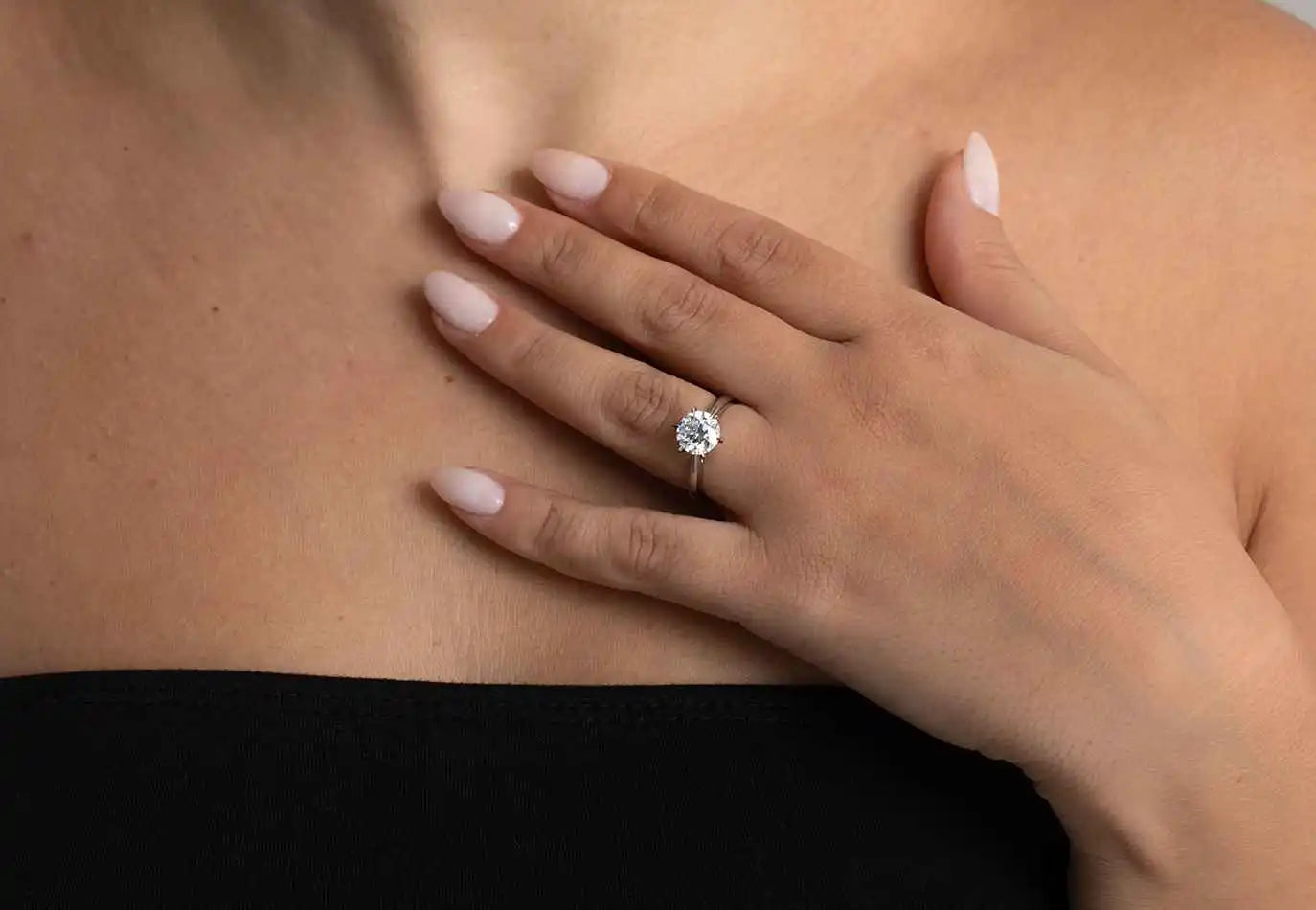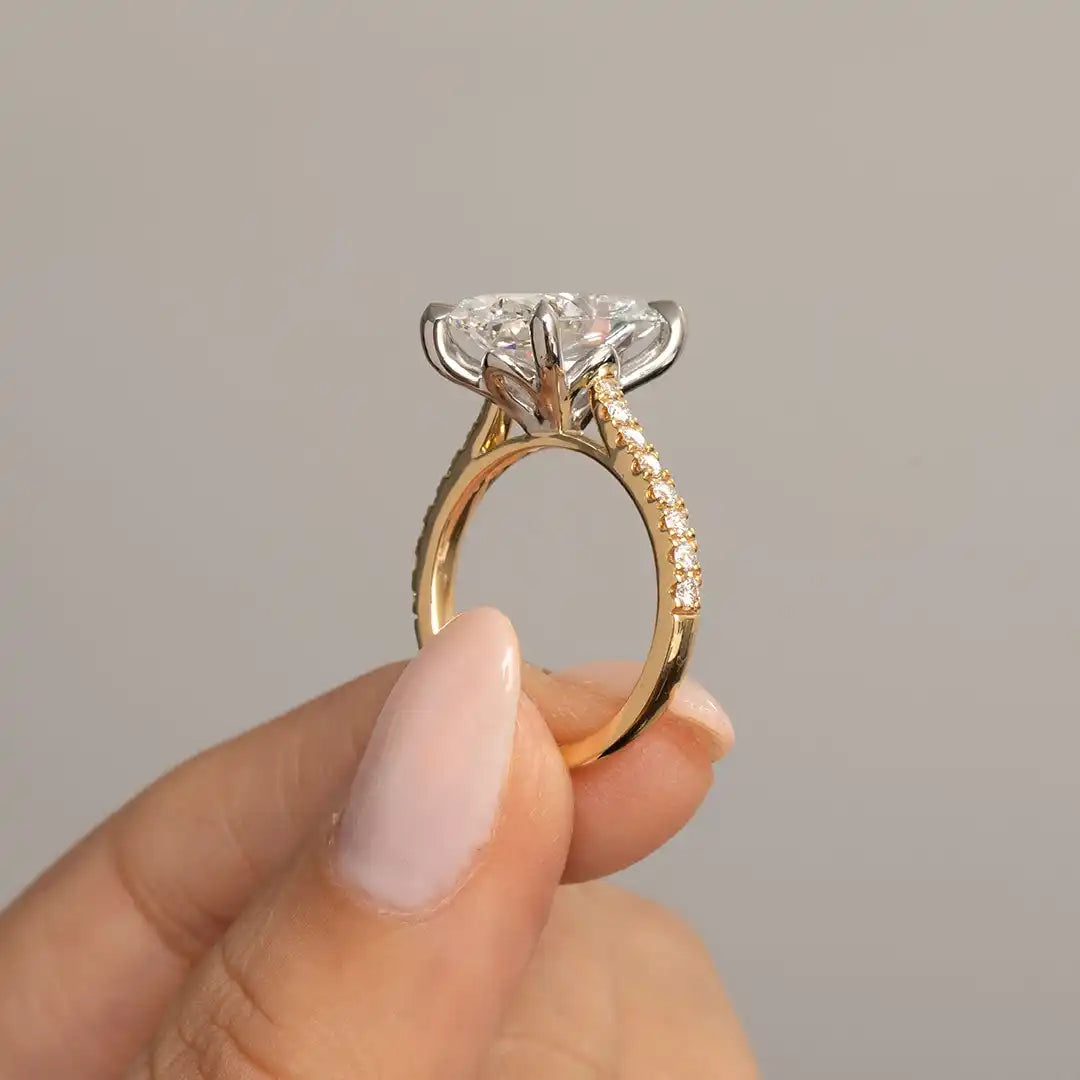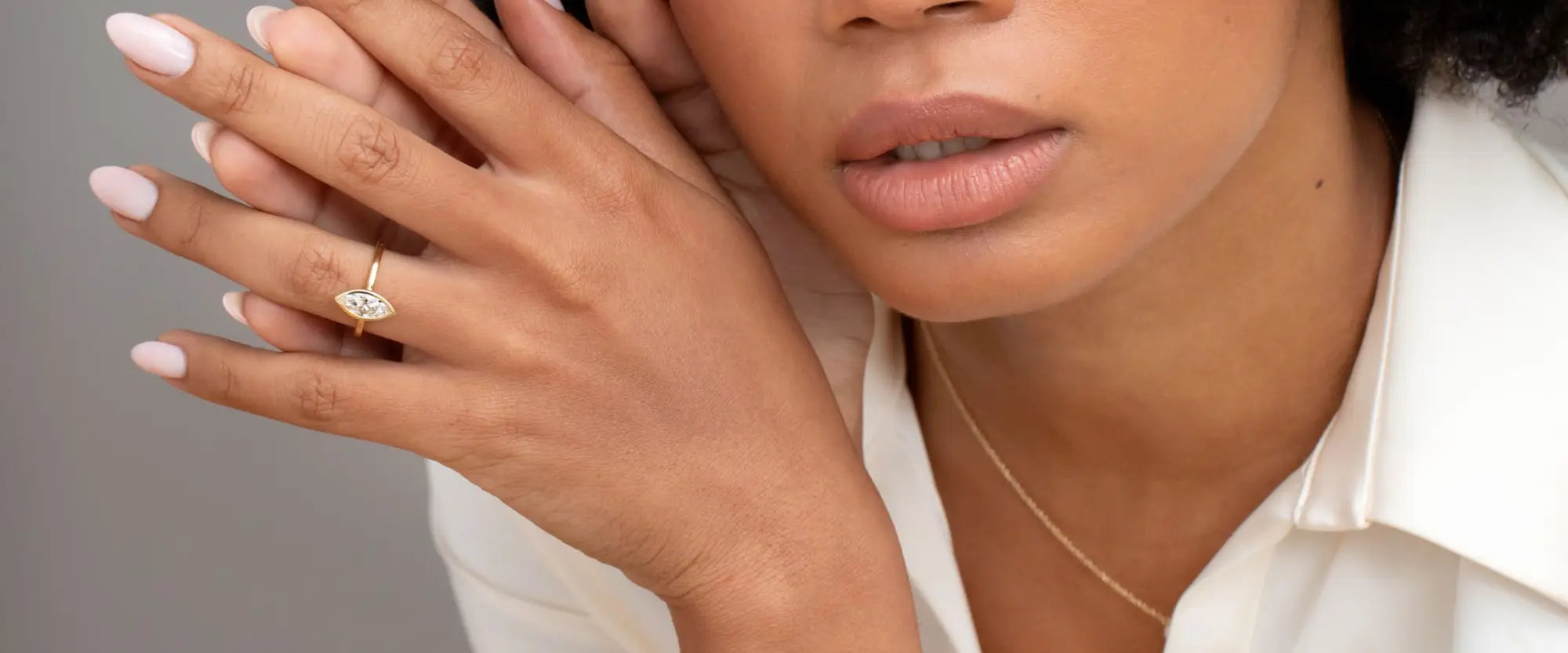
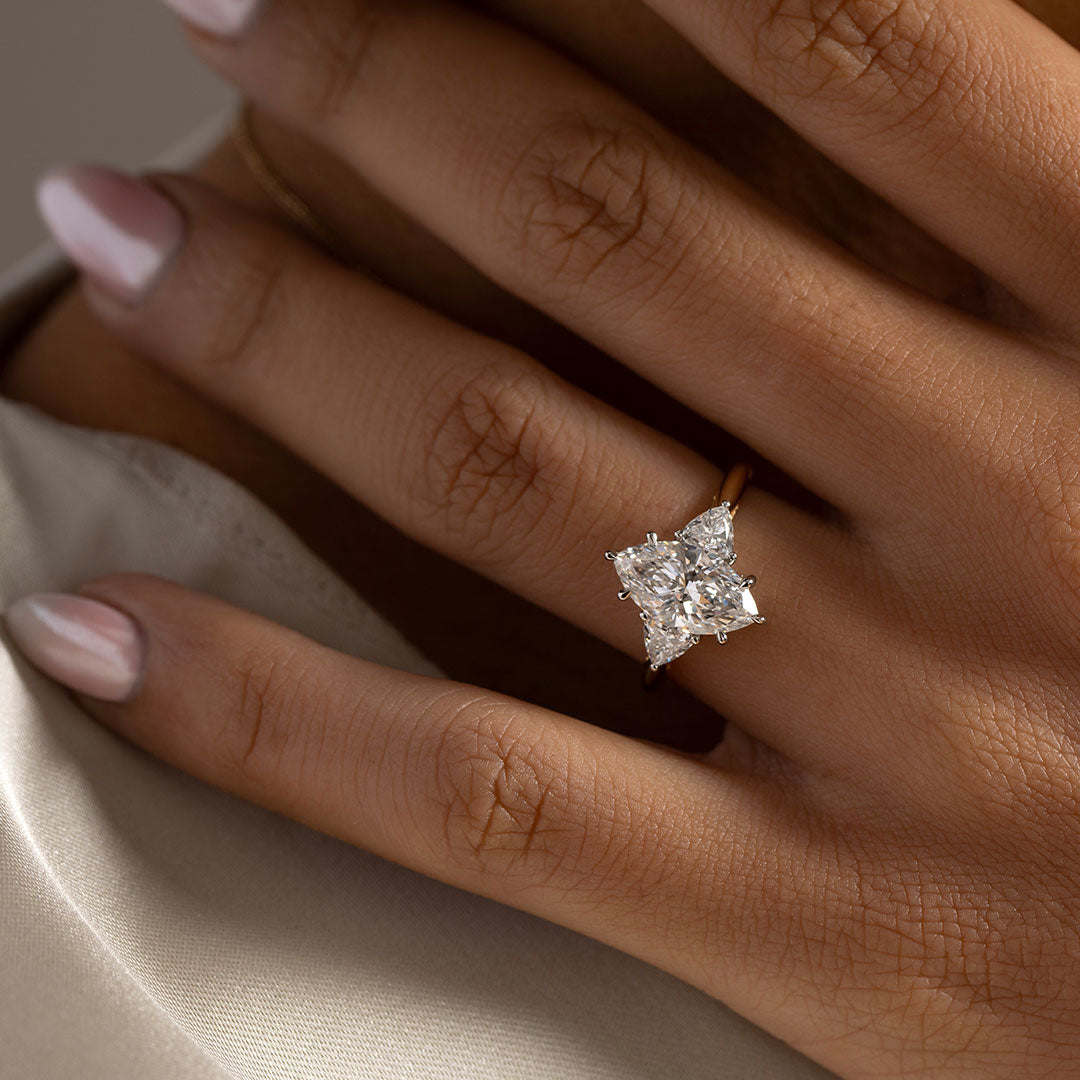
Lab Grown Diamond Engagement Rings
Cheers to Forever Sale 20% Off All Diamond Engagement Rings
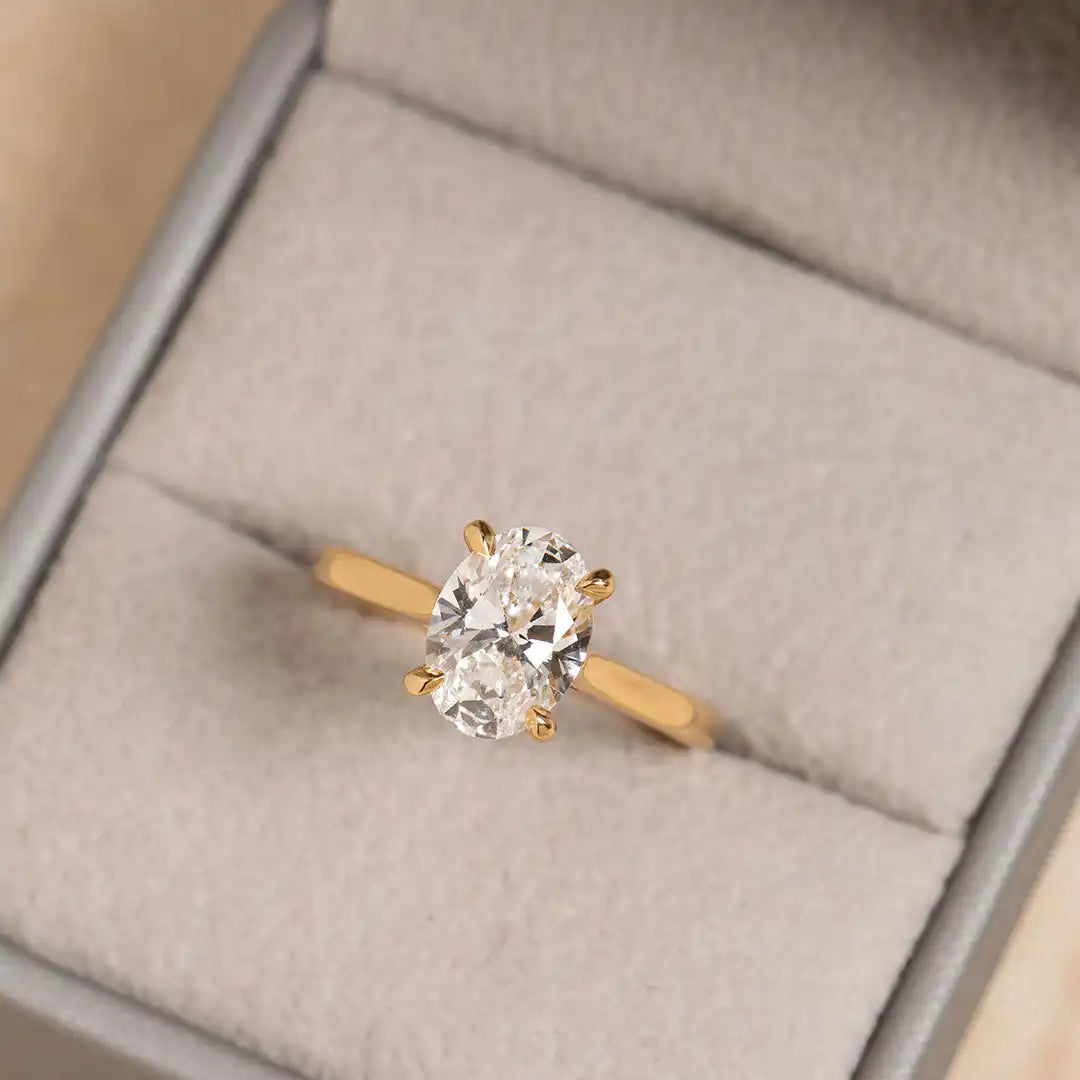
MORE DIAMOND FOR YOUR MONEY
With the advancements in technology, we can now make diamonds in laboratories instead of mining them. This innovative method ensures you can you get exceptional diamonds at a lower cost while also reducing mining impacts on environment and wildlife.
My fiancé surprised me with the most stunning engagement ring from Gears. The elegance, quality, and sparkle of the ring are simply unmatched. Big thanks to them!- Maeve & Cian
Lab Grown Diamonds
Lab-grown diamonds are becoming a favourite for many of our clients, and it's easy to see why. First, they're "real" diamonds. They have the same look, feel, and strength just like natural mined diamonds. Even under a microscope, there's nothing to tell them apart. They look the same, sparkle just as much, and are just as tough (they score a perfect 10 on the Mohs scale). Plus, they come in all sorts of shapes, sizes, and grades, just like mined diamonds.
The bonus? They offer more value for money, allowing clients to either opt for a larger stone or one of better quality within the same budget. On top of that, being produced in labs, they steer clear of the environmental concerns that sometimes surround the diamond industry. That said, if you do choose natural diamonds from us, you can be confident that they are ethically sourced and traceable back to responsible mines that prioritise the environment and ethical practices.
“Lab-grown diamonds are physically and chemically identical to mined diamonds. They shine just as brilliantly but come at a more approachable price thanks to efficient production.
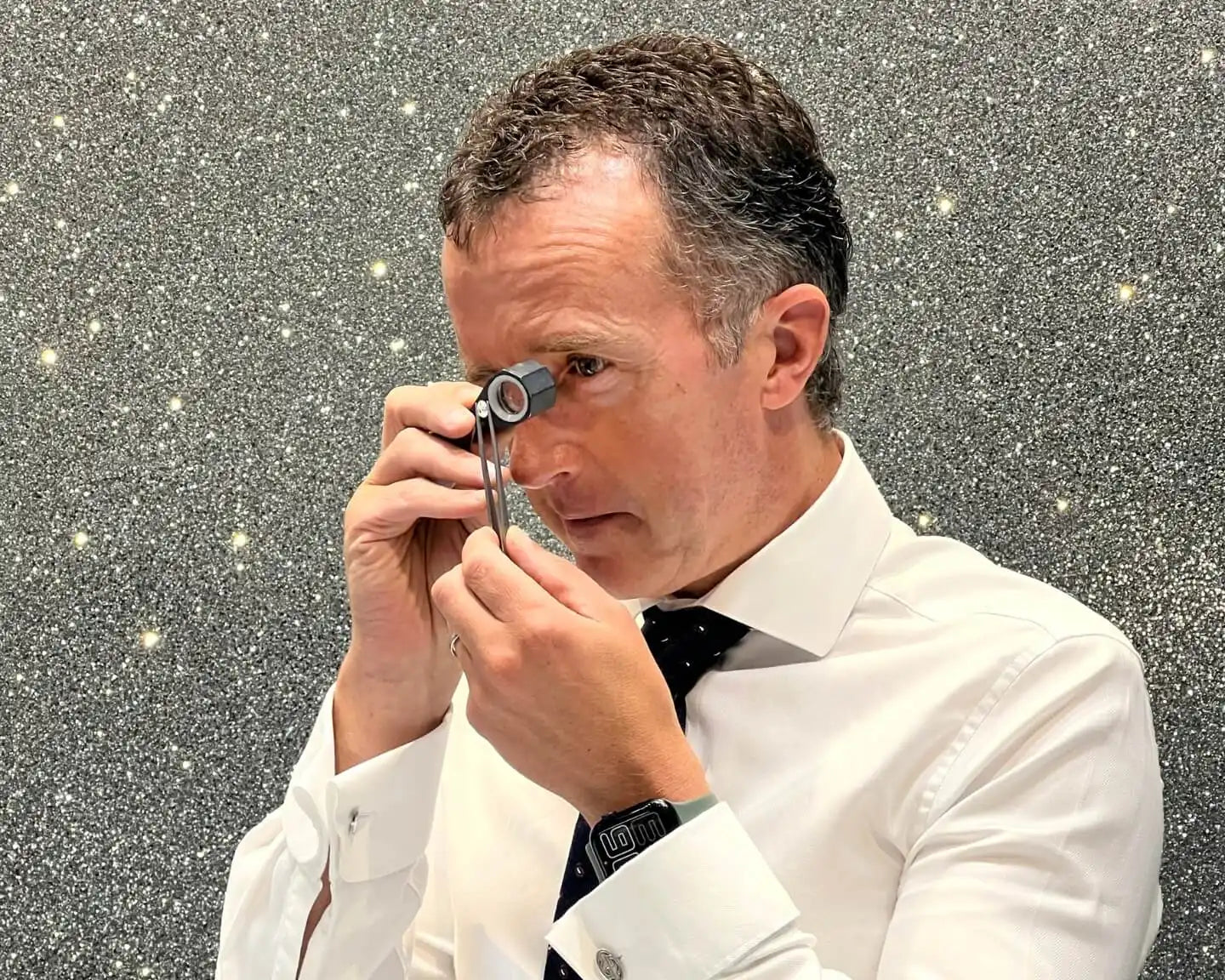
Are lab grown diamonds real diamonds?
Absolutely! Lab grown diamonds are indeed real diamonds. They possess the same physical, chemical and optical properties as mined diamonds because they share the same atomic structure. In fact, even expert gemologists cannot distinguish between lab grown and mined diamonds without specialised equipment. When it comes to brilliance, hardness, and durability, lab grown diamonds shine just as brilliantly as their mined counterparts.
How are Lab Grown Diamonds Graded and Certified?
Lab grown diamonds undergo the same rigorous grading standards as mined diamonds. The Gemological Institute of America (GIA) and International Gemological Institute (IGI) are the most reputable gem grading organisations globally, issue certificates for both mined and lab grown diamonds. These certificates provide detailed information about the diamond's quality characteristics such as cut, colour, clarity, and carat weight. The certification ensures transparency and helps customers make informed choices when selecting their dream engagement ring.
Why choose lab grown diamonds?
Firstly, they offer more value for your money. Carat for carat, lab-grown diamonds come at a more affordable price than mined diamonds. This cost efficiency can allow you to opt for a larger diamond within the same budget, potentially upgrading from a 0.5-carat to a 1-carat ring.
Secondly, lab-grown diamonds are identical to mined ones, both scientifically and visually. You get the same brilliance, sparkle, and longevity, and rest assured, even expert gemologists cannot distinguish between lab grown and mined diamonds without specialised equipment.
And when it comes to design? Lab-grown diamonds are versatile. Whether you're drawn to solitaire settings, halo designs, or various cuts like round or pear, lab-grown diamonds fit seamlessly into any style, ensuring you don't compromise on aesthetics while making staying within budget.
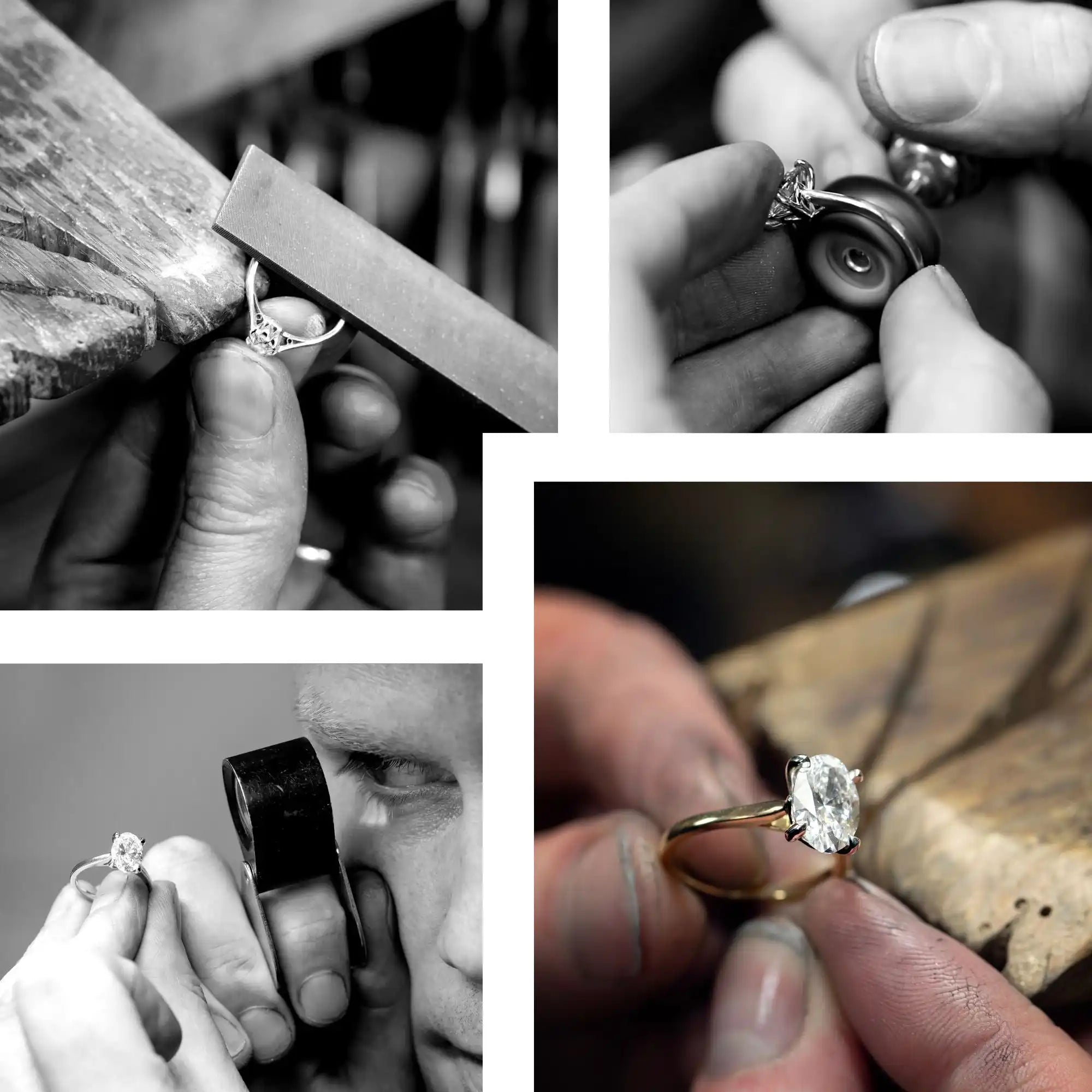
Excellence Beyond Every Ring
All our engagement rings are created with the utmost craftsmanship, quality, and materials. Our dedication to excellence ensures a finish that's a cut above the rest.
As part of our commitment to you, we offer a Lifetime Care Package including one year manufacturer's warranty, free servicing, free resizing and free cleaning, fully inclusive with every ring made by us.
FREQUENTLY ASKED QUESTIONS
Learn About Lab Diamonds
New to the world of lab-grown diamonds? We know you might have questions. Our FAQ section is here to give you clear, concise answers to help you make the best decision.
Lab Diamonds vs Natural Diamonds
Are lab grown diamonds real?
Yes, lab-grown diamonds are real diamonds. They have the same physical, chemical, and optical properties as natural diamonds. The primary difference is their origin: while natural diamonds form deep within the Earth over millions of years, lab-grown diamonds are created in controlled environments using advanced technological processes. In terms of quality and appearance, lab-grown diamonds are indistinguishable from mined diamonds to the naked eye.
What are the other names for lab grown diamonds?
Lab-grown diamonds are often referred to by several names including "cultured diamonds," "synthetic diamonds," "man-made diamonds," or "created diamonds." It's important to note that despite the term "synthetic," these diamonds are genuine diamonds in every sense, just produced in a lab setting rather than mined from the Earth.
Do lab grown diamonds pass diamond tests?
Yes, lab-created diamonds will test as real diamonds because they possess the same physical and chemical properties as natural diamonds. Most standard diamond testing equipment will confirm them as genuine diamonds. Additionally, when these diamonds are certified, the certificate typically mentions their lab-grown origin to differentiate them from natural diamonds, ensuring transparency for buyers.
Are lab grown diamonds as durable as natural diamonds?
Both lab grown diamonds and natural diamonds rank at 10 on the Mohs scale of hardness, making them the hardest known materials. This means that lab grown diamonds, like their natural counterparts, possess exceptional durability and resistance to scratching. Whether lab-created or mined from the Earth, diamonds are renowned for their longevity, making them an ideal gemstone for everyday wear and timeless keepsakes.
Why do lab grown diamonds cost less than natural diamonds?
Lab grown diamonds are more affordable than natural ones mainly because they're produced quickly in controlled labs, eliminating the need for vast mining lands and large teams. This efficient and cost-effective process, which requires fewer resources, makes them a budget-friendly alternative without compromising on the sparkle.
Price & Value
How much cheaper is a lab grown diamond?
Lab grown diamonds are typically 30% to 60% less expensive than mined diamonds of comparable size and quality. This difference is primarily due to the more efficient and cost-effective production process of lab diamonds. It's worth noting, however, that the price difference can vary based on factors like carat size, clarity, colour, and overall market demand.
Will lab grown diamonds hold their value?
Lab-grown diamonds are relatively new to the market, and as such, their future value remains uncertain. It's possible that the price gap between lab-grown and natural diamonds could either widen or narrow in the coming years. It's worth noting that both lab grown and mined diamonds see similar depreciation when resold. As always, it's best to buy a diamond for its sentimental value and beauty rather than as an investment. For those thinking of investments, pure gold might be a more stable choice.
Are lab grown diamonds certified?
Yes, lab grown diamonds are certified just like natural diamonds. Leading gemological laboratories such as the Gemological Institute of America (GIA) and the International Gemological Institute (IGI) offer grading reports for both natural and lab-grown diamonds. These certificates provide details on the diamond's cut, clarity, color, carat, and as well as its origin. Always check for a certification when buying any diamond to ensure its authenticity and quality.
Why are lab grown diamonds so expensive?
Lab-grown diamonds are still a significant investment, and here's why: they are genuine, authentic diamonds. While they're made using advanced techniques, the process demands high-tech equipment and skilled experts. Despite being lab-created, they are not abundant, maintaining a certain rarity. So while they are more affordable than natural diamonds, their rarity, combined with the technology and expertise required for their creation, does influence their price.
Can lab grown diamonds be insured?
Absolutely. Insuring your lab-grown diamond ring is just as essential as any other valuable purchase. Often, the cost to insure a lab-grown diamond is less than a natural one. Your chosen insurance provider will typically request a copy of your order appraisal to determine the cost of insurance.
Making Lab Diamonds
How long does it take to make a lab grown diamond?
Lab-grown diamonds can be produced using HPHT or CVD methods, typically taking between a few days to 3 weeks, depending on size, quality, and specific technique employed. The process involves replicating the intense heat, enormous pressure and exposure to a mix of gases that diamonds face deep within the Earth, but in a controlled lab environment.
Are lab grown diamonds flawless?
No, lab-grown diamonds are not inherently flawless. Just like natural diamonds, they can have inclusions and blemishes. The clarity of a lab-grown diamond depends on the conditions of its creation and the quality of the raw materials used. While it is possible to produce high-clarity lab diamonds, most of them will not be flawless.
Is it possible to make a lab grown diamond at home?
No, creating a lab-grown diamond at home is not feasible. Producing diamonds in a laboratory requires specialized equipment, high temperatures, extreme pressure, and expert knowledge. The processes used, like High Pressure High Temperature (HPHT) and Chemical Vapor Deposition (CVD), are complex and necessitate precise conditions that can't be replicated in a home setting.
Do lab grown diamonds come in different colours?
Yes, lab-grown diamonds are available in various colours. These hues arise from specific impurities or structural changes during their creation. Blue is due to boron, yellow from nitrogen atoms, and pink or red results from alterations in the diamond's crystal lattice. These vibrant shades showcase the detailed processes of diamond formation, both in nature and the lab.




